Trek Domane+ SLR is an e-bike with all the ride sensations of a traditional road bicycle
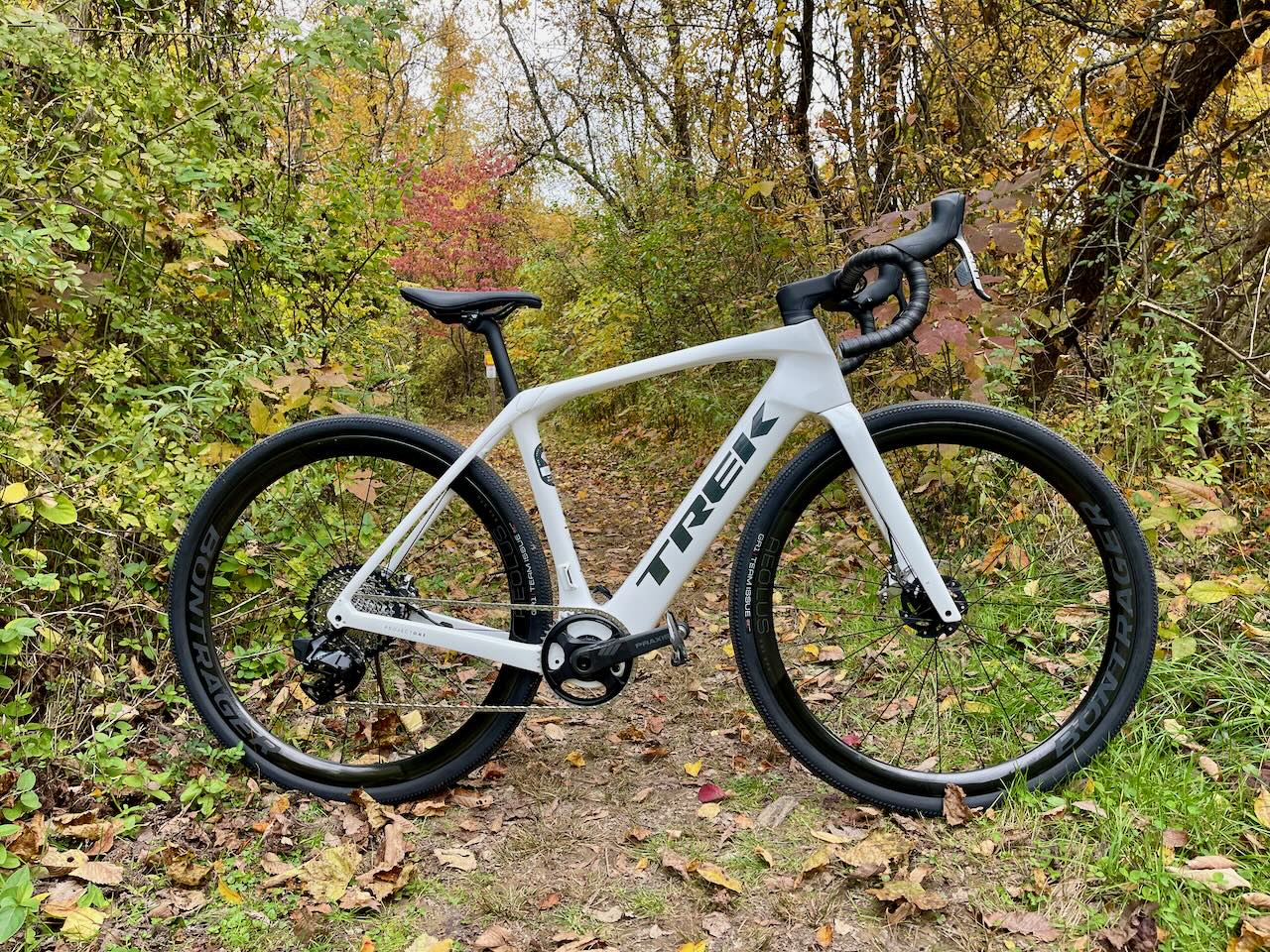
- Click to share on Facebook (Opens in new window)
- Click to email a link to a friend (Opens in new window)
Trek’s Domane+ SLR is genuinely an all-new animal for road riding. Trek uses its newly updated Domane frameset and the TQ (Technologie in Qualität) HPR50 to craft an all-road e-bike that feels traditional but is anything but.

The design focus for the Domane+ SLR was to create an e-bike with natural road bike sensations with a seriously impressive weight-to-speed ratio. The lightest offering for the Domane+ SLR tips with scales at around 25.90lbs with a 28 mph (25 km/h in Europe) max assist.
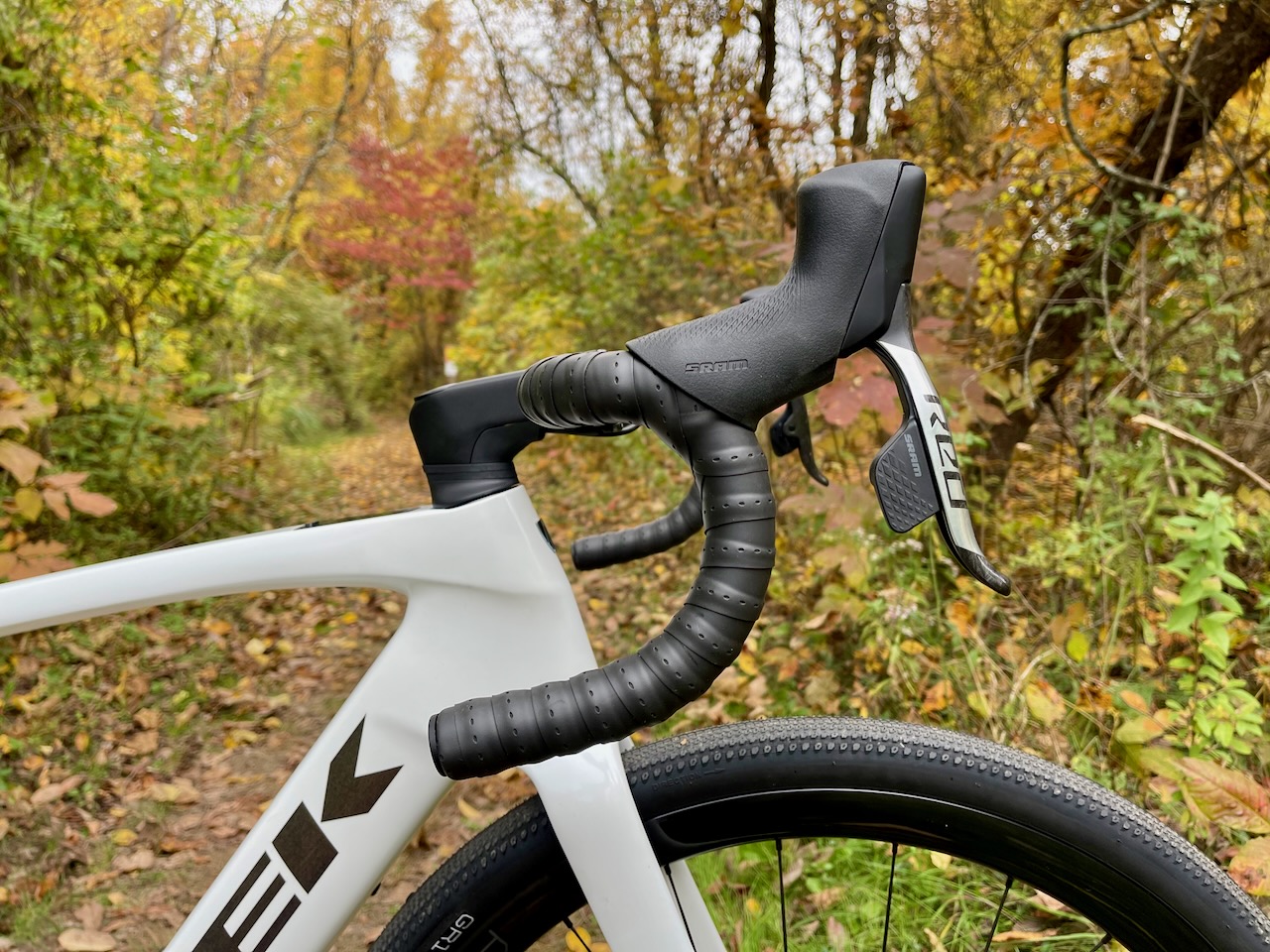

Trek Domane+ SLR
The mission of the Domane+ SLR is to give a road bike experience with a featherweight frame and a boost when you need it. To give the rider that needs an extra push for the adventure they dream of without the extra weight of a traditional e-bike. The Domane+ SLR doesn’t look, sound, fit, or feel like an electric bike, and that’s exactly what Trek wanted.
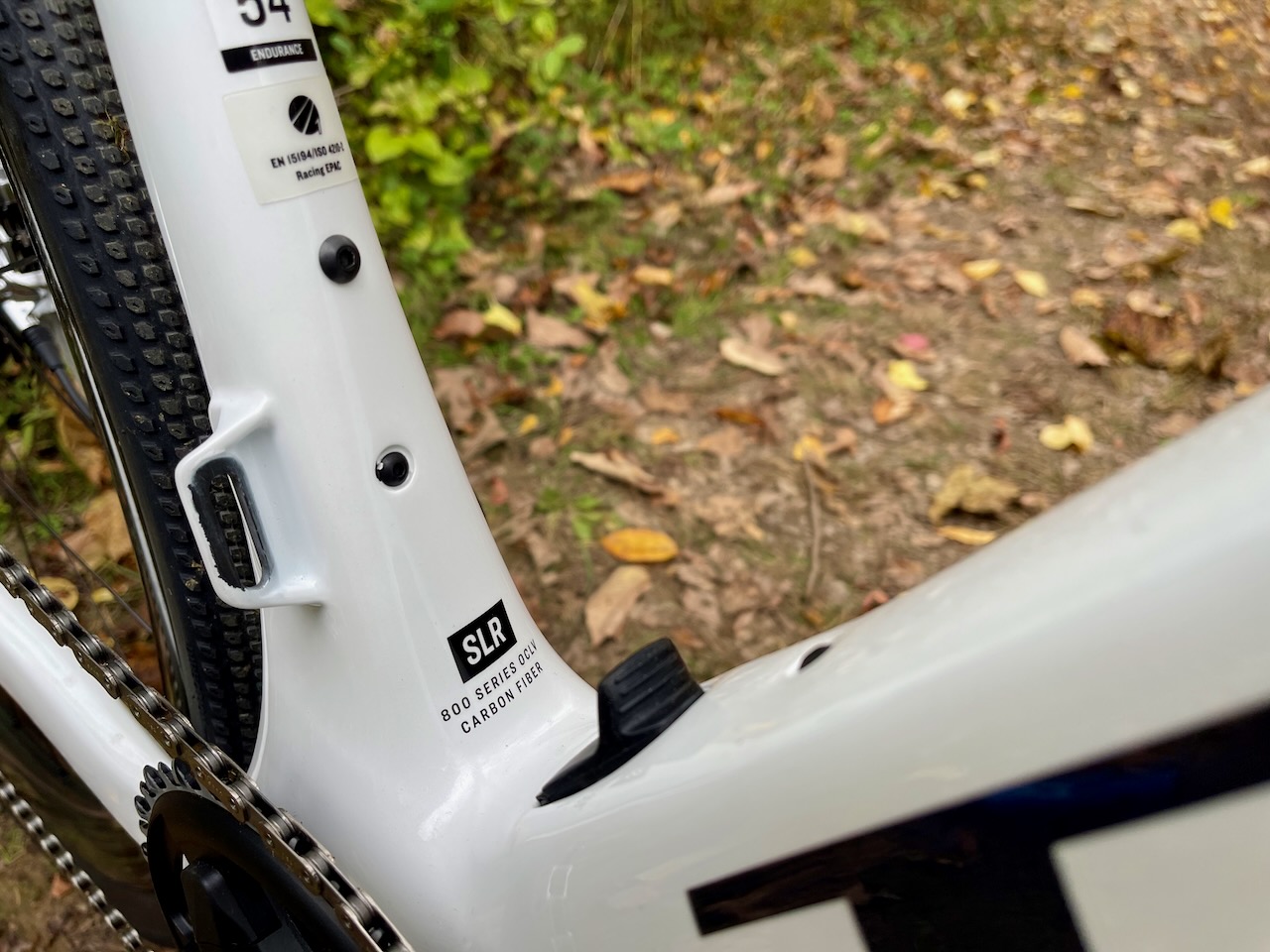
Domane+ SLR — 800 series OCLV carbon
A significant change in design for the new Domane+ SLR is the decision to use Treks’ 800 series OCLV carbon. The 800 carbon series is Trek’s top road and performance line carbon. The move to 800 series carbon allowed the design team to craft a lighter frame by eliminating excess carbon around the battery (more on that later) and harness a better overall ride quality.
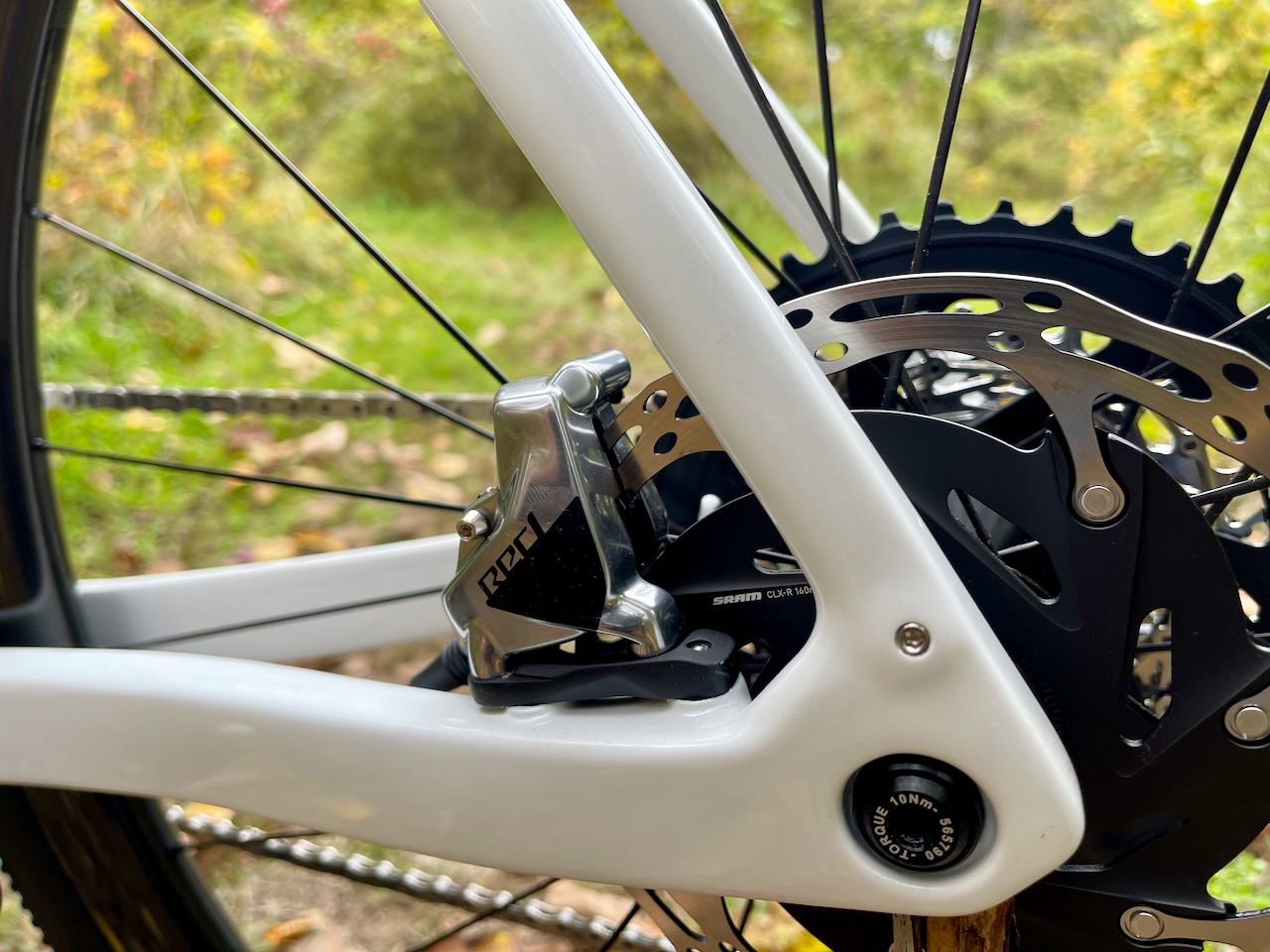
The new Domane+ SLR frame features 100×12 mm front, and 142×12 mm rear spacing, with mounts for fenders and small accessories. The frame does not come with internal storage like the acoustic Domane but should fit all manner of frame bags easily.

For those that heed the call to adventure, take note the tire clearance grows from a generous 35mm for the acoustic Domane to 40mm for the Domane+ SLR. The Domane+ SLR 9 eTap pictured above supports a 40mm Bontrager GR1 tire mounted to a Bontrager RSL 37 rim with a 21mm internal and 26mm external.

Assist modes: Ride far, ride fast, ride often
Domane+ SLR has a max assist of up to 28 mph, with a 360-watt/hour battery. That range can take riders around 60 miles in Eco-mode or around 90 miles with the optional 160-watt/hour Range Extender.
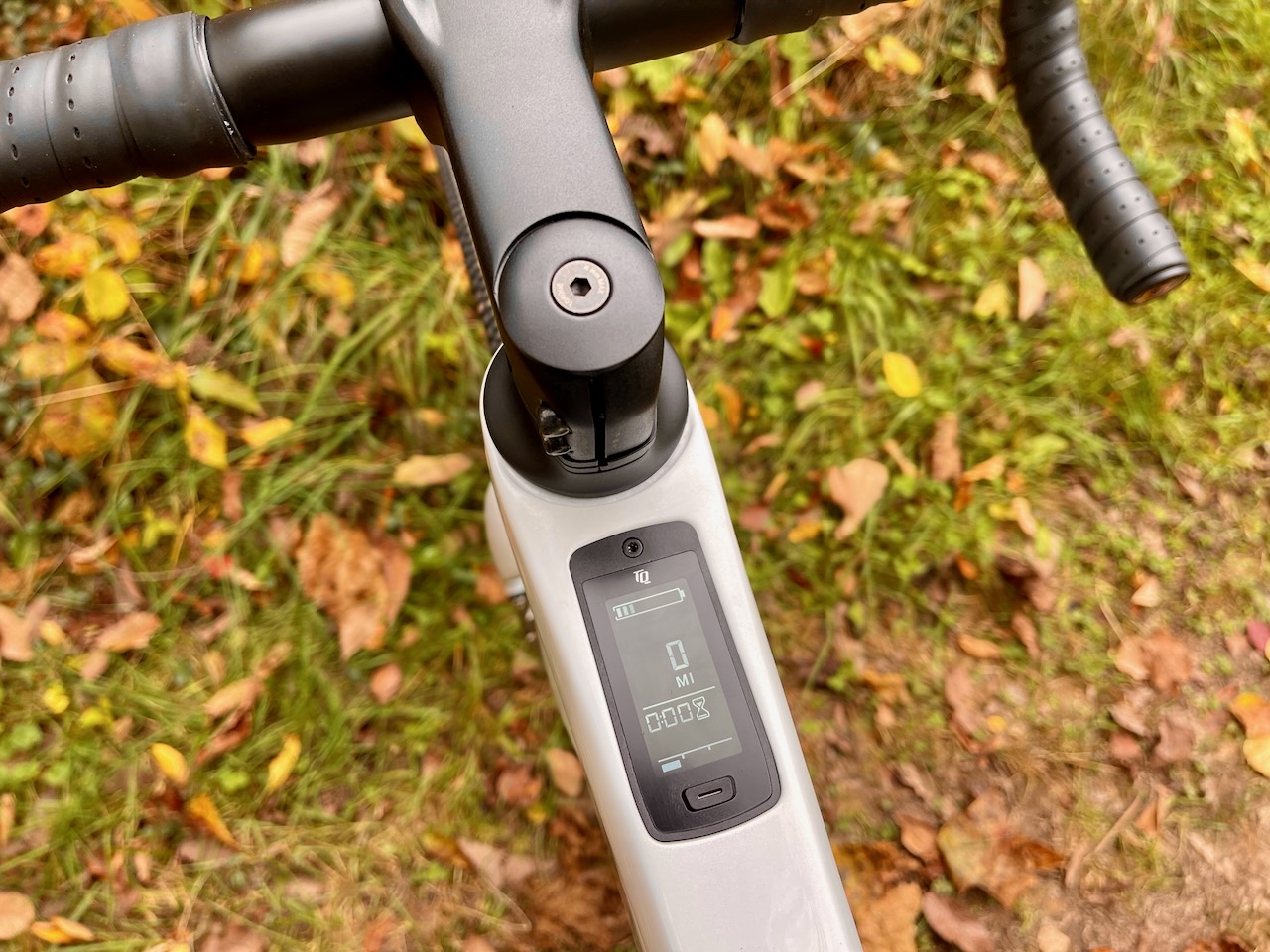
The Domane+ SLR comes from the factory with three assist modes; Eco, Mid, and High. You can now customize each mode and plan routes in the new Trek app. The app also allows you to see how far your current battery charge will take you and allow you to make adjustments to the assist, ensuring you get to the end of the ride. Though the app works great, the integrated top tube display is in plain sight and will give you the ride details when needed.

What’s the motor?
If you saw the new Trek Fuel EXe announcement , we’re guessing you know which motor comes on this new Domane+. The TQ-HPR50 harmonic pin ring e-system motor. This motor is remarkably lightweight (3900g), tranquil, and gives a boost without the lurch of some e-bike motors.
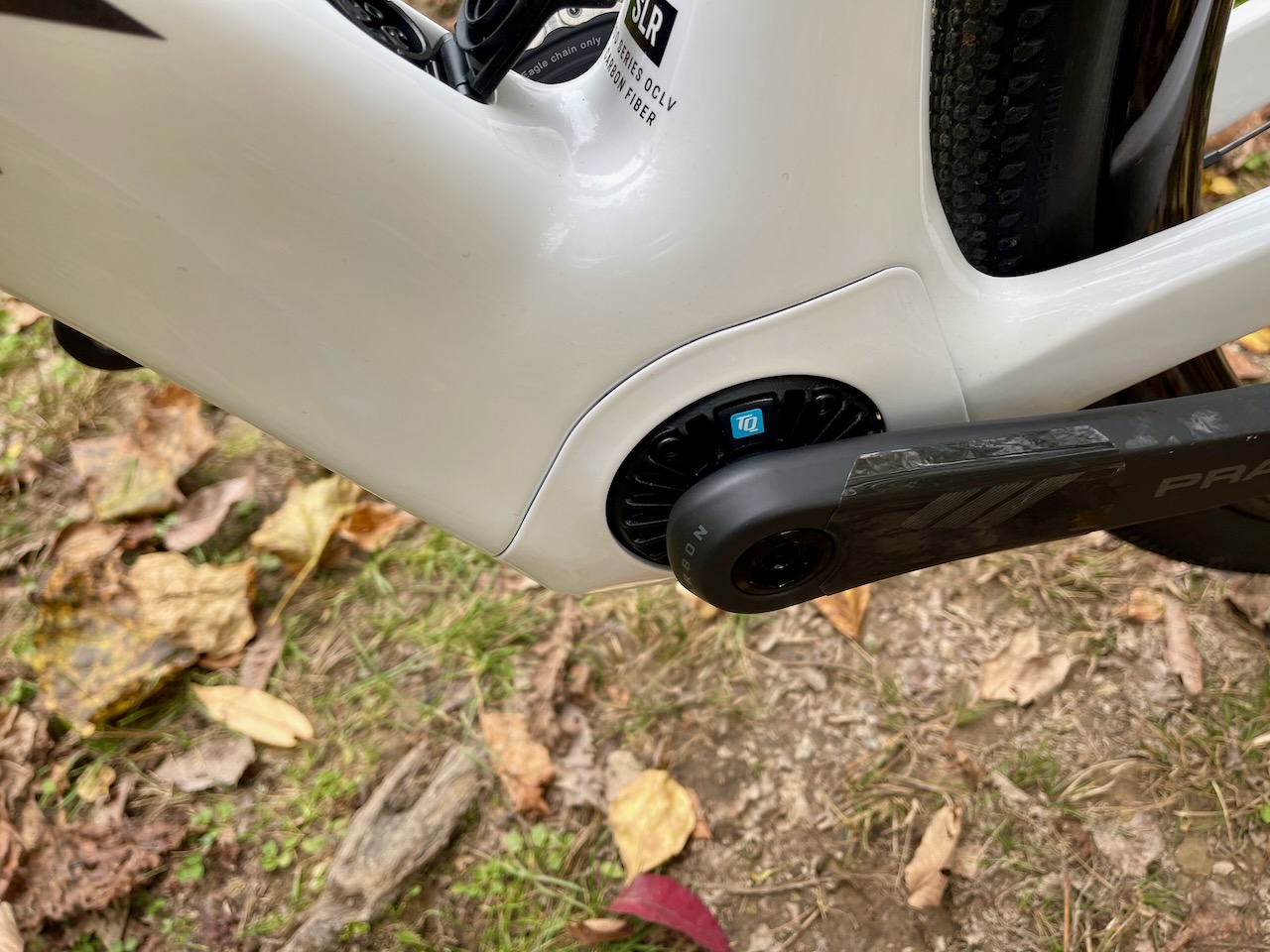
What is a pin motor? In a nutshell, most e-bike motors use gears and belts to transmit power. These parts take up more space and can make noise or break. The HPR50 uses a harmonic drive transmission that’s small, simple, and dependable. To learn more about the workings of the new TQ motor, check out our deep dive into the TQ HPR50 here .
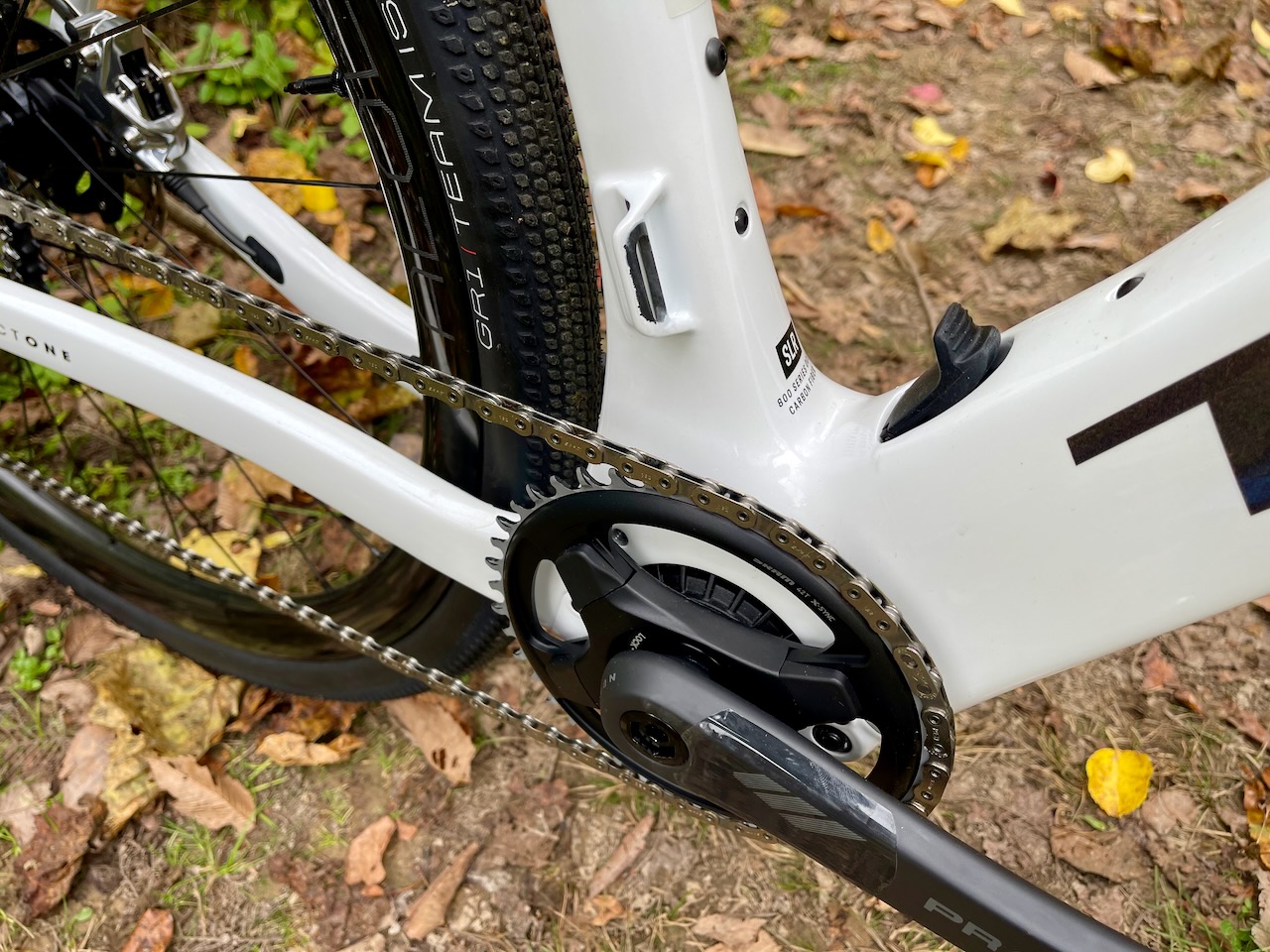
Using the TQ motors, designers employed a close-to-standard road Q factor of around 163mm. This narrow Q-factor helps riders from a traditional road bike make the switch naturally and not feel like riding a horse or fat bike.
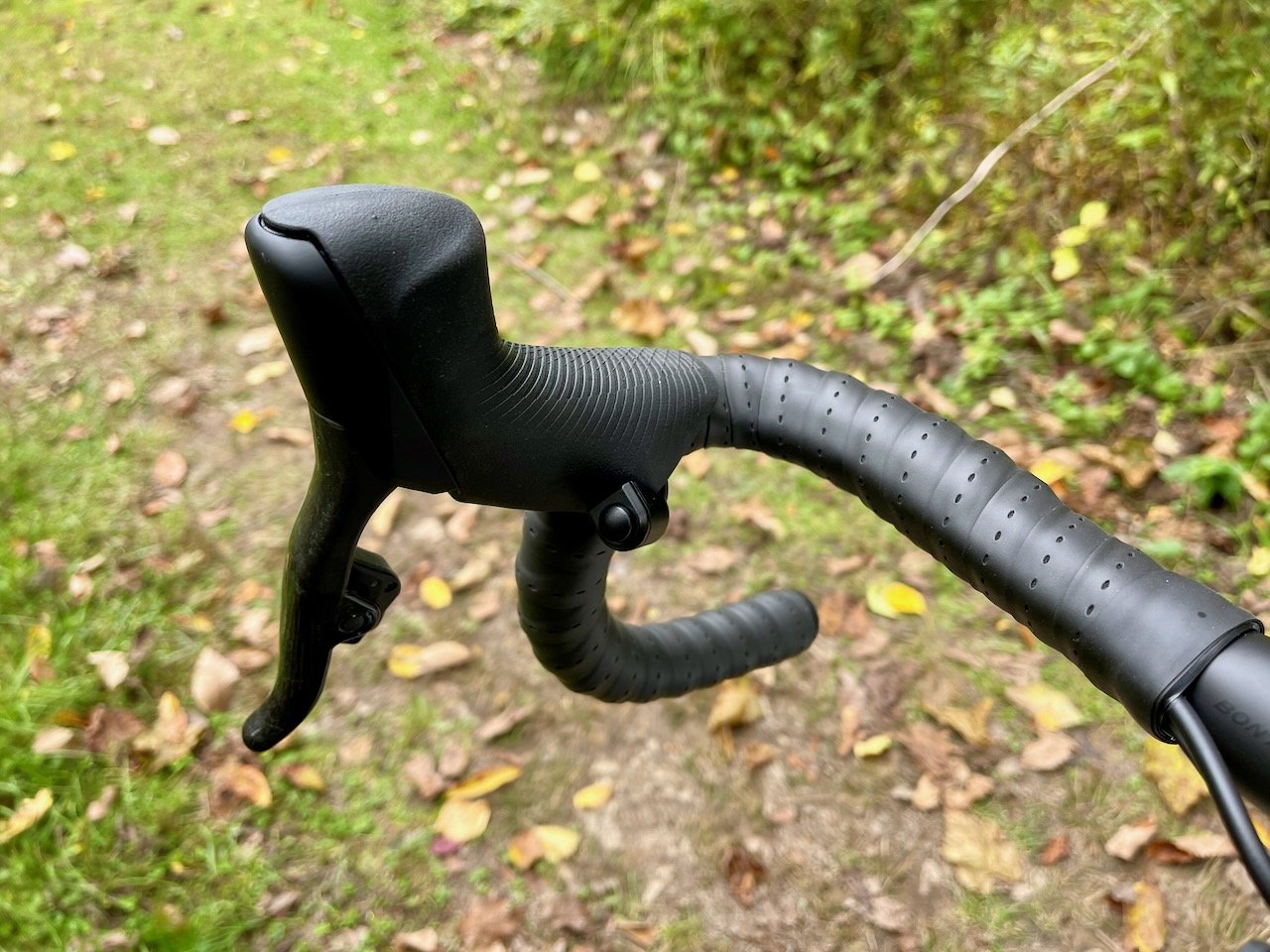
Assist at the shifter
Trek opted to move the assist mode adjustment closer to the shifter, helping riders keep their hands in one place, making for an immaculate presentation. The intuitive mode control buttons on the hoods and road-specific tune give Domane+ SLR a traditional road bike fit and feel while still providing a natural-feeling boost.
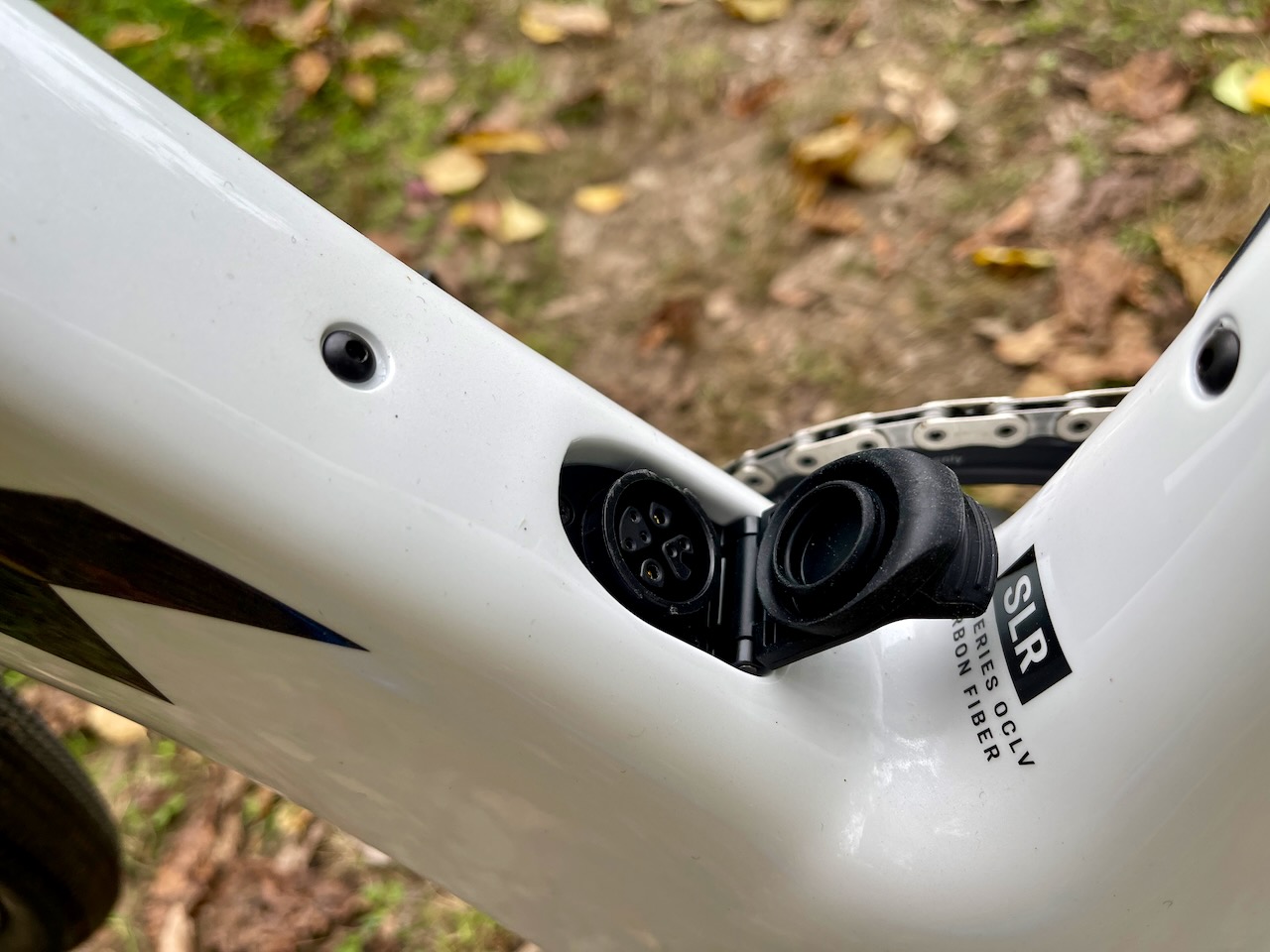
Where is the battery?
I asked this question when our review bike arrived; the simple answer….was it’s IN the frame (best Zoolander voice). Having the battery molded into the frame of the new Domane+ SLR allowed the design team to cut weight (carbon and battery fittings) and make the frame as sleek looking as possible.
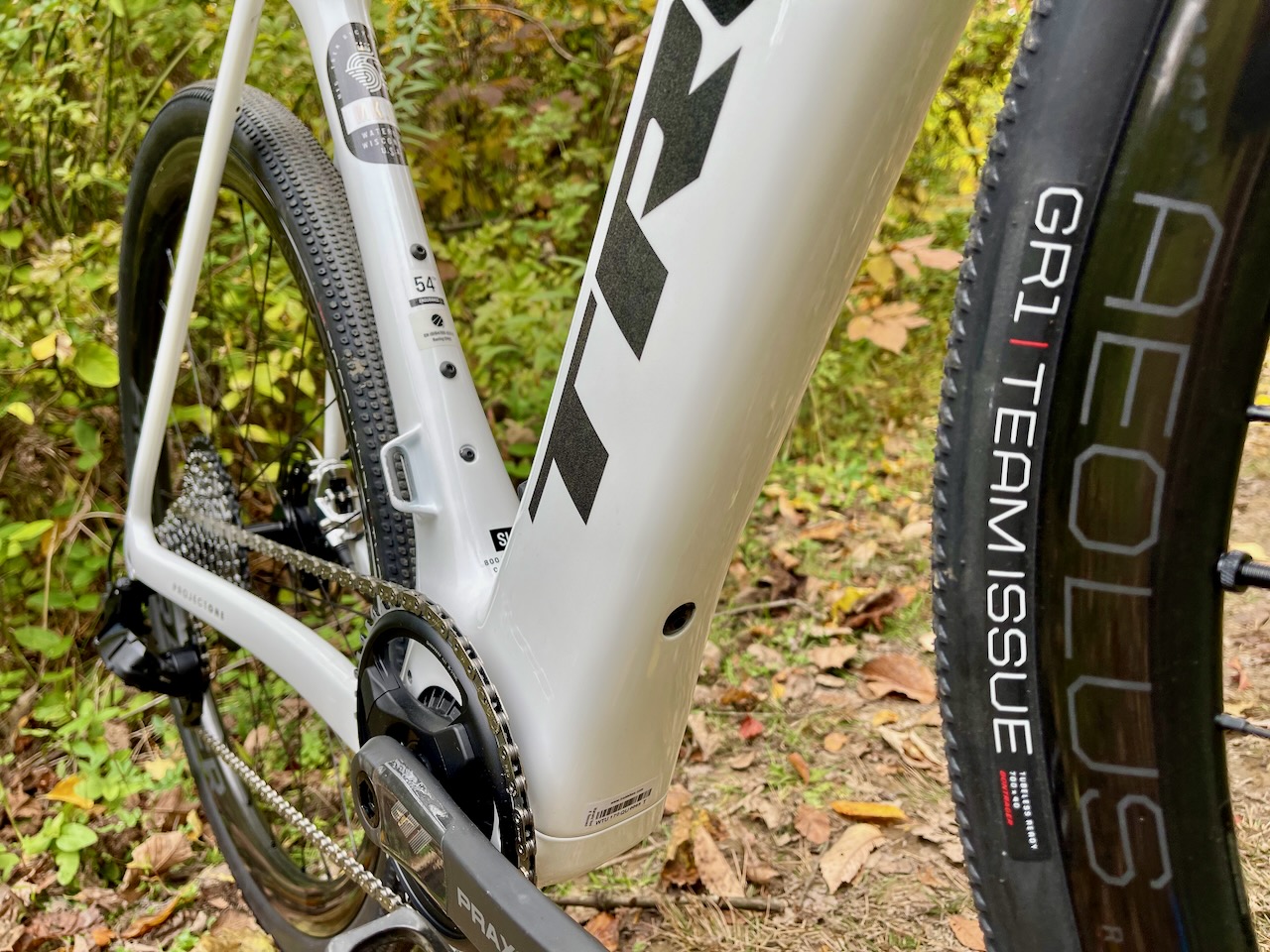
Can you remove the battery? Trek says an experienced home mechanic can remove the battery in 15-30 minutes “Remove the drive unit cover, remove the drive unit, remove the screws that hold the battery charge port in place, remove the battery.” If that sounds like too much wrenching for you, your local Trek retailer is happy to help.
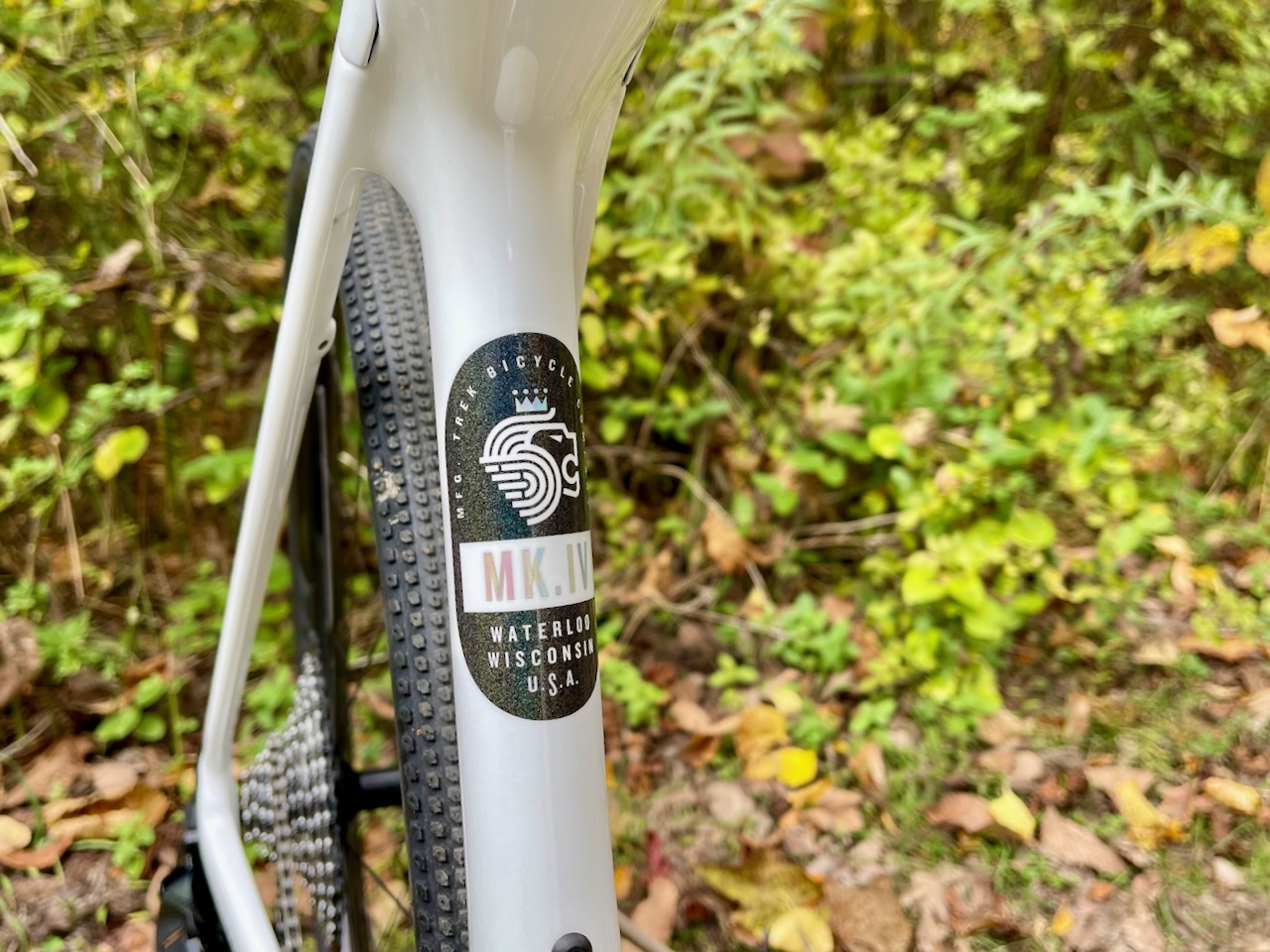
Need more battery? The mileage you get from each battery varies on many factors, such as rider weight, assist level, tire choice, riding surface, terrain, and more. If you’re looking to go longer than the frame battery can take you, Trek offers a Range extender battery that can add around 30 extra miles to your ride. The Range Extender battery sits in the water bottle cage and weighs around the same amount as a 26oz full bottle. The Range Extender plugs into the charging port and keeps the wires nice and tight to keep your pedaling smooth. For added security, Trek includes a strap to help stabilize the Range Extender for those long days exploring the gravel.
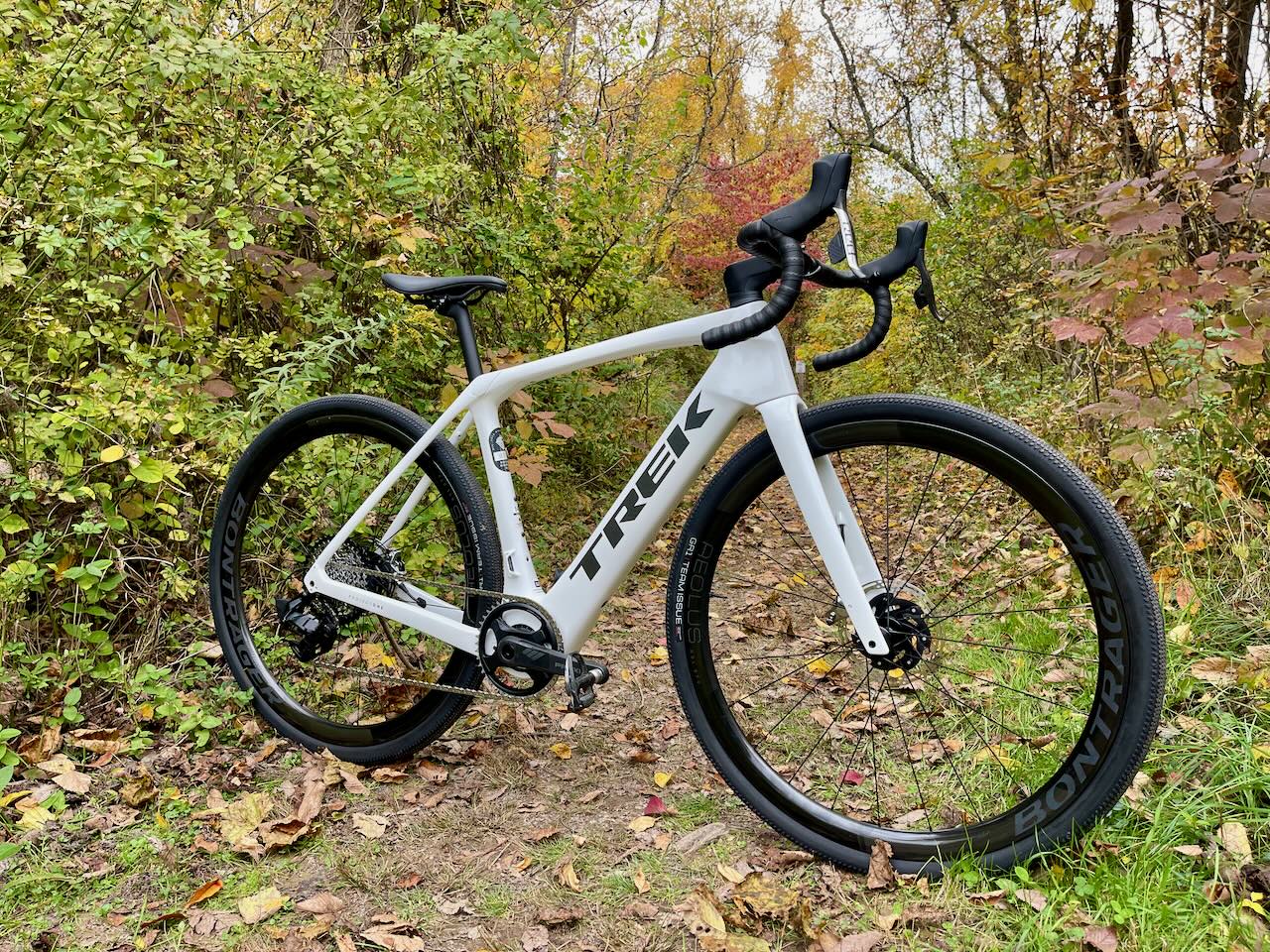
Domane+ SLR Geometery
The geometry for the Domane+ SLR is almost exactly the same as the Trek Domane “endurance” or H2 geometry. The Domane+ SLR frame has 10mm longer chainstays (43cm vs. 42cm on a 54cm frame). The longer rear gives the Domane+ SLR a planted feel in the corners and on the road. A longer wheelbase is good because the speeds you can hit on the flats with the TQ motor may be unfamiliar territory to some riders.
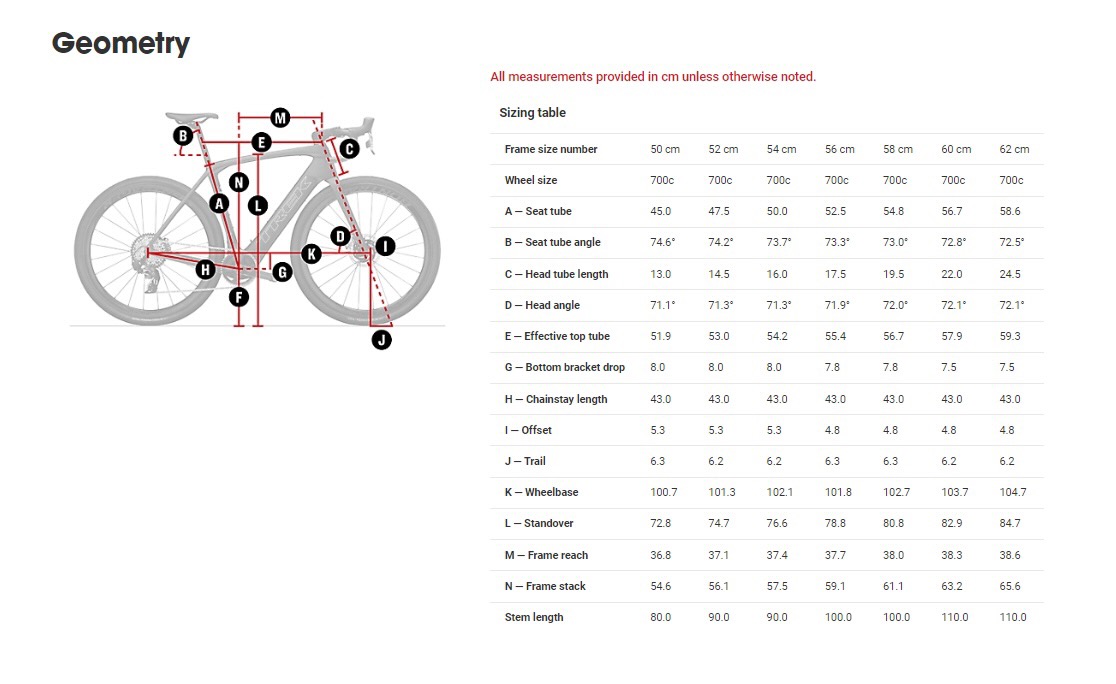
The H2 geometry features a higher top tube and a slightly longer wheelbase to give the bike a stable feel no matter the terrain. The all-new Domane+ SRL frames boast a wide range of sizes, starting at 50cm and ending at 62cm.
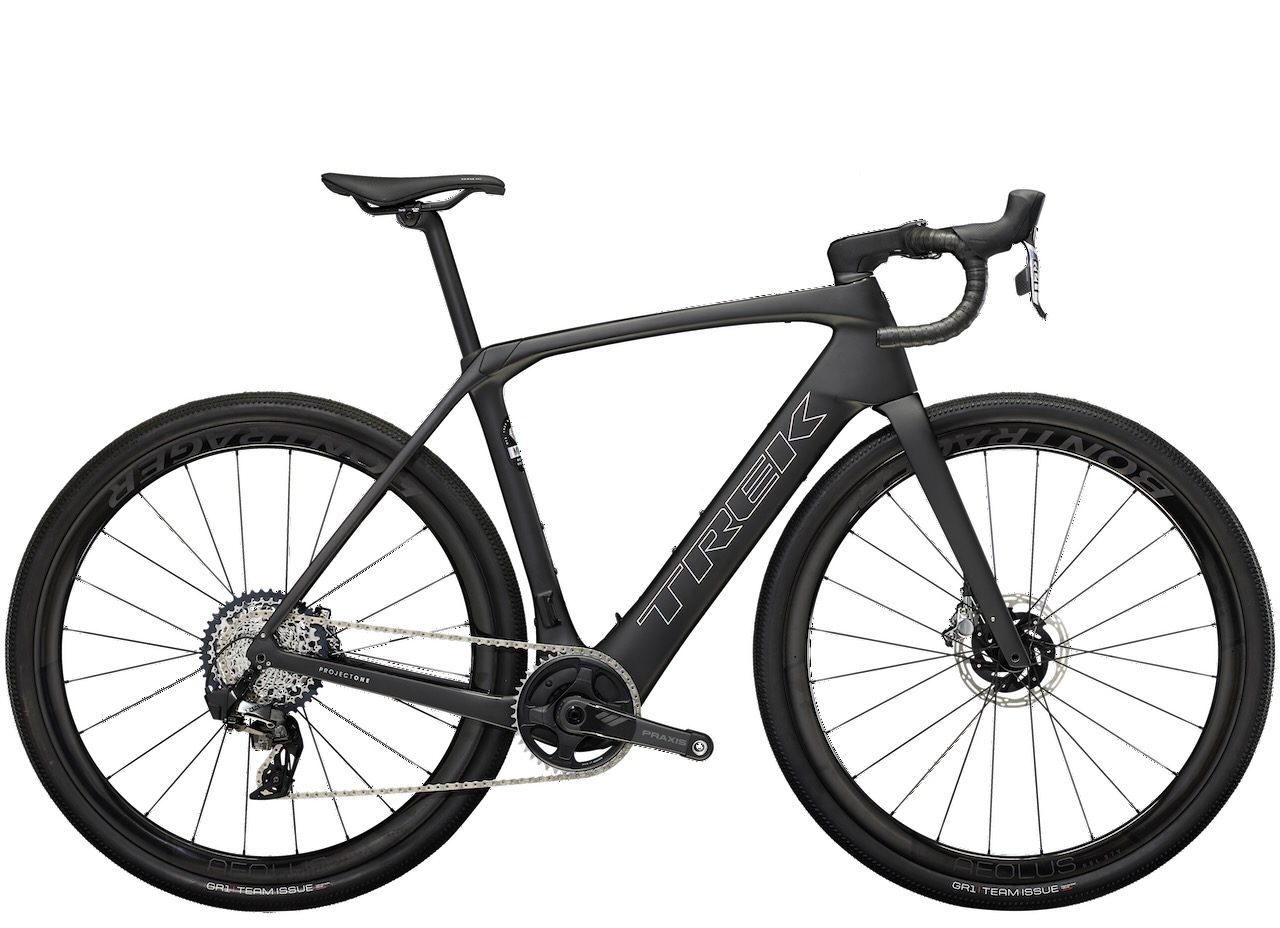
Trek Domane+ SLR Specs, models, and weights
The Trek Domane+ SLR frame is electronic shifting only, so the shifting offerings are all top-notch. Each model comes in a Shimano Di2 or SRAM eTap configuration. The SRAM option employs a single front ring, while the Shimano uses a double.
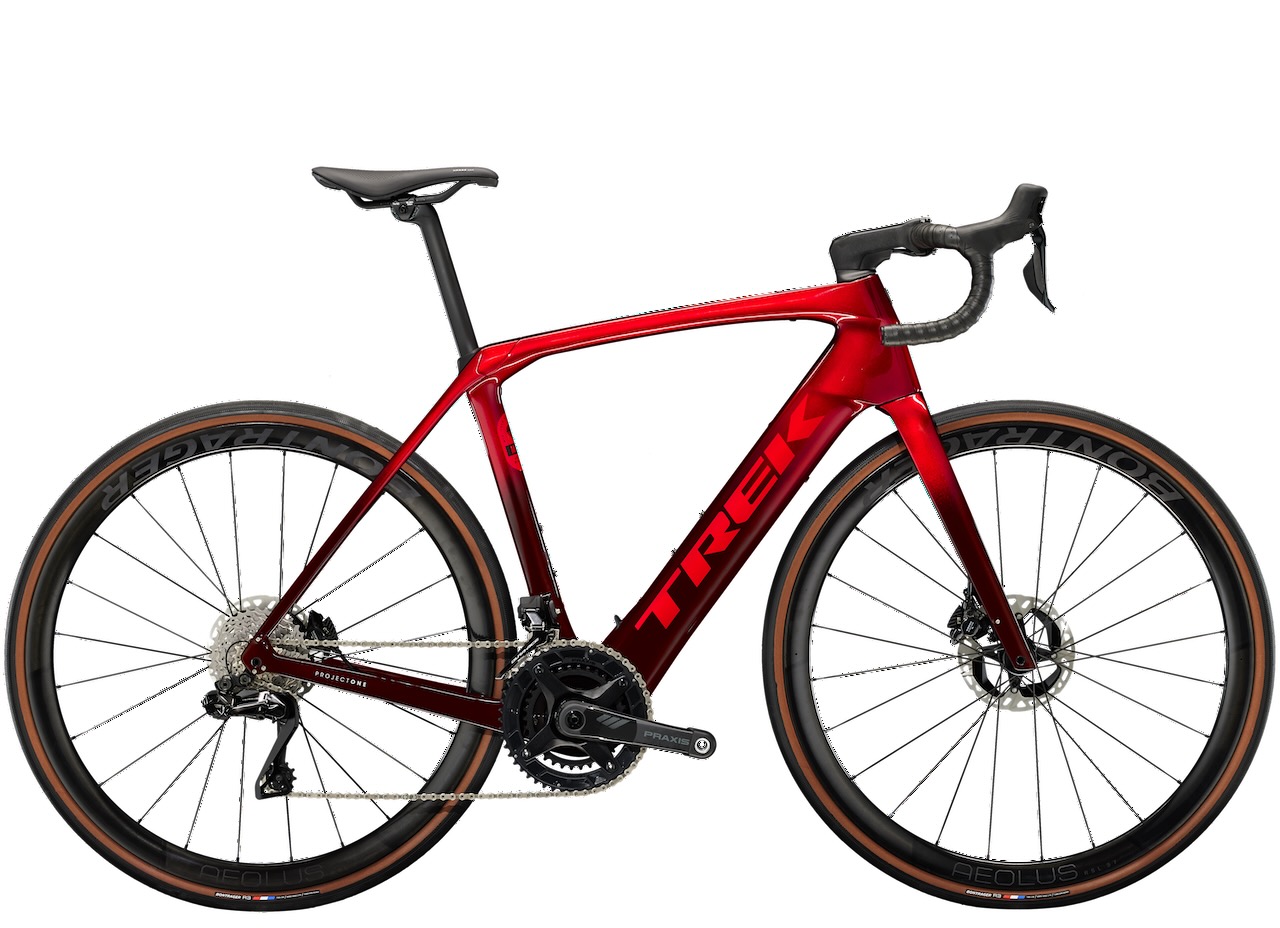
The top offering Domane+ SLR 9, arrives with either SRAM eTap RED (single front ring) or Shimano Dura Ace 12 speed with a double ring set-up.
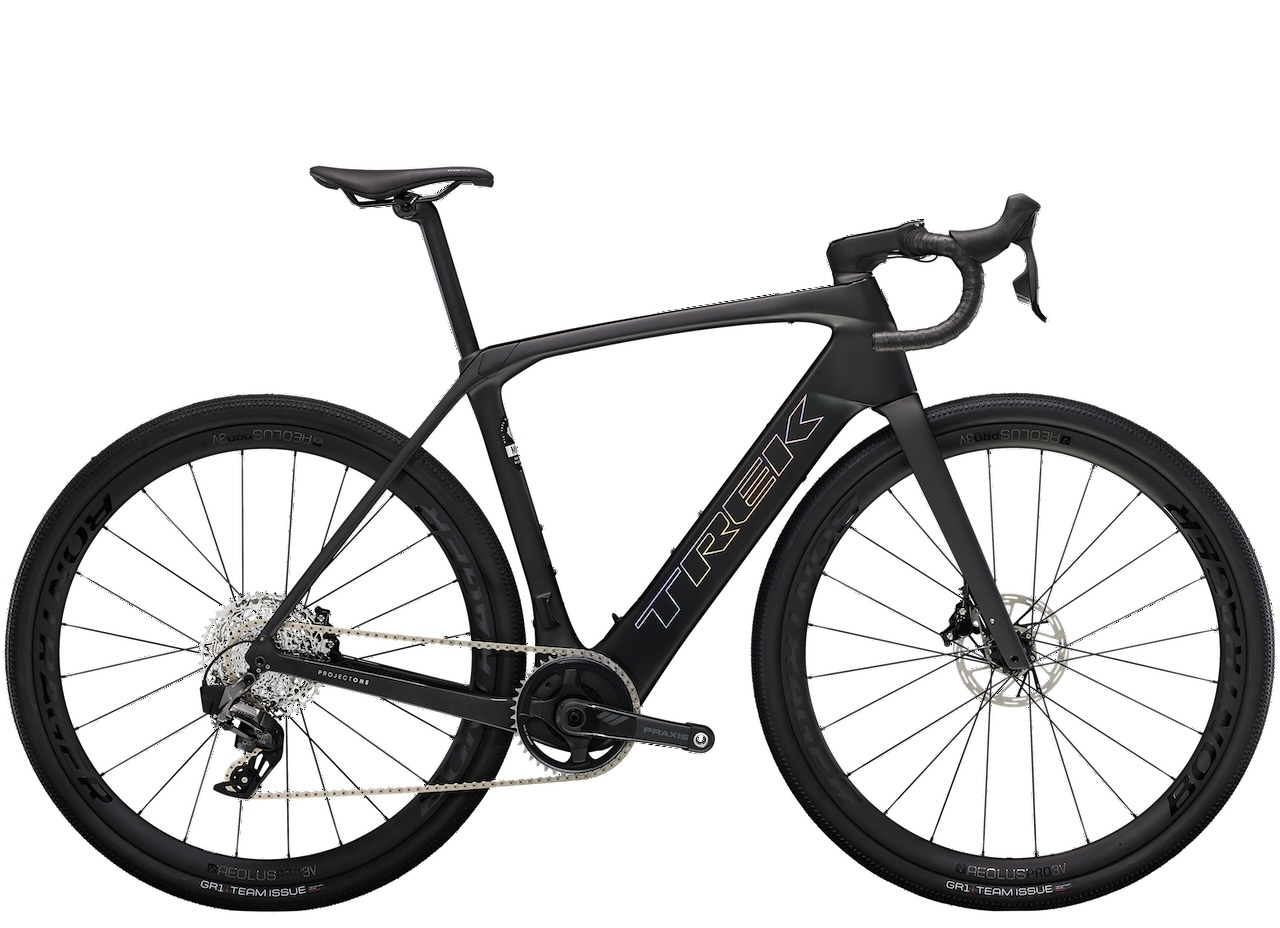
The line trickles down from Di2 Ultegra 12 speed and SRAM eTap Force for the Domane+ SLR 7 and Shimano Di2 105 or SRAM Rival eTap for the Domane+ SLR 6.
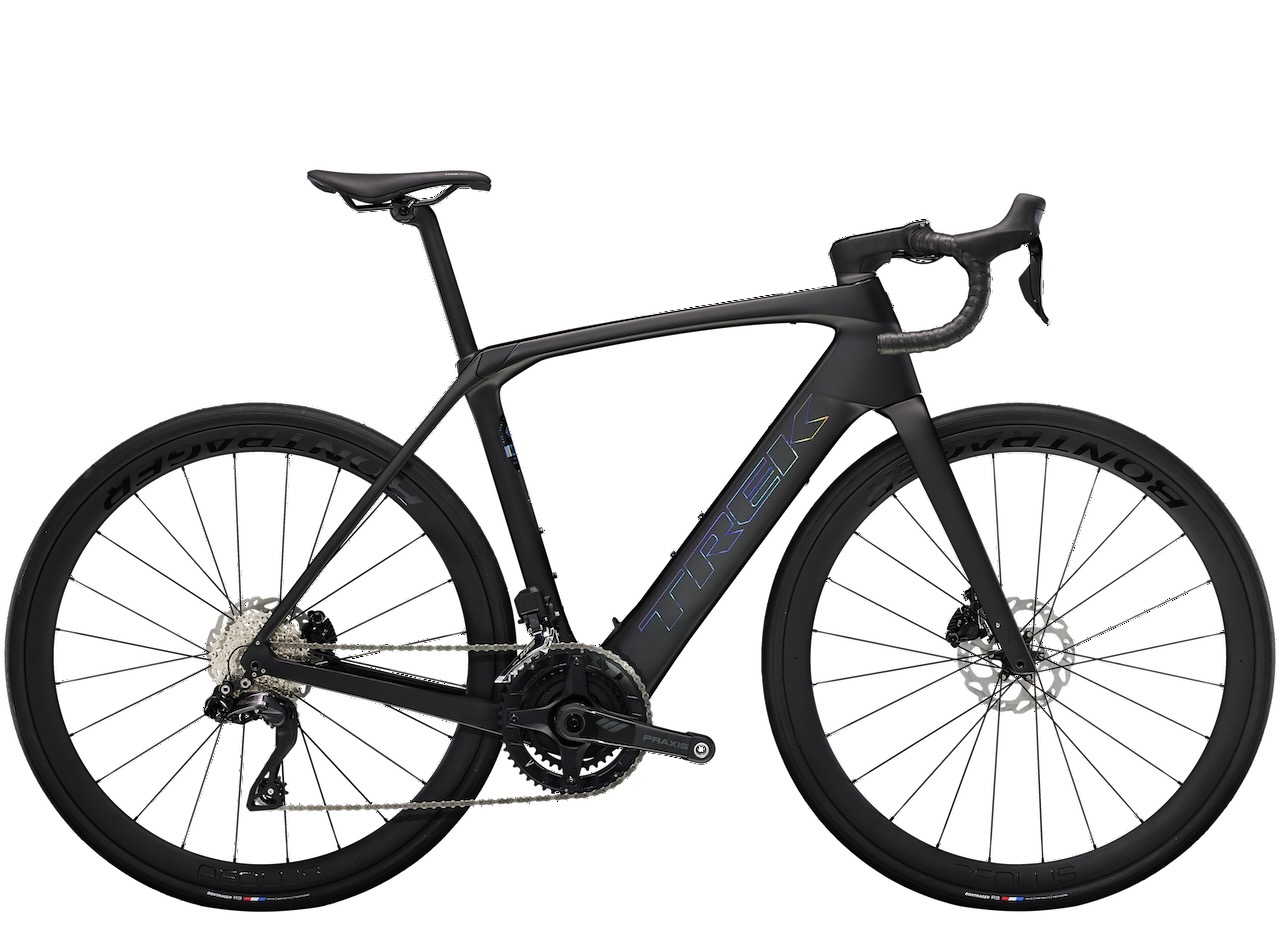
The Shimano spec is slightly more road-focused, with narrower 32mm tires, and the SRAM with 40mm gravel-ish ones. You can choose your density for your Domane+ SLR as they all come with Bontrager Aeolus RSL 37 wheels , a BikeRumor staff favorite for its super lightweight and versatility.
Each Domane+ SLR, no matter what configuration, comes with the same base frameset, though the Project One offerings have a flashier paint job.
- Trek Domane+ SLR 9 Project One eTap (tested): Price: $13,000, Weight: 27.03lbs* actual
- Trek Domane+ SLR 9 Project One Shimano: Price: $13,000, Weight: 25.90lbs
- Trek Domane+ SLR 7 Project One eTap: Price: $10,000, Weight: 27.56lbs
- Trek Domane+ SLR 7 Project One Shimano: Price: $10,000, Weight: 26.90lbs
- Trek Domane+ SLR 7: Price: $9,500, Weight: 26.90lbs
- Trek Domane+ SLR 6 Project One eTap: Price: $9,000, Weight: 27.78lbs
- Trek Domane+ SLR 6 Project One Shimano : Price: $9,000, Weight: 27.78lbs
- Trek Domane+ SLR 6: Price: $8,500. Weight: 27.34lbs
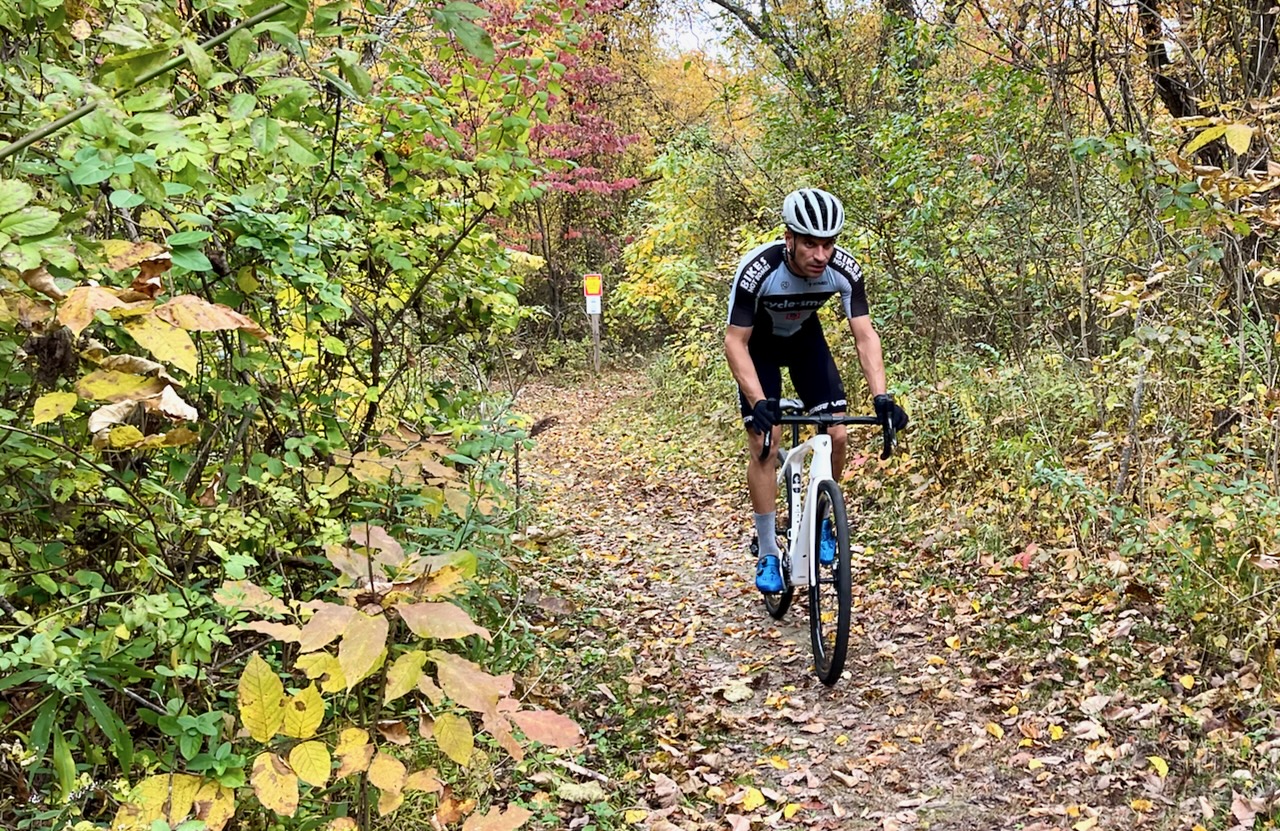
Trek Domane+ SLR 9 Project One eTap — Initial ride impressions
Out of the box, the Trek Domane+ SLR 9 looks like a regular road bike with a beefy down tube. Once you look closer, you notice the screen and the gearbox. Trek isn’t trying to “hide” the motor on the bike. They are attempting to make it feel more like an acoustic road bike. Maybe to make you think less about the motor and additions and more about riding the bike.
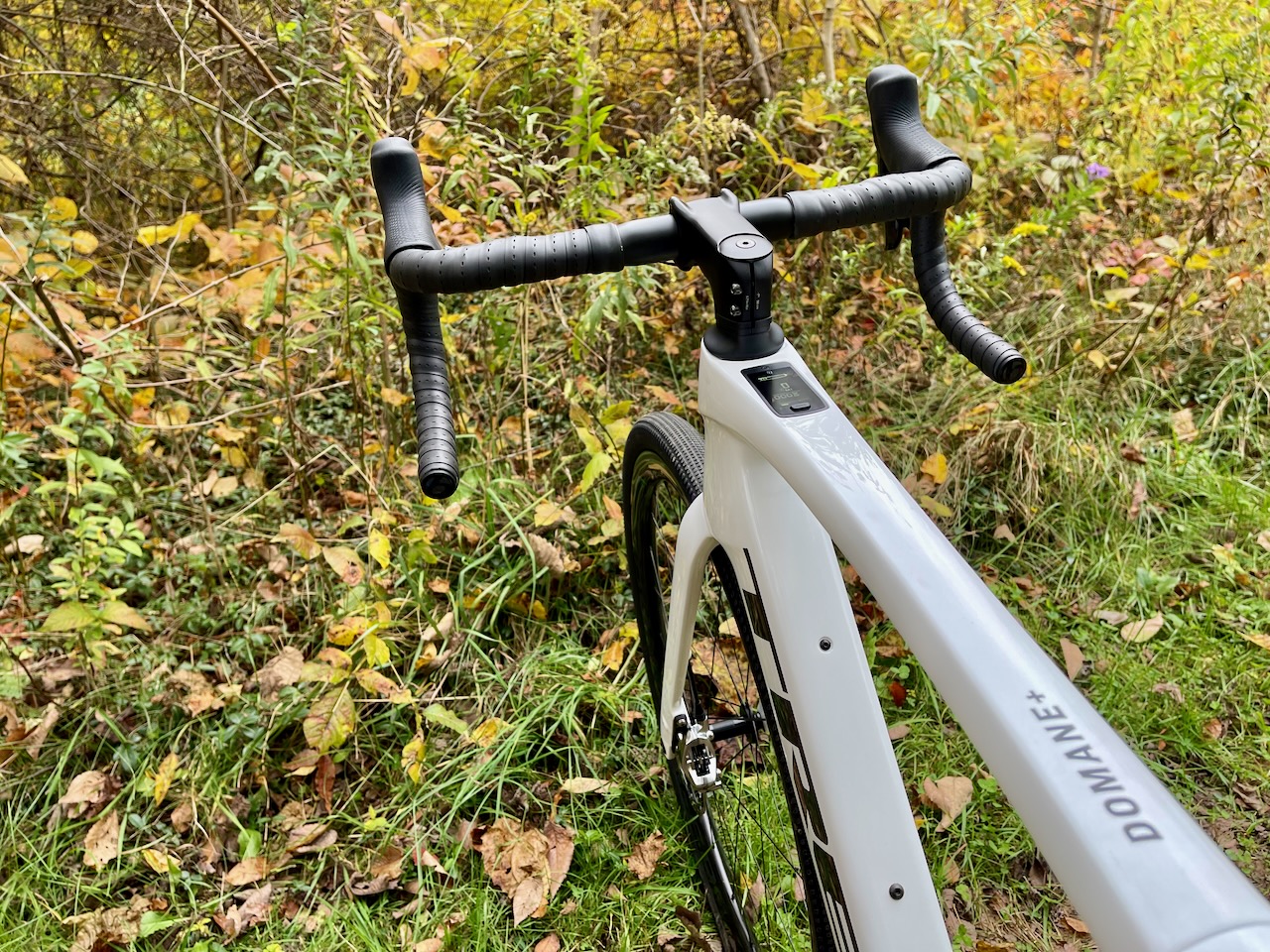
The Trek Domane+ SLR 9 was easy enough to pair with the Trek Central app, which is new from the launch of the Trek Fuel EXe with the TQ motor. The app acts as a riding partner, helping you dial in tire pressure, motor settings, and maps.
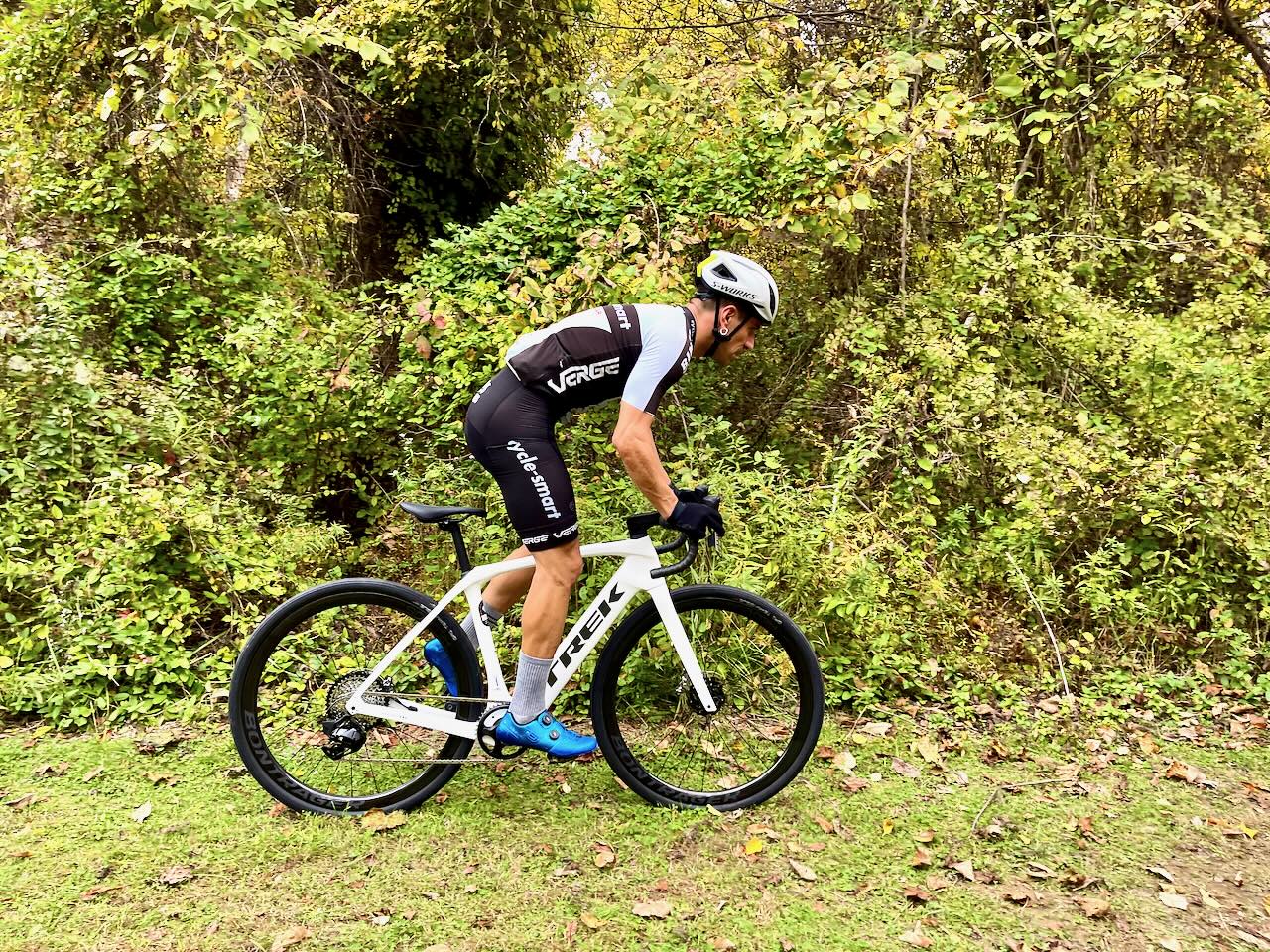
Trek Domane+ SLR 9 feels like an acoustic bike on the open road, especially while corning and riding tight roads. Most ebikes have a very bottom-heavy feel (like riding with full bottles vs. without). The Trek Domane+ SLR 9 doesn’t have any of these ride sensations. The fact that it feels more like a traditional road bike makes you want to push the limit in corners and on the flats. The Domane+ geometry is right in the sweet spot for stability and spark when you need it.
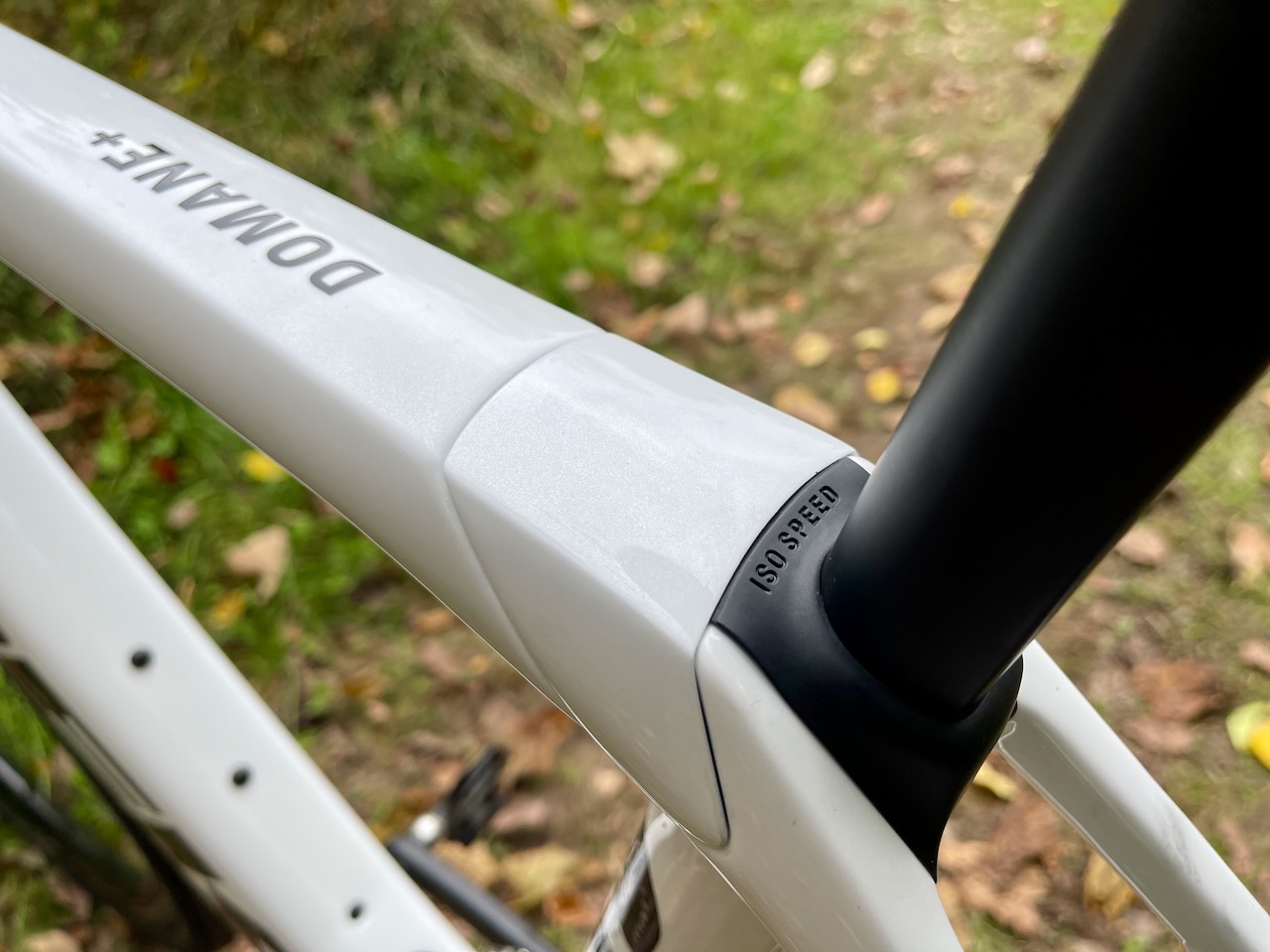
The IsoSpeed damper is a perfect addition to the Trek Domane+ SLR 9; with the 28mph speed threshold, the bike can roll on the flats, and the IsoSpeed eats up the chatter.

I found adjusting the modes at the shifter to be highly intuitive; never having to take your hands off the bars is paramount on an e-bike with such speed capabilities. The top tube screen is bright and clear, enough to get all the necessary information. The bike worked well with the Garmin and Wahoo head units we used during our initial outings, plus the new Bontrager stems have a spot for out-front computer mount.

The Domane+ SLR will be available globally on trekbikes.com and through Trek’s global network of retail partners. We’re excited to get out more on the Trek Domane+ SLR 9. Look for a full review coming in the future. Until then, check out TrekBikes.com for more information.
Jordan Villella is the Racing Tech Editor for BikeRumor.com, specializing in cross-country mountain, gravel, road, and cyclocross. He has written about bicycles and bike culture for over fifteen years with no signs of stopping.
Before BikeRumor, Jordan raced professionally and wrote for MTBR and the now-defunct Dirt Rag Magazine. He’s covered the World Championships, World Cups, and everything in between — where he loves to report what people are riding.
Based in Pittsburgh, PA, Jordan coaches cyclists of all abilities with Cycle-Smart ; you can find him racing bikes around North America and adventuring with his family.
For an inside look at his review rides follow him on Strava .
This site uses Akismet to reduce spam. Learn how your comment data is processed .
Ultra clean looking bike TREK! I think this lightweight e-light category is poised for growth. I had high hopes for the Spesh Creo when it came out. I found i could only get around 25 miles of range or less from the 360Wh battery going full gas. Maybe get a few range extender batteries in the jersey pockets… Sidenote: “The IsoSpeed dampener,” it’s called a damper. A dampener would be something that gets wet, like a sprinkler, or a garden hose.
Agree its a nice design, but think I’d strike the same issue I also had with the Creo – had to run it in Turbo to get a good run climbing, but blew 75% of the battery in about 25km (15 miles).
Trek has 50 NM motor, whereas, Specialized Creo has only 35 NM motor, which sucks for assist during hill climbing.
The price for the top-tier model is actually quite surprising considering the prices we see for some non-ebikes these days.
Three assist modes; Eco, Mid, and High. Anyone know how many watts the motor puts out in each mode? I’m trying to understand how much assist you get vs the power you can put out.
Max is 300w ontop of what you’re doing. All modes can be fine tuned via app to cover what range of assist you’d like each one to do.
It depends…but: 360W/H battery. Eco is claiming 100KM but they don’t specify speed. The math is like so: 360W/H / 100KM = 3.6WH/KM, then multiply by the speed they calculated at (who knows) so 3.6wh/km * 30km/h (seems high) = 106 watts of power. At 20km/h we get 72 watts of assist.
I own a Domane+ SLR9 and it’s all smoke and mirrors. There is no built in power meter so the eAssist is a guessing game for power assist. It displays power reading and works off the power reading but the accuracy is off approx 100%. Trek acknowledge the issue and say they do not say that there is a power meter only inaccurate but consistent power readings from an inaccurate algorithm. The result is that all the training apps pick up the wrong TSS scores and screw up your averages. $17000 worth of crap in my opinion.
Please, just call it as you like, but I implore you and all, to just call regular bikes, as always, plain and simple, bikes, or,if you must, normal bikes…
What is an “acoustic road bike”?
As opposed to an electric bike (i.e. acoustic guitar vs. electric).
Electric = Rock n’ Roll.
The speed of an ebike but stealthy and refined like a conventional bike. Your competition won’t see you coming or passing. It will definitely keep them guessing.
I vote for “analog” if we must use a term other than “bike” or “pedal bike”.
I have a BMC Allpenchallenge AMP and this Trek is the same concept, but in a nicer package. 25kmh limitation in Europe is a problem if you want to do flat group rides, but it works really well if you ride alone or in the mountains.
With the TQ motor technology these should see significantly more mileage range than a similar setup from a different company. Plus you could double that with one of their range extender batteries if you wanted. ISO speed is a great addition to the Domane+, wish they would have kept the front ISO on the new pedal Domanes.
“28mph speed threshold” is this true/correct?
Imagine paying $13 grand for a friggin Trek….
Billboards are expensive!
So of course I have to ask, as it wasn’t written here: How does it compare to the unnamed competition over at brand S?
I own and have loved the S bike. I would like the additional wattage in power, and I”m definitely down for less obvious ruckus from the motor.
I owned a Creo. Sold it after 1 year. Kept breaking down, the motor noise was high. I weigh 210 lbs, so climbing even slowly I used up a lot of battery, and had to have one or even two extenders at times. I’ve been waiting for a new development in motors rather than S’s Bosch. TQ sounds like this is it.
Have had not one problem with the motor on mine. The rest was normal bike stuff.
I’m 225, but in Texas where it is flat, can get about 30 miles on Turbo with the extender
Upgraded the heck out of it (went full SRAM/ENVE). It has gotten quieter, and slightly more powerful (either that or it actually does work for fitness) as it has aged. The battery still shows 100% life after over 5k miles.
What accounts for the $500 price difference between the SLR 6 ($8,500) and the other two SLR 6es (eTap or Shimano at $9,000)?
- Trek Domane+ SLR 6 Project One eTap: Price: $9,000, Weight: 27.78lbs
- Trek Domane+ SLR 6: Price: $8,500. Weight: 27.34lbs
Project One paint
hi, good article. If i ride mostly on roads, but like option for gravel, would gravel configuration work fine for roads & gravel?
Follow Us On
Subscribe Now
Sign up to receive BikeRumor content direct to your inbox.
Trek Domane SLR 9 review: Can a £13k+ bike ever warrant such a price?
Fewer isospeeds means it's a little less comfortable, but the new domane slr 9 is fast, fun, and ready for an adventure.

Cyclingnews Verdict
A genuinely excellent dual-natured bike, but at a price that could realistically buy three still-excellent bikes
Easy to use storage compartment with neat & organising tool wrap
Simplified Isospeed vibration damping
38mm tyre clearance
Power meter included
Neat, low-maintenance integrated cockpit
Oh boy is it pricey
I would hope for top-spec tyres at this price
You can trust Cyclingnews Our experts spend countless hours testing cycling tech and will always share honest, unbiased advice to help you choose. Find out more about how we test.
The Trek Domane is not what it once was.
Cast your mind back to around 2015, when gran fondos - or sportives - were all the rage among keen amateur cyclists. Road bike ranges were easy to comprehend thanks to the distinct three-way category split: lightweight, aero, and endurance.
The Trek Domane had been in existence for two years at this point, and like the Specialized Roubaix, Cannondale Synapse or Giant Defy, was fast becoming synonymous with the 'endurance road' category. Gravel was still an up-and-coming neo pro, while Allroad was trademarked by Audi.
The original Domane was fitted with something Trek calls an Isospeed decoupler at the seatpost. Put simply, this allowed the seatpost to flex independently from the frame, retaining pedalling efficiency while adding comfort. For Domane version-two, which launched in 2016, Trek took this concept and ran with it. That Isospeed was given a sliding adjustment to allow riders to tailor their ride quality to their preference, and a second Isospeed was built into the handlebar, decoupling the handlebars from the buzz of the road, adding comfort at the front too.
Domane version three launched in 2020 and at first glance remained largely the same formula as the last. It retained the adjustable Isospeed and continued to be all about comfort, just with a sharper focus on aerodynamics, but when you look a little closer, I believe it marked a step change in the Domane's character. With tyre clearance ballooning to 38mm, the Domane was among the most progressive endurance road bikes available.
Some would liken it to what we now know call an 'all-road' bike; the halfway-house between road and gravel, able to handle well-graded gravel paths, but without giving up too much speed on the road.
For 2023 and version four, Trek has really signalled this change of direction. It has gone back to basics on the Isospeed front, with a reduction in weight and a refinement of the aerodynamics. However, the 38mm clearance remains, the geometry continues to focus on comfort, and the result is a bike that's really tough to categorise on paper.
Is this still an endurance road bike? Or is it an all-road bike? Is it a do-it-all superbike? In order to find out, I spent a few months with the bike, taking it on all sorts of ride, short and long, smooth and gravel, wet and dry, and even on the indoor trainer.
While often mentioned, geometry doesn't usually get a section to itself in bike reviews here at Cyclingnews , but it's worth talking about because it's here that I believe we can start to work out exactly where the 2023 Trek Domane fits in among the hundreds of other bikes on the market.
First up it makes sense to compare it to its long-time competitors, the 'endurance road' crowd, including the Roubaix, Synapse and Defy.
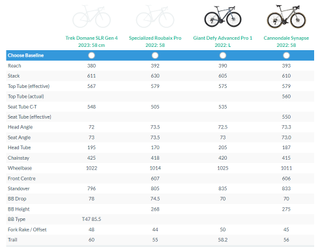
You can see that of all four bikes, the Domane's reach is the shortest by 10mm, and stack is fairly average. The numbers are pretty close though, so there's nothing to really write home about here. However, with a slacker head angle, a long wheelbase and a high BB drop, it points to offering a slightly more surefooted ride when the going gets rough.
Does that mean it's now more in line with bikes being marketed as 'all-road' bikes? The 38mm tyre clearance mimics the Fara All Road and the Ridley Grifn, for example, so let's compare to those and find out:
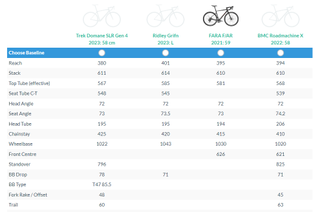
Here you'll see the head angle is exactly the same as the other three bikes, at 72 degrees, suggesting it does indeed fit better into this 'all-road' category. However, the wheelbase is only 2mm off being the shortest shown.
As a result, if I'm forced to categorise it, I think it's safest to do so as 'somewhere in between' the typical endurance road sector and what brands are now calling all-road. However, more important than a label is an analysis of how those geometry numbers combine with the design, the build quality, the components, and how the resulting bike actually rides.
Design & specifications
The 2023 Domane is available in three different guises: Domane SL and Domane SLR, with the carbon fibre level and component specs improving with the additional R. There's also the RSL, which stands for Race Shop Limited, and sits at the same level as the SLR, but in a more race-ready guise with a longer and lower geometry and no downtube storage.
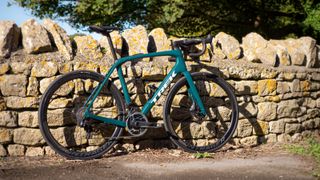
The model I'm testing is the Domane SLR 9, with a full serving of top-tier components and a top-tier price to boot: £13,400.00 / $13,199.99 / €14,499.00.
There's no getting around it, that's an enormous amount of money. It's almost unforgivable. It's impossible to ignore. And it's part of the reason I've written 800 words before even telling you which version of the Domane I'm reviewing. It's £4,900 more than the equivalent-spec Giant Defy. It's £4,400 more than a Cannondale Synapse Dura-Ace, and while the S-Works Roubaix is closer, it's still £400 more expensive than that.
However, it's worth noting that there are cheaper versions available, and many of the SLR 9's standout features translate right down to the cheapest Domane SL 5 at £3,400.00 / $3,499.99 / €3,749.00. As I proceed through the rest of this review, I will do my best to serve those who are considering this very bike, while also highlighting the features that trickle down to the more affordable models.

The Domane SLR 9 on test is fitted with Sram's top-tier Red eTap groupset, complete with the integrated power meter (the infuriating one with the power meter integrated into the chainrings), Bontrager Aeolus RSL 37 wheels, Bontrager Verse Short Pro carbon-railed saddle and Bontrager Pro IsoCore bars. The only area where the spec falls short of expectation at this price point is the Bontrager R3 tyres. They're good all-rounders, but the more supple R4 would probably have been more in line.
My size 58cm weighs in at 7.9kg. Given that includes pedals, a bottle cage and the tool roll inside the down tube storage, this is impressive given Trek quotes 7.8kg for a 56cm without all of the above. This model is available in five stock colours, but dozens of colourways are available throughout the range, and Trek also has Project One, which allows you to choose from thousands of combinations. This particular test bike is finished in a matte green colour that Trek calls juniper, my experience with Trek's paint is usually positive, but on this model, the paint chipped quite easily when my front light knocked against it on one ride.
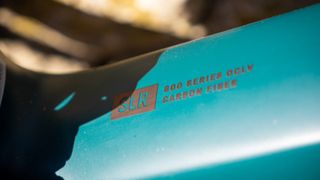
The 2023 Trek Domane SLR is upgraded to Trek's top-tier OCLV 800 carbon (SL uses the cheaper, less-refined OCLV 500). The frame has retained a similar silhouette to before, but Trek has simplified things massively with regard to the Isospeed decouplers. The front Isospeed has been removed entirely, while the rear is no longer adjustable, as it was before. For gen 4, all models (Domane SLR, RSL, and the cheaper SL) get the same Isospeed setup.
The frame's tubes see a slight refinement of their aerodynamic profiling, with the head tube being deep in shape with a truncated rear edge, and a slight D-shape to the seatpost too. Trek is certainly not the first to use a D-shaped post, and while Trek itself doesn't tie any comfort claims directly to it, the shape has been widely adopted by other brands, with most claiming comfort gains and mildly improved aerodynamics.
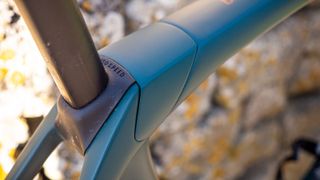
Another departure from the prior Domane SLR is the removal of the protruding seat tube, so now the post enters the frame where you'd usually expect it to, at the top tube junction, in front of which is a magnetic cap that hides the Isospeed and the seatpost clamp.
The cockpit too is considerate of airflow, but in a way that won't waste a day whenever you need to adjust your spacers or swap your stem or handlebars. The brake hoses run beneath the bar tape – rather than inside the bars – and under the stem into a scoop-shaped adaptor that fits in front of the proprietary Bontrager RCS Pro stem. Beneath this, oval spacers (splittable, thank heavens) allow cables to run into the frame. This is true for all models in the range.
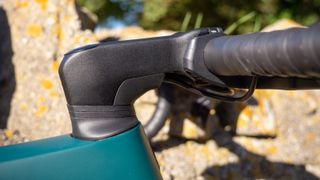
Like many bikes with internal cable routing, the brake hoses and/or cables do thread through the bearing cover and the bearings, so any eventual headset replacement will require a little extra work than the previous Domane, which ran cables into a separate port on the top tube behind the stem.
The down tube of the frame retains the door for in-frame storage. Inside, Trek supplies a tool roll, which is big enough to house a couple of tubes, levers, Co2 canisters or any of the best mini pumps . The door doesn't hinge as you'd expect. Instead, it has a latch to lock it into place, and comes away entirely when opened. Both the Domane SLR and SL models get this feature, but the racy RSL eschews it to save weight.
One bottle cage fits onto the outside of the door, another can be fitted to the seat tube, and a third can be fitted to the underside of the down tube. There are also bolts on the top tube behind the stem for a top tube bag. The SL and SLR frames are complete with mounts for full-length mudguards too.
Performance
It's a bit of a cliche to say that you can judge the quality of a bike right from the first pedal stroke, but the Domane SLR is as close as I've come to that very feeling. The high spec, top-level carbon and lightweight platform combined to give the bike a sense of urgency and immediacy. Of course, there was a lot more analysis still to be done, but as far as first impressions go, this was excellent.
Throughout the next few rides, though, I couldn't help but feel underwhelmed by the comfort it offered. A slight caveat here is that I didn't get on with the saddle, and things did improve a little after swapping, but the uber-damped ride quality is no longer what you get from the Domane. That's not to say I didn't enjoy the ride, it's just not the Rolls Royce ride I expected, and almost certainly is a result of the simplified Isospeed setup.
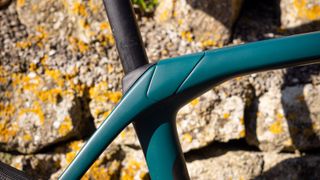
I even took to mounting the bike to my turbo trainer and setting a mirror to my side to see how much deflection was taking place compared to other bikes I have at my disposal. However, after some reflection (pun not intended), I concluded that while it's not what I was expecting, I actually much prefer it this way. The Isospeed decouplers on the previous bikes were good, but they could dull the ride, were heavier, and were complicated. Now, it feels as though the simplified Isospeed balances the stiff pedalling platform to provide a comfy bike that is snappy to accelerate. The new Domane is lighter, faster, more in tune with the road, and seriously fun to ride, but it's still comfortable, and can head off-road if you want it to.
If you want a Rolls Royce ride, then it's probably not the right bike, but for what the Domane is, I don't think many people will want comfort beyond what you can get from simply upgrading the tyres and upsizing to 38mm. If you want something capable of absorbing more vibration than this, I would speculate your choice of terrain is more 'gravel' than 'road', and the 45mm clearance of the Trek Checkpoint might make that a better choice.
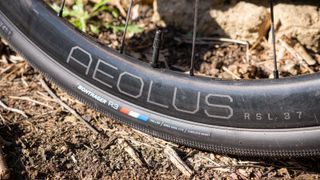
That doesn't mean you can't take this bike onto gravel paths, though. Trek specifically says "the Domane is the perfect choice for long road rides, light gravel back roads and even racing the infamous cobbles of Paris-Roubaix," and it's on those 'light gravel trails' that I'd draw the line too. It certainly doesn't fall apart on technical gravel and singletrack, but as with all all-road bikes, it's more a case of 'you can' rather than 'you should'.
On less technical terrain, its slack head angle and long (1022mm) wheelbase really kept it stable on my local gravel paths, stable enough that I could comfortably go for long stretches sat up riding no-handed without concern, yet it was still nimble enough to dodge puddles (there have been a lot of these lately). Given how the handling compared to the Fara All Road and Ridley Grifn, this is as much an all-road-capable bike as those that are specifically marketed as such.
Despite that, I still think the Domane shines brightest on properly paved roads. In fact, it's still most at home on those high-paced endurance fondos that the Domane called home all those years ago. Nowadays it does that better, while also being able to do more. I wish I had it available during my 275km ride at the Chasing Cancellara sportive last year, it would have been excellent.
I've touched on it above already, but the price of the Domane SLR 9 is prohibitively high. It's a genuinely excellent bike, but it's not £4,900 better than the equivalent-spec Giant Defy that I spent a few weeks riding beforehand. Nor is it £8,800 better than the Force-equipped Fara All Road.
Of course, if you have this sort of cash and you want to spend it here, then the bike you receive will be great; just read below, and you'll see I've given it a 10/10 on performance. However, this money brings you squarely into the realm of fully custom-made bikes, in steel, titanium and even carbon. The Argonaut GR3 , for example, is a carbon fibre gravel bike custom laid to your preferences. Even if there is no obvious performance benefit, having something made specifically for you is innately more special.
In my eyes, the purpose of an 'all-road' bike is as a compromise; you want a bike that can head off-road, but you don't want to lose out on your road performance, you perhaps can't afford to buy both a road bike and a gravel bike. As a result, something that straddles the lines without being sluggish on the road is a good choice. The Domane sits in that bracket, and it's a good bike.
However, this price doesn't scream compromise, so unless your reason for buying is because you specifically want to stitch together road and off-road terrain into one ride, rather than having a bike that can do both separately, I'd suggest buying two - perhaps even three - bikes that broaden the spectrum of the terrain you can cover and how well you can cover it. For example, you could buy that Giant Defy and have enough spare change to buy a Rival-equipped Trek Checkpoint for your adventure days.
If covering all terrain in one ride is your goal, you want the absolute best spec that money can buy, you want to buy off the shelf rather than custom, and you can afford to drop £13,400 / $13,199 / €14,499 on getting it, then you won't be unhappy with the Domane SLR 9. However, I would still suggest buying the Dura-Ace Di2 version, which is a little cheaper, and you won't have to buy an entirely new power meter when your chainrings wear out.
All in all, the mixed geometry and wider-than-road tyre clearance mean the 2023 Trek Domane stands almost alone in its category. Based on how it rides, I'd be surprised if more don't try to join it.
Naturally, if you want an out-and-out race bike, this isn't it. If you want a gravel race bike at this price point, then the S-Works Crux is my suggestion. If you want a super-capable gravel bike, this isn't it either. However, if you want an endurance road bike, the 2023 Domane is better than ever at this very task, with the newfound ability to go off-road without flapping, and handle mudguards in winter (which is where the Specialized Roubaix falls short).
There's no getting around the fact that the Domane SLR 9 is an expensive bike, and that will reflect heavily in the score of this review. As I said earlier, the price is impossible to ignore. However, Trek has done a very good thing in ensuring that the positives of this particular bike are applicable throughout the range. The key features (semi-integrated cockpit, aero considerations, down tube storage, Isospeed functionality, etc) are available at all of the cheaper price points. Given that third-tier groupsets are excellent nowadays, Bontrager's wheels rarely throw up issues and are backed with extensive warranties, and the SL frameset is only 204g heavier than the SLR, I think that's where I'd spend my money.
Testing scorecard and notes

Thank you for reading 5 articles in the past 30 days*
Join now for unlimited access
Enjoy your first month for just £1 / $1 / €1
*Read any 5 articles for free in each 30-day period, this automatically resets
After your trial you will be billed £4.99 $7.99 €5.99 per month, cancel anytime. Or sign up for one year for just £49 $79 €59
Try your first month for just £1 / $1 / €1
Josh is Associate Editor of Cyclingnews – leading our content on the best bikes, kit and the latest breaking tech stories from the pro peloton. He has been with us since the summer of 2019 and throughout that time he's covered everything from buyer's guides and deals to the latest tech news and reviews.
On the bike, Josh has been riding and racing for over 15 years. He started out racing cross country in his teens back when 26-inch wheels and triple chainsets were still mainstream, but he found favour in road racing in his early 20s, racing at a local and national level for Somerset-based Team Tor 2000. These days he rides indoors for convenience and fitness, and outdoors for fun on road, gravel, 'cross and cross-country bikes, the latter usually with his two dogs in tow.
A first ride review of the new Pinarello Dogma F: An exceptional bike, but the gains are too marginal
Pinarello launches new, slimmer Dogma F, complete with “aero-keel” and a lifeline for rim brake lovers
Vittoria Guazzini wins women's Italian national time trial as Elisa Longo Borghini relegated
Most Popular
Review: Trek Domane 4.5 – A High-End Frame and Smart Build Kit

While many brands have introduced “endurance” road bikes over the last few years, few have taken the idea to quite the extreme as Trek.
Trek Domane 4.5 – A High-End Frame and Smart Build Kit
The Domane was developed with considerable input from Swiss pro cyclist Fabian Cancellara , who is known for his steam-engine riding style, using his massive power output to crush cobblestones in the fabled Spring Classics. He is said to enjoy the bike so much that he rides it year-round, even in the Tour de France, choosing it over Trek’s racier Madone model.
The frame features the intriguing IsoSpeed decoupler , an ingenious system that separates the seat tube from the top tube and seatstays, and allows the seat tube to flex and pivot at the mounting point. If you stand next to the bike and put your weight on the saddle, you can see the seat tube flex slightly, but while riding it is imperceptible until you hit a bump.
A High-Performance Machine
Make no mistake: IsoSpeed is not a suspension system, and this is still a high-performance machine. If you’re expecting something akin to a suspension seatpost, think again. The frame’s ride quality is distinctly carbon—a muted road feel with less of that high-frequency vibration you feel from some aluminum frames, but still generally stiff.
Iso Speed makes itself most noticeable when crossing railroad tracks or other high-speed, sharp impacts that would normally require you to lift or shift your weight on the saddle to avoid being bounced. Not having to do that means you can keep your cadence smooth and the power high. The system seems so extreme some might think it’s a gimmick, but I’m convinced. Trek is as well—the technology will soon be adapted to its line of hardtail mountain bikes .
At the other end of the bike, the fork deserves some of the credit. It was developed with an asymmetrical steerer tube that is slightly thicker side-to-side than front-to-back, giving it a touch of compliance, but it never felt soft or shuddering.
The difference between the Domane 4.5 and the higher-end models is in the stiffness of the carbon fiber itself, and that this version uses a standard 27.2mm seat post rather than a seatmast that is integrated into the frame. I actually prefer the standard post, as it can be swapped for countless alternatives and provides an easy spot to clamp the bike in a work stand.
Trek’s DuoTap Hidden Speed
Other frame details include a spot for Trek’s DuoTap hidden speed and cadence sensor, an integrated chain guide to eliminate dropped chains and more generous tire clearance than most frames. It also has removable fender eyelets, so you can keep the clean look if you’re not using them. For an even smoother ride, you can ditch the tubes and set up the Bontrager Race wheels tubeless—another technology that is easy to dismiss until you try it.
It would be a mistake to write off the Domane as a “comfort” bike for weekend warriors. Despite accommodations for a smooth ride, it is as stiff and race-worthy as I could ask. Yet the slightly longer wheelbase makes it extremely stable, and it’s one of the few bikes I’ve ever plunged downhill at 40mph with a crosswind while still feeling relaxed. The fit adds to the comfort factor, as the slightly taller head tube gives you a more head’s-up position than Trek’s race bikes. Paired with a set of shallow-drop Bontrager handlebars , I felt great in each of the riding positions, an essential element of a long, comfortable ride.
Domane: Initial Acceleration is Direct and Instant
The adage “laterally stiff and vertically compliant” has gone beyond cliché to become something of a running joke in road bike circles. The notion that a bike can be a stiff-as-heck race machine and still be comfortable over rough pavement on long rides is not unlike a unicorn—a magical beast that surely can’t exist. But on the Domane, initial acceleration is direct and instant, with the massive, squared down tube and BB90 bottom bracket all but eliminating lateral flex.
SUBSCRIBE TO BIKE HACKS NEWS
Want the best cycling experience? Sign up for the latest bikes, gear, and accessories reviews out there.
By signing up, you agree to our Privacy Policy and European users agree to the data transfer policy
Back in Issue #16 I reviewed the Volagi Liscio, which also features an unusual seat tube arrangement—the seatstays bypass the seat tube and connect to the top tube. While the Liscio was smoother than the Domane in a straight line, it can’t compete with the Domane in terms of power transfer and handling accuracy. The Domane makes no sacrifices in these areas.
The Shimano Ultegra build kit performed flawlessly, as I expected. The compact crankset paired with an 11-28-tooth cassette offers tons of range for tackling the steepest pitches. The 105-level brake calipers offer power to spare, as a single finger is often enough to bring the bike to a stop.
Hitting the street for less than $2,800, the Domane 4.5 struck me as a steal, considering the high-end frame technology and the smart build kit. While it will likely be pitched to riders looking for a high-performance ride for centuries and gran fondos, the Domane is a race bike at heart that won’t beat you up on the weekdays.
Vital stats
- Price: $2,730
- Sizes Available: 50, 52, 54, 56, 58, 60 (tested), 62cm
- Weight: 18.12lbs
- Bicycle Racing: Tips To Help You Prepare For Your First Race
- How A Professional Coach Can Transform Your Cycling Performance
- Urban Biking: Navigating City Streets with Confidence
- Proper Bike Fit: Comfort and Efficiency on Every Ride
- Essential Bike Accessories: Your Guide to Comfort and Safety

View all results
- Accessories
- Biking Gear
- Electronics
- Exercise Bikes
- Hoverboards
- Mountain Biking
- Skateboards
- Tires and Wheels
- Home & Garden
- Kitchen & Dining

Trek Domane SLR review
Slider down the side of seat tube lets you alter the ride quality
- Sign up to our newsletter Newsletter
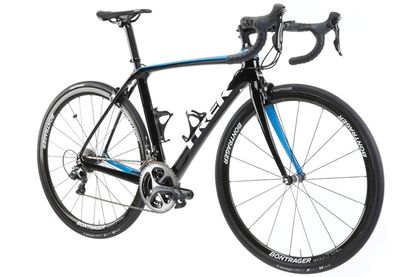
Test bikes come and go here at Cycling Weekly, but the Trek Domane SLR was a bike that I kept coming back to throughout the summer between testing other models, long after I’d formed a definitive opinion on it and had finished making my notes. The ability to change the bike’s ride characteristics using a little slider on the side of the seat tube might sound gimmicky, but you can’t argue with performance. This is a bike with a rear end that can be compliant to smooth out rough roads, or stiff for efficient power transfer when riding in the saddle. This is complemented by technology at the front of the bike that while non-adjustable still manages to smooth out vibrations without detracting too much from a design geared towards racing. If you’re after a bike that will put you at the front of races and keep you comfortable on six, seven, eight-hour rides, then the Trek Domane SLR is hard to beat
Incredibly versatile
Comfortable on long rides
Great power transfer
Excellent wheels
Tyres cut easily
No adjustability on lower models
You can trust Cycling Weekly. Our team of experts put in hard miles testing cycling tech and will always share honest, unbiased advice to help you choose. Find out more about how we test.
Over the last few years, the original Trek Domane has established itself as one of the leading endurance bikes on the market.
Now Trek has released a new model, with a standout feature that sets it apart from everything else available today.

The standout feature of the Trek Domane SLR is the adjustable rear IsoSpeed decoupler. In effect the bike has an extended seatpost that sits behind a cut out seat tube, with the two attached using a pivot bolt at the junction with the seatstays and the top tube, and a second bolt that also doubles as the bottom bottle cage bolt.
This apparently gives the new bike an adjustment range of 20 per cent of compliance. This means that the bike can go from being as stiff and relatively uncompliant as Trek’s other race bikes, the Madone and Emonda , to being up to 14 per cent more compliant than the old Domane .
Adjustment is done via a slider which runs between the two tubes: move the slider to the top to get a stiffer, less compliant ride similar to the Madone and Emonda, and move it to the bottom to get the most comfortable rider that the Trek Domane SLR can offer.
A similar IsoSpeed technology is used at the front, where the fork steerer tube is isolated, allowing it to rotate independently. This means a front end that is, according to Trek, 5-10 per cent more compliant than that of its predecessor.
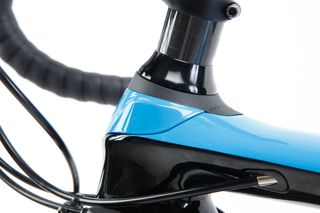
Aside from IsoSpeed there are a number of extra comfort features built into the new Trek Domane SLR. First up are the IsoCore handlebars, which have a rubber compound woven into the carbon-fibre to dissipate road vibrations, meaning a claimed 24 per cent benefit over aluminium bars and 20 per cent benefit over standard carbon bars.
The bike also has a new IsoSpeed fork (with 12mm thru-axles on the disc brake versions), with the positioning of the dropouts apparently increasing compliance by 7 per cent compared to a standard road fork.
Other than the IsoSpeed technology, the Trek Domane SLR comes with a whole host of other features that come together to create what Trek reckons will be its most versatile road bike ever.
For all that talk of extra compliance and comfort, Trek has also redesigned the down tube of the new bike, giving it a curved look and making it wider, apparently meaning better power transfer.
Specification
Our Domane SLR test bike came with a top-end build that meant a Shimano Dura-Ace groupset with rim brakes rather than discs.
For those deciding whether to make the switch, there are a big selection of disc brake bikes throughout the Domane range, but it is good to see that Trek, unlike Specialized with its new Roubaix, is still giving customers a choice of which braking system to go with.
The wheels were a pair of tubeless-ready Bontrager Aeolus 3 clinchers topped with 28mm Bontrager R3 Hardcase Lite tyres. While the wheels were excellent, providing a fast yet comfortable ride, the tyres cut very easily and would be the first thing we would change.
I came to the Trek Domane SLR with two preconceptions; firstly that it is an endurance bike, and secondly that the slider was a gimmick. On both counts the bike proved me wrong.
The difference in the ride between having the slider at the top and having it at the bottom is profound. Move it all the way to the bottom and you get a super-comfortable endurance bike with a compliant rear end that is the equal of any other endurance bike on the market.
I’ve ridden this bike on the cobbles of Flanders , and with the slider at the bottom it was seriously smooth, while the IsoSpeed system at the front helped to keep my hands and wrists in decent shape, even while riding without gloves.
But move the slider and the Domane SLR is no longer an endurance bike. Back in Blighty, and with smoother roads and faster rides on the agenda, I moved the slider all the way to the top and turned it into an out-and-out race bike.
Power transfer through the bottom bracket and rear end is absolutely superb, with the bike rocketing along even with the 28mm tyres.
At the front, when sprinting I didn’t experience the handlebars bobbing up and down as expected, although I can’t claim to have fully pushed this to the limits as I’m a relatively light rider.
In practice I found myself generally setting the slider at its mid-point and leaving it there for most rides, but it’s always nice to have the option to switch things up or down to create a horse that will run well on any course.
How to ride the cobbles
I’m torn over the value on offer by the Trek Domane SLR. Seven thousand pounds is a lot of money to spend on a bike, but the Trek goes a long way to justifying that price tag with the ability to double up and perform just as well in a road race as it would on a 200km Audax over sketchy lanes.
My frustration is that the slider that makes this bike so versatile is only available on top-end Domanes — the most affordable bike with this technology costs £3,600 and comes with basic alloy wheels and second-tier Shimano Ultegra .
Thank you for reading 20 articles this month* Join now for unlimited access
Enjoy your first month for just £1 / $1 / €1
*Read 5 free articles per month without a subscription
Join now for unlimited access
Try first month for just £1 / $1 / €1
Get The Leadout Newsletter
The latest race content, interviews, features, reviews and expert buying guides, direct to your inbox!
Henry Robertshaw began his time at Cycling Weekly working with the tech team, writing reviews, buying guides and appearing in videos advising on how to dress for the seasons. He later moved over to the news team, where his work focused on the professional peloton as well as legislation and provision for cycling. He's since moved his career in a new direction, with a role at the Department for Environment, Food and Rural Affairs.

Visma-Lease a Bike sporting director Merijn Zeeman reveals Van Aert said he wanted "to do something special"
By Tom Thewlis Published 21 June 24

The 29-year-old crashed at the Critérium du Dauphiné, fracturing his rib in the process
By Adam Becket Published 21 June 24

All the teams and riders for the 111th Tour de France
Useful links
- Tour de France
- Giro d'Italia
- Vuelta a España
Buyer's Guides
- Best road bikes
- Best gravel bikes
- Best smart turbo trainers
- Best cycling computers
- Editor's Choice
- Bike Reviews
- Component Reviews
- Clothing Reviews
- Contact Future's experts
- Terms and conditions
- Privacy policy
- Cookies policy
- Advertise with us
Cycling Weekly is part of Future plc, an international media group and leading digital publisher. Visit our corporate site . © Future Publishing Limited Quay House, The Ambury, Bath BA1 1UA. All rights reserved. England and Wales company registration number 2008885.
TOUR DE FRANCE
Don't miss a moment with our daily Tour de France newsletter.
Powered by Outside
2020 Trek Domane goes all-in on all-road versatility: First-ride review
Heading out the door? Read this article on the new Outside+ app available now on iOS devices for members! >","name":"in-content-cta","type":"link"}}'>Download the app .
The new third-generation Trek Domane is a far cry from the endurance road bike it was when it first debuted in 2012. The Domane was once more of a toned-down road bike with ultra-stable handling, a very relaxed rider position, and semi-wide tires — this new one is a thoroughly refined all-road machine with gobs of tire clearance, an even more refined ride quality, a T47 threaded bottom bracket, and some neat convenience features.
It’s heavier, too, but don’t let that detract too much from what’s on tap here. It’s a cracking machine for everyday road riding — whatever that “road” may look like.
“What was traditional road riding is changing”
That’s how Trek kicked off its presentation of the new Domane, and that statement is certainly an accurate reflection of how road riding has evolved in recent years: less racing, more exploration, less tarmac, more “off-piste” routes that are less perfectly paved (or paved at all, in some cases), but devoid of motorized vehicular traffic.
That shift away from pristine blacktop has brought with it a desire for road bikes that are better equipped to handle a broader range of road surfaces, and this new Domane has clearly been developed with that in mind.

First and foremost, consider the tire size. The original Domane came with 25mm-wide tires, but the new Domane has 32mm-wide ones as standard equipment, with Trek’s official blessing for tires up to 38mm-wide front and rear. When fenders are installed to the neatly hidden mounts, that figure creeps down to a still-generous 35mm.
As expected, Trek has also brought the Top Tube IsoSpeed design from the latest Madone over to the Domane family for a smoother and more refined ride. Like every IsoSpeed design since its inception, Top Tube IsoSpeed features a pivot at the intersection of the seat tube and top tube, which allows the seat tube to flex independently of the rest of the frame when riding on rough roads, basically adding a leaf-spring element to what is otherwise effectively a rigid structure.

But whereas the original IsoSpeed still relied on the entire seat tube to flex, Top Tube IsoSpeed splits the seat tube in two, with the upper portion forming a boomerang-like component, with the forward section braced underneath the top tube; the lower part of the seat tube is now wholly fixed in place.
According to Trek, Top Tube IsoSpeed allows for more discrete tuning between frame stiffness and ride comfort than the original IsoSpeed design. And since the length of the section of the boomerang that resides beneath the top tube — the leaf-spring component — can be varied independently of frame size, it can be engineered to provide an inherently softer ride for smaller frame sizes.
Before, the opposite was true: bigger frames have longer seat tubes, and since leaf springs get softer with increased length, taller riders instead got a bouncier ride than was considered optimal, and shorter riders got a firmer one.

The stiffness of Top Tube IsoSpeed is also adjustable for further fine-tuning, and there’s a built-in damper hidden inside the seat tube to make the movement more controlled, too. Granted, the latest incarnation of IsoSpeed on the second-generation Domane SLR was size-specific, too, but the one on the Domane SL was not, and neither was damped like this one is.
Unfortunately, Top Tube IsoSpeed will be limited to the upper-end Domane SLR family; the Domane SL continues on with the original, non-adjustable design. Both still include the Front IsoSpeed feature, though, which takes advantage of carbon fiber steerer tube flex to help balance the ride quality up front, too. Bontrager comfort-focused IsoCore and IsoFlex handlebars are featured throughout as well.

In another nod to how road bikes are changing, you won’t find any rim brakes at all on any new carbon fiber Domane, even on bare framesets or custom bikes ordered through Trek’s Project One program. Rim brakes will only be available on older aluminum models.
Lots of small refinements — including T47 threaded bottom brackets
Trek had already introduced its interpretation of T47 threaded bottom brackets on its recently revamped cyclocross bikes, but it’s now on every new Domane, too. Trek is sticking to its 85.5mm shell width for better tool engagement (this iteration of T47 was originally designed around a 86.5mm-wide shell), but even with that slight compatibility qualifier, it should still be a big improvement over Trek’s proprietary BB90 press-fit setup in terms of serviceability and resistance to creaking.

Perhaps borrowing a page from Specialized’s playbook, all of the new carbon fiber Domanes also get a handy storage compartment in the down tube. The bottle cage mount there is attached to a removable hatch that’s accessed with a small lever. Directly attached to that cover is a holder for a multi-tool, and inside the down tube is a nylon tool roll that’s big enough to hold a spare tube, CO2 cartridge and inflator head, and one or two tire levers. There’s perhaps enough room inside for other essentials — maybe even some snacks or a vest — although you’ll obviously want to be pretty careful what you try to stuff in there.
The internal cable routing is a bit more refined than before, with the entry point moved to the top tube, just behind the stem — not unlike several of Cervelo’s S-series aero bikes. Full-length housing is used throughout, too, which will invariably require careful setup for optimal brake and derailleur function, but should also be easier for mechanics to initially install. Housing clips inside the down tube (accessible through the aforementioned storage hatch) will prevent annoying rattling.

Clutter around the top tube housing entry point is minimized with a small plastic clip underneath the stem. And speaking of which, Trek has avoided the temptation to fit the new Domane with any sort of proprietary cockpit; just about any handlebar and stem will work.
Other notable details include a seatpost head that wedges itself inside the no-cut extended seat tube (previous Domane seatmast heads clamped to the outside of the tube), optional integrated front and rear accessory mounts for computers and lights, a built-in chain watcher, a pocket in the non-driveside chainstay for Bontrager’s long-standing DuoTrap wireless speed and cadence sensor, and removable handles on the 12mm DT Swiss front and rear thru-axles.
Faster in the wind, but also heavier
Trek says that aerodynamic shaping borrowed from the Madone has made the new bike a bit faster than before, to the tune of about minute per hour (speed wasn’t specified). Will the typical Domane buyer really care about that much? Not likely, but it’s a neat factoid regardless.
More noticeable is the fact that the new Domane frames are stiffer than before, owing to the new Top Tube IsoSpeed design and the far more bulbous front ends that are required to accommodate the revised internal cable routing configurations.

Both of those things should make the new Domane a faster machine than before, and when combined with the expanded versatility and newfound capability, it’s all shaping up to be quite the compelling case. But the improvements in those areas also come with a step backward in another one: weight. According to Trek, a new complete Domane bike will be, on average, about 200g (0.44lb) heavier than its predecessor, with about half of that attributable to the frameset, and the rest to the ancillary bits: wider tires, wider rims, the down tube storage box, etc.
Claimed weight is 1,235g for a painted 56cm frame and fork, including “all frame hardware, IsoSpeed hardware, and storage.” Add another 30g for the Domane SL variant.

For the sake of comparison, a 52cm first-generation Domane I rode in 2012 with a Shimano mechanical Dura-Ace 7900 rim-brake groupset, Bontrager carbon clinchers, and 25mm-wide tires tipped the scales at just 7.01kg (15.45lb) without pedals. A 52cm second-generation Domane SLR I rode in 2016 with a mechanical Shimano Ultegra 6800 drivetrain, hydraulic disc brakes, and aluminum clinchers came in at 8.31kg (18.32lb) without pedals. A 56cm third-generation Domane SLR comes in at 8.17kg (18.01lb) as pictured here.
Granted, some of that heft is attributable to the larger frame size (I weighed a cleaner photo sample here, rather than the bike I rode at the event), but that SRAM Red eTap AXS groupset and the new Bontrager Aeolus XXX 4 carbon clinchers are far lighter than what came on the Domane that I rode a few years ago.

Without question, the Domane has gotten heavier over time.
“For this bike especially, we really focused on the ride experience and the ride, and so instead of focusing on numbers, we wanted to be able to present riders with what we thought was the best possible ride for the majority of rides that people actually do,” said Trek road bike director Jordan Roessingh. “As we started going through the development path of that, it included added bigger-volume tires, and adding technologies like [Top Tube] IsoSpeed. All of those incrementally, we believe, improve the ride to the point that, when you’re actually on the bike and feeling it, it’s a better total package.
“We know that, a lot of the times, we all focus on weight — ourselves included — and we have one of the lightest production road bikes on the market in the Emonda, but [weight] is not the end-all-be-all of what creates a great ride.”
How much does a couple hundred grams really matter in the grand scheme of things? That depends on your perspective, of course, but Trek is clearly hoping that potential buyers will see things their way.
Goodbye to women-specific geometry, hello to more sizes in general
Trek was one of the earliest proponents of women-specific frame geometry with its WSD (Women Specific Design) range, citing the usual claimed differences of longer legs, shorter torsos, and shorter arms for a given height. But as other companies that collect a broad swath of rider data through in-house fit programs are now discovering, it turns out that those so-called inherent differences aren’t so inherent, and the old United States Army anthropomorphic study on which so many companies based their women-specific programs wasn’t nearly as indicative as originally thought when it comes to how people sit on their bikes.

For sure, Trek maintains that there are still subtle differences, but that the scope of those differences between men and women aren’t any greater than they are within these sexes.
As a result, Trek is going back to a unisex format for all Domane models moving forward. Each of those will have a wider range of sizes — particularly at the low end, down to 44cm — and there are more color options across the board to suit differing aesthetic tastes. This is similar to what Specialized has done in recent years, although interestingly, the opposite of Canyon’s approach with the WMN line that was introduced in 2017.

That said, spec on smaller models will still reflect what buyers favored on previous WSD models, at least in terms of handlebar width and reach, short-reach levers where available, and dedicated saddle widths.
Frame geometry is wholly carried over from before, with the same “H3” fit used on the second-generation Domane range, which is noteworthy given the increase in tire clearance. This means a ground-scraping 80mm of bottom bracket drop for a more stable feel, relaxed angles, and fairly upright positioning, all of which are conducive to everyday riders spending long hours in the saddle.

Riders that want the comfort and versatility features of the new Domane, but with a more aggressive fit and feel, aren’t left in the cold, though. Those buyers can look to the optional Pro Endurance, or “H1.5”, geometry. These bikes feature similar handling characteristics to the standard Domanes, but with far more aggressive fits that are cut-and-pasted from the standard-issue Madone. On average, stack dimensions are about 4.5cm lower on the Pro Endurance Domane models than the regular ones.
The Pro Endurance Domane will only be offered through Trek’s Project One custom program, and only down to the 54cm frame size (since it’s a geometry that was developed for the team’s cobbled classics riders, all of whom are taller in stature).
Models, pricing, and availability
Trek will split the new Domane in two different carbon fiber versions.
Domane SLR bikes are built with Trek’s top-end OCLV 700-series carbon fiber and the new Top Tube IsoSpeed layout, while the Domane SL is built with heavier OCLV 500-series carbon fiber and carries on with the original IsoSpeed design. Both will share all the other new features, though, and will also use the same geometry. The Pro Endurance version will only be available in the Domane SLR variant.
Trek will offer the Domane SLR in at least three build kits, depending on region, ranging from US$7,800 / €7,000 up to US$11,300 / €10,500. The Domane SL will be available in at least five builds, ranging from US$2,500 / €2,300 up to US$6,200 / €5,800. All of the new bikes should be in stock at dealers immediately worldwide, and there’s also a bare Domane SLR frameset available as well. Project One builds will commence some time in August.
UK and Australian retail pricing is to be confirmed.

Putting the new Domane to the test
Trek launched the new Domane just outside of Venice, Italy, and I flew down there on my way home from the Tour de France to check things out. Needless to say, the area is renowned for its high-quality road riding, and this latest visit only reinforced my previous experiences in the region.
My test bike was a top-spec Domane SLR, custom configured with SRAM’s new Red eTap AXS wireless groupset, Bontrager Aeolus XXX 4 medium-section carbon clincher, 28mm-wide Bontrager R4 Classics tires (with inner tubes), a Bontrager IsoCore Pro carbon fiber bar, and a carbon-railed Bontrager Arvada Pro saddle.

So-called “tests” like these are always difficult to parse, though: new bike, unfamiliar roads, too many variables to draw any truly significant conclusions. But that said, 65km (40 miles) of distance and 1,000m (3,500ft) of climbing can still provide some decent first impressions.
Without question, the new Domane SLR is a seriously smooth-riding machine, and it manages to achieve that feat while maintaining a fairly traditional aesthetic. There are no dropped seatstays, no suspension elements that are obvious to the casual onlooker, no ostentatious feature call-outs in the graphics. It just works, and extremely well at that.
Despite running modestly wide 28mm tires at 70psi, it’s obvious that the Top Tube IsoSpeed feature does what it’s supposed to. Merely adjusting the stiffness slider between the softest and firmest settings provides ample evidence of its effectiveness at taming pavement cracks and unexpected potholes. The more damped movement relative to the previous Domane was noticeable, too, with a generally more composed feel out back when pedaling on smooth tarmac.

Overall ride quality still isn’t completely balanced front-to-rear, but it’s hardly objectionable, and the Front IsoSpeed feature also clearly works as intended. Push down hard on the handlebar and you can see the top of the steerer tube moving a bit fore and aft.
In terms of fit, the new Domane is likely to be just as personal a choice as before. I personally would have preferred a more aggressive riding posture — a 54cm Pro Endurance build may be in my future — but the H3 fit is bound to be just as widely agreeable as it was before, and I was able to get close enough with a 120mm-long stem slammed atop the headset cover.

The handling might likewise be a little lazy to some, but it exudes confidence at higher speeds, and is still plenty capable of navigating a sinuous descent provided you’re willing to lean it over enough. If anything, the pseudo-suspension of the Domane SLR feels notably planted in those situations, and seems to actively encourage you to push the limits of cornering traction. The Domane SLR is no crit racer, but it’s not exactly averse to carving a mean corner when you ask it to.
And did I notice the extra mass here? Can’t say I did, at least not in this group-riding situation, but I’m about to place an order for my long-term sample, so we’ll see how things shake out later on.
Time for an upgrade? It depends
I have to say that I left the launch feeling very impressed by what Trek has done here, and I applaud the courage it took to be willing to eat that weight penalty in the name of ride quality, capability, and versatility. The new Domane SLR is clearly just as good on-road as its predecessor, but with a subtly more refined feel, more options for where you can enjoy that performance, and a more modern look, too.
Should you run out and get one? If you’re already on a second-generation Domane SLR, I’d have to say probably not, unless you’ve previously found yourself unable to ride somewhere solely on account of limited tire volume. The ride on the new bike is better, and it does look better, but it’s not a sufficiently significant performance improvement to justify the expense, and what you have is already really good.
If you’ve been thinking about a new all-road bike and holding out as one of the skeptics of Trek’s IsoSpeed concept in general, though, feel free to quit sitting on your hands and just go ride one already. IsoSpeed has never been an empty gimmick, and this latest incarnation sure does seem to be Trek’s best interpretation to date.
I’m certainly looking forward to spending more time on one.
www.trekbikes.com

Popular on Velo
>", "path": "https://velo.outsideonline.com/gravel/gravel-racing/migration-gravel-race-results-sarah-sturm-and-hans-becking-celebrate-overall-victory-in-the-maasai-mara/", "listing_type": "recirc", "location": "list", "title": "migration gravel race results: sarah sturm and hans becking celebrate overall victory in the maasai mara"}}'> migration gravel race results: sarah sturm and hans becking celebrate overall victory in the maasai mara, >", "path": "https://velo.outsideonline.com/news/andrea-piccolo-fired-suspicion-of-transporting-human-growth-hormone/", "listing_type": "recirc", "location": "list", "title": "andrea piccolo fired on suspicion of transporting human growth hormone"}}'> andrea piccolo fired on suspicion of transporting human growth hormone, >", "path": "https://velo.outsideonline.com/road/road-racing/tour-de-france/tour-de-france-sprint-king-jasper-philipsen-inks-four-year-deal-with-alpecin-deceuninck/", "listing_type": "recirc", "location": "list", "title": "tour de france sprint king jasper philipsen inks four-year deal with alpecin-deceuninck"}}'> tour de france sprint king jasper philipsen inks four-year deal with alpecin-deceuninck, >", "path": "https://velo.outsideonline.com/road/road-racing/opinion-sean-kelly-weighs-in-on-anna-van-der-breggens-comeback/", "listing_type": "recirc", "location": "list", "title": "sean kelly weighs in on anna van der breggen’s comeback"}}'> sean kelly weighs in on anna van der breggen’s comeback.

The Trek Domane SLR 9 all-road bike in review

The Trek Domane SLR 9 certainly wins the prize for the most striking paint job. Thanks to its bright Project One colour scheme, you can’t miss it. But, can the bike also outshine the competition in terms of all-road performance with its IsoSpeed system and new Shimano DURA-ACE Di2 groupset?
For an overview of the test fleet head to the group test: The best all-road bike 2022 – 7 models on test

The Project One paint job of the Trek Domane SLR 9 screams for attention, which they’re calling Radioactive Coral to Yellow Fade. But once it’s got your attention, it’s time to back up the loud colours with an equally striking performance. To do so, the bike takes out all the stops. With the IsoSpeed system, it’s the only bike on test that relies on an active suspension at the front and rear. It’s even adjustable at the rear, allowing you to adapt the damping to the rider’s weight. Moreover, the Trek Domane SLR 9 is the only bike on test to feature Shimano’s new DURA-ACE Di2 groupset, though it’s also the most expensive bike on test by far, priced at a whopping € 12,099.
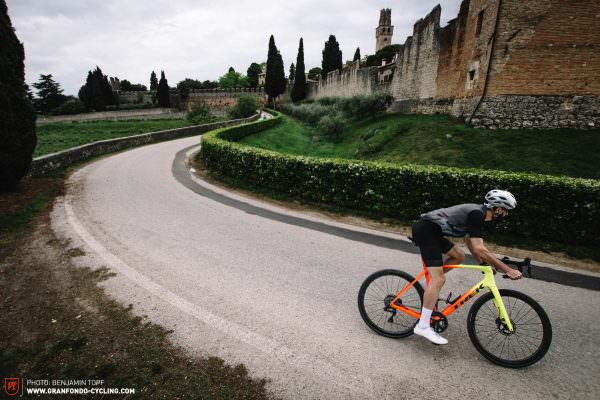
The combination of a 50/34 t crankset and a 11–34 t cassette gives plenty of reserves for steep climbs, but you might run out gears on those full speed straights and descents. Like most of the bikes on test, Trek rely on a two-piece cockpit, pairing a 100 mm Bontrager RSL Carbon stem with a Bontrager Pro IsoCore VR-SF handlebar measuring 440 mm in width. We’ve got nothing to complain about regarding the cockpit’s ergonomics and control, and the level of integration is far better than on the likes of the Specialized and Parapera, though the cable routing could be neater still. Despite the fact that the cable routing has to find a way around the IsoSpeed system in the head tube, we expect more from a bike at this price point.
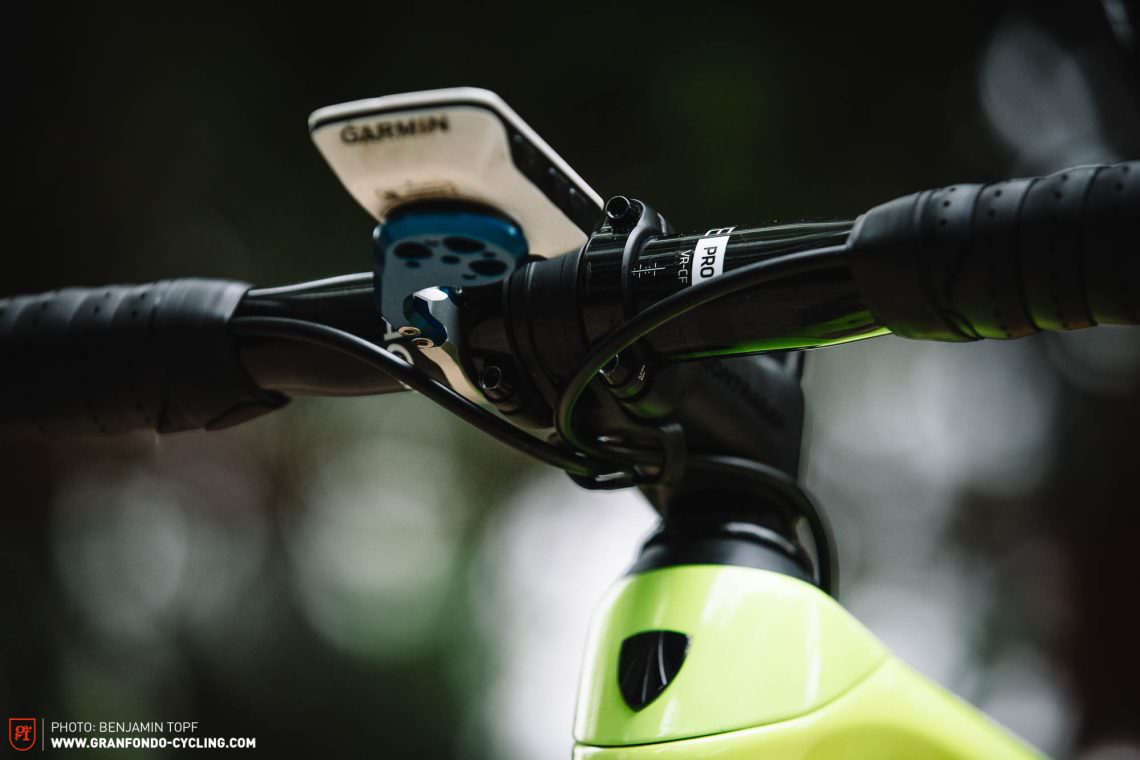
Trek Domane SLR 9 2022
Specifications.
Seatpost Bontrager Integrated D-Shape Brakes Shimano DURA-ACE 160/160 mm Drivetrain Shimano DURA-ACE Di2 Chainring 50/34 Stem Bontrager RSL Carbon 100 mm Handlebar Bontrager Pro IsoCoreVR-SF 440 mm Wheelset Bontrager Aeolus RSL 37 Tires Bontrager R3 Hard-Case Lite TLR Cranks Shimano DURA-ACE Di2 175 mm Cassette Shimano DURA-ACE R9200 11–34T
Technical Data
Size 47 50 52 54 56 58 60 62 Weight 7.87 kg
Specific Features
very generous tire clearance active damping thanks to IsoSpeed storage space in the down tube compatible with mudguards
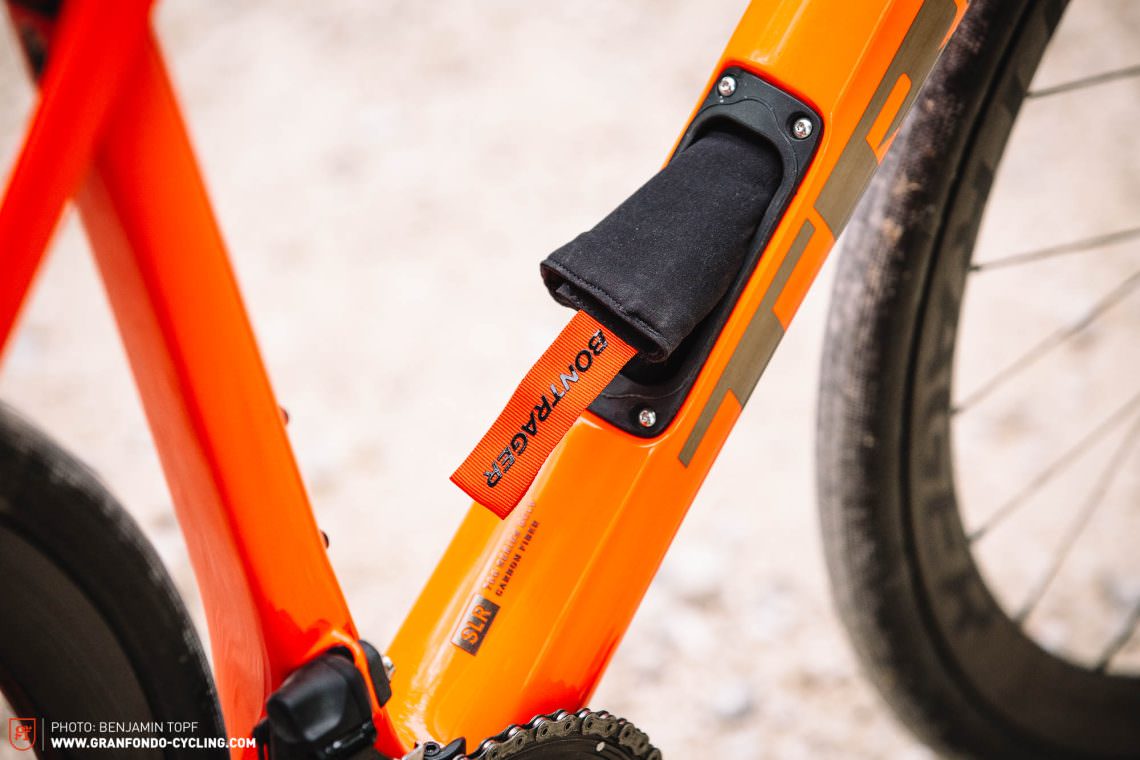
Asphalt, gravel, potholes – doesn’t matter! The Trek Domane SLR 9 will blast over it all thanks to the IsoSpeed system.
For the wheels, Trek rely on their in-house Bontrager RSL 37 models, featuring a rim depth of 37 mm and an internal width of 21 mm. These are fitted with Bontrager R3 Hard-Case Lite tires measuring 700 x 32C, inflating to 33 mm in this combination. The rims offer just enough support for the tires, and they’re set up without tubes. With a maximum tire clearance of 38 mm, the most generous on test, there’s plenty of room left if you fancy meatier tires. In size 58, our test bike tips the scales at 7.87 kg.

Riding the Trek Domane SLR 9
The Trek Domane SLR 9 is on par with the Cervélo Caledonia-5 ULTEGRA Di2 in terms of speed. The acceleration feels direct and willing, though it can’t quite keep up with the class-leading Specialized and Parapera in this regard. However, that isn’t to say it’s slow by any means, offering an outstanding level of efficiency in the mid and top speed range. Thanks to the bike’s aerodynamic optimisation and first-rate compliance, it feels unstoppable once it’s got going. The excellent compliance also proves that Trek’s suspension concept works: the adjustable IsoSpeed system at the rear allows riders to dial in the damping so that they’ve got the perfect balance, regardless of their size and weight. The vibration damping on the Domane is almost on par with the Specialized Aethos Expert or the BMC Roadmachine X ONE, and its bump absorption starts to outperform them as the impacts get bigger. As such, it’s a lot more versatile with regard to the kind of terrain you can ride on, whereas the BMC is limited to gravel and the Specialized is happier on asphalt.
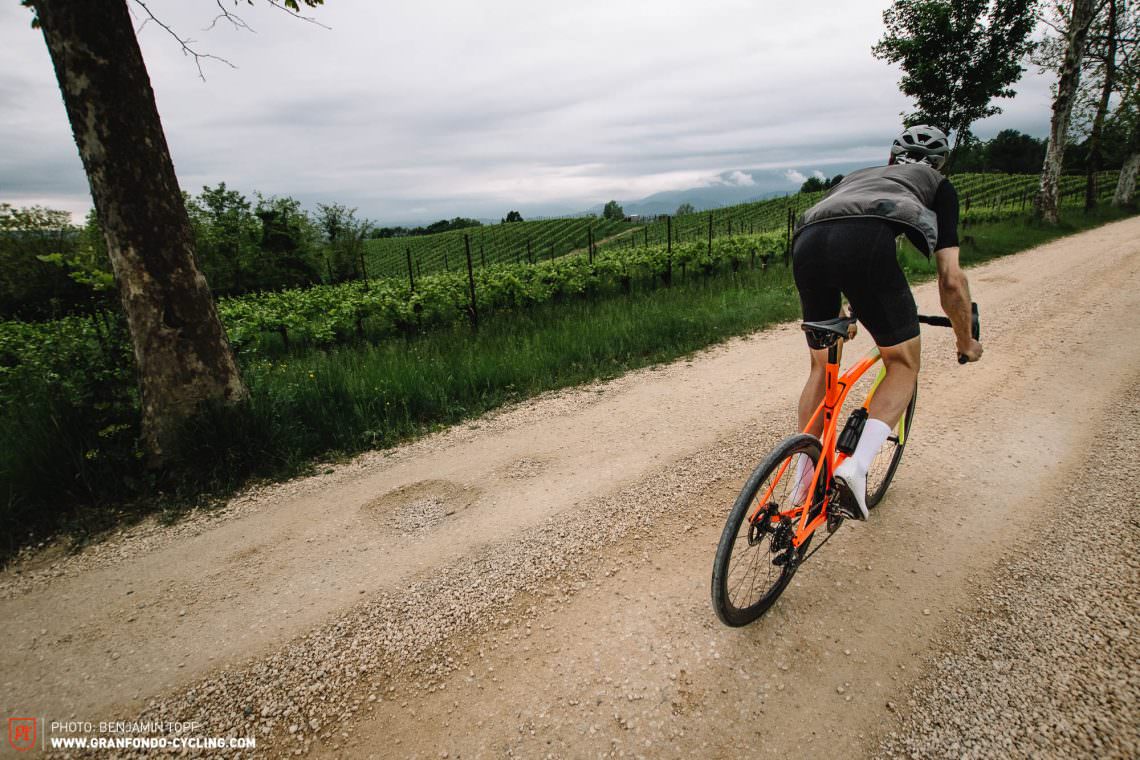
In terms of handling, the Trek Domane SLR 9 only has one minor weakness, which is that it feels slightly nervous at very slow speeds. This is something it has in common with thoroughbred race bikes, so it’s not surprising that it also feels increasingly stable as you pick up speed. In that case, the handling feels balanced, combining the same kind of composure as the most stable bikes on test with a level of agility that ambitious riders will approve of. The best description we can think of for the handling is: serious instead of playful. As such, it’s the kind of bike that will instil you with confidence regardless of your skill level and experience, though the cornering precision suffers slightly due to the wide tires. While we generally don’t have anything to complain about regarding rider confidence, we encountered a bit of paradox on the Trek Domane SLR 9. The new Shimano DURA-ACE stoppers are so good that they might overwhelm less experienced riders in some situations. Their braking power is immense even if you pull the lever only slightly, engaging so suddenly that they might catch you by surprise. This is something that you should keep in mind, especially when riding on slippery or loose surfaces. That said, experienced riders will love these brakes on fast, technical descents.

Tuning tip: if you don’t like attracting attention, paint it black! For everyone else: go ahead and enjoy riding the best all-road bike of the year
No other bike on test is able to combine so much everyday usability with such long-distance comfort and race performance on such a wide variety of terrain as the Trek Domane SLR 9. You can just as easily take it for a leisurely Sunday ride as you could to race and win at Paris-Roubaix. After being crowned the winner of the unofficial prize for most striking paint job, the Trek Domane SLR 9 proved to be the most versatile bike on test and thereby claims the top spot as the best all-road bike of 2022. And that’s not just because it doesn’t have many flaws, but above all because it’s got so many strengths. Congratulations on the win, Trek Domane SLR 9!
Riding Characteristics
- comfortable
Value for money
Trek Domane SLR 9
Size: 47 50 52 54 56 58 60 62 Weight: 7.87 kg Price: € 12,099

Indended Use
Our conclusion on the trek domane slr 9.
The Trek Domane SLR 9 delivers in terms of handling, comfort, and speed, making it fast and fun to ride on almost any kind of tour and a wide variety of terrain. As such, it’s the deserved Best in Test and the right bike not just for those who want to cruise along at a relaxed pace but also those who have a competitive streak and a yearning to race. If all you’re interested in is the climbs and you tend to circumnavigate poorly maintained roads, you’ll find better climbers in the test field.
- best performance in most scenarios
- lots of long-distance comfort
- very convenient thanks to storage compartment
- mounting points for mudguards
- limited seat post adjustability
- front cable routing takes a bit of getting used to
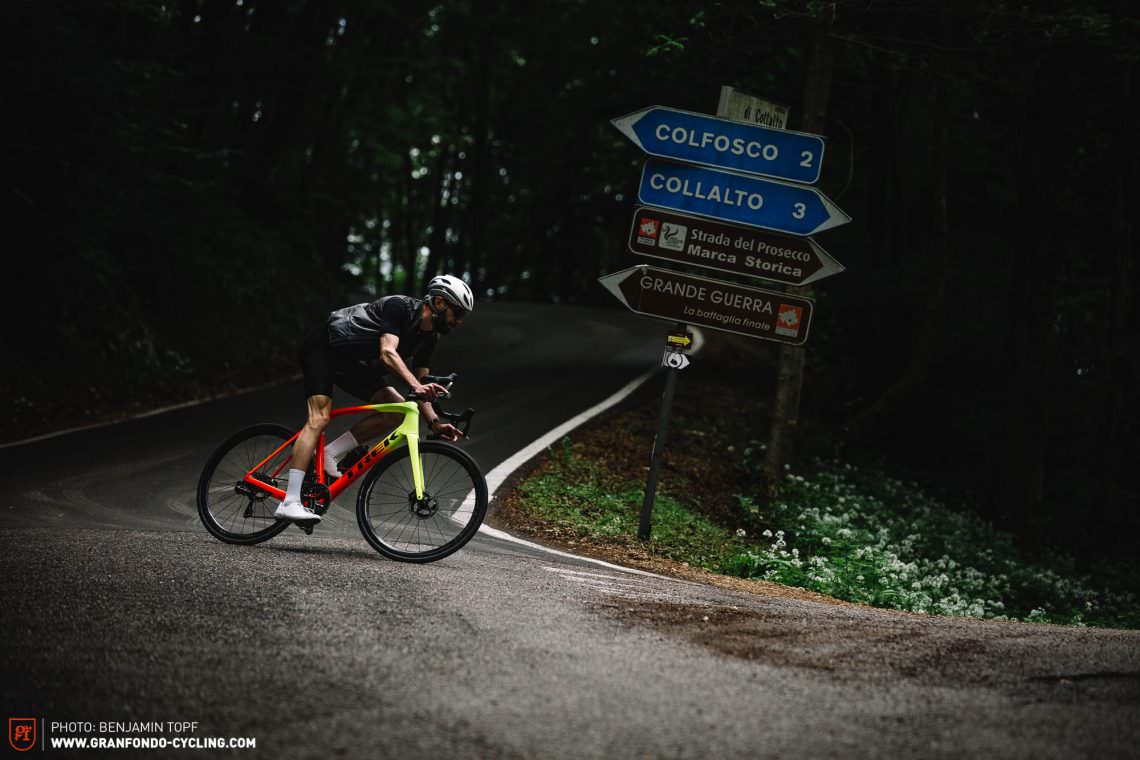
You can find out more about at trekbikes.com
The testfield
All bikes on review: BMC Roadmachine X ONE (Click for review) | Cervelo Caledonia-5 Ultegra Di2 (Click for review) | Parapera Atmos MASTERPIECE (Click for review) | ROSE REVEAL SIX DISC Red eTap AXS (Click for review) | Sarto Seta Disc (Click for review) | Specialized Aethos Expert (Click for review) | Trek Domane SLR 9
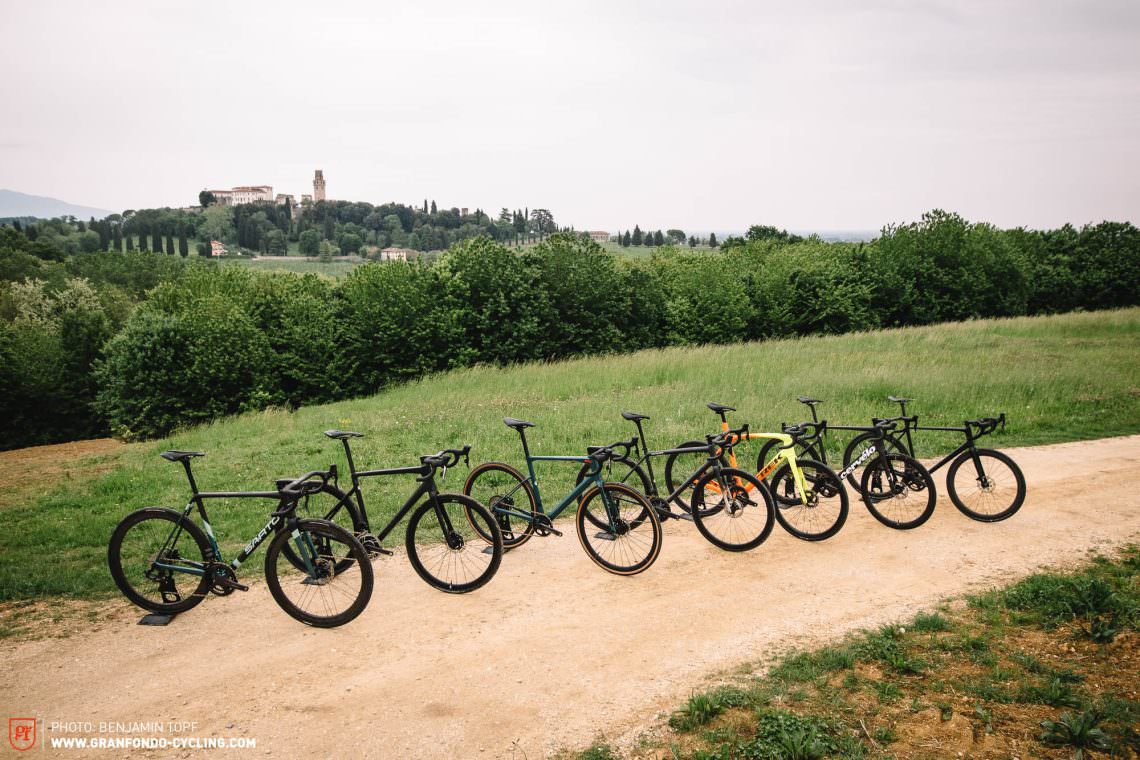
No, it’s not about perfect race tracks, it’s about efficiency. Fast, fleet-footed and efficient – those who want to speed along high-speed passages need a defined and spritely bike that accelerates with ease and efficiency. Nevertheless, reliable components are important too. We interpret “Smooth tarmac” bikes as follows: Hard efforts at high speeds with a maximum efficient bike on a consistently well-paved road. Effort-joy ratio: 80:30 (not everything has to be 100%!) ↩
… also known as bike riding. Broken-up roads in the hinterland, deadlocked gravel roads, loose surfaces – sometimes muddy, sometimes bone-dry. For this, it takes bikes with super all-round, handling and wearing qualities uphill and downhill. Effort-joy ratio: 50:50 ↩
If you want to use your bike almost every day, you usually do not need an extremely tuned racing machine. Solid components, which are able to cope with the rigours of continuous usage in any kind of weather, are part of the basic equipment. At the same time, the bike should have practicable details: integrated fenders/assembly options, luggage racks/attachment points and a light system or at least the option of installing bike lights. The position on the bike should be rather relaxed, the overall comfort high, so that the Afterwork Ride becomes a cure and not a curse. Effort-joy ratio: 30:70 ↩
You can find more info about our rating system in this article: Click here! ↩
Did you enjoy this article? If so, we would be stoked if you decide to support us with a monthly contribution. By becoming a supporter of GRAN FONDO, you will help secure a sustainable future for high-quality cycling journalism. Click here to learn more .
Words: Photos: Benjamin Topf
You may also like

HighRoad SL: Test debut of MAXXIS’ new lightweight road bike tire

2024 Pinarello DOGMA F – The road bike classic refined?

New Mahle X30 ebike motor – New hardware for sophisticated software

Is silver the new gold? Unboxing the new Roval Rapide CLX II Team LTD wheelset

ROSE BLEND – The drop bar all-rounder in review

The Lab: Tailfin Frame Bag – Plenty of Storage, Minimal Wobble
- off.road.cc
- Dealclincher
- Fantasy Cycling
Support road.cc
Like this site? Help us to make it better.
- Sportive and endurance bikes
- Gravel and adventure bikes
- Urban and hybrid bikes
- Touring bikes
- Cyclocross bikes
- Electric bikes
- Folding bikes
- Fixed & singlespeed bikes
- Children's bikes
- Time trial bikes
- Accessories - misc
- Computer mounts
- Bike bags & cases
- Bottle cages
- Child seats
- Lights - front
- Lights - rear
- Lights - sets
- Pumps & CO2 inflators
- Puncture kits
- Reflectives
- Smart watches
- Stands and racks
- Arm & leg warmers
- Base layers
- Gloves - full finger
- Gloves - mitts
- Jerseys - casual
- Jerseys - long sleeve
- Jerseys - short sleeve
- Shorts & 3/4s
- Tights & longs
- Bar tape & grips
- Bottom brackets
- Brake & gear cables
- Brake & STI levers
- Brake pads & spares
- Cassettes & freewheels
- Chainsets & chainrings
- Derailleurs - front
- Derailleurs - rear
- Gear levers & shifters
- Handlebars & extensions
- Inner tubes
- Quick releases & skewers
- Energy & recovery bars
- Energy & recovery drinks
- Energy & recovery gels
- Heart rate monitors
- Hydration products
- Hydration systems
- Indoor trainers
- Power measurement
- Skincare & embrocation
- Training - misc
- Cleaning products
- Lubrication
- Tools - multitools
- Tools - Portable
- Tools - workshop
- Books, Maps & DVDs
- Camping and outdoor equipment
- Gifts & misc

Frame/Fork: Quality products for the low price
The big talking point here for Trek is the ISOspeed decoupler. Essentially the seat tube isn't welded to the top tube/seat stay junction. The IsoSpeed itself consists of a bearing on either side, with a bushing forming the mechanical attachment between the top and seat tubes; this allows the whole length of the seat tube to flex under load. The initial, industry-standard 'lean on it to see what happens' test revealed a fair amount of flex in the frame - even in aluminium form, a material often known for building into frames that are a bit stiffer than carbon fibre equivalents.
On the road the compliance arising from that flex was noticeable - sometimes. I found that the frame's small bump sensitivity was not much different from other sportive or comfort bikes. However, when the going got even rougher - like on big potholes or really rough unpaved tracks akin to the cobbles of Flanders and Roubaix - the frame came into its own a bit more, softening the big hits.

The head tube is long at 17.5cm (I measured 17.3), and as such I found myself slamming the stem right down to the (quite tall) headset cap get my usual position (admittedly I run quite a racy position normally). Having said that, I have seen much longer head tubes on other endurance bikes too - Cervelo bikes spring to mind.
Build quality on this frame is excellent. The welds are all reasonably subtle, and there are both mudguard and rack mounts - a big plus for me, as I don't do riding on turbos throughout the rainy months, opting for the great outdoors instead. Similarly I was happy to find that the frame took 28mm tyres with a good few mm of room to spare. More on tyres in a minute.
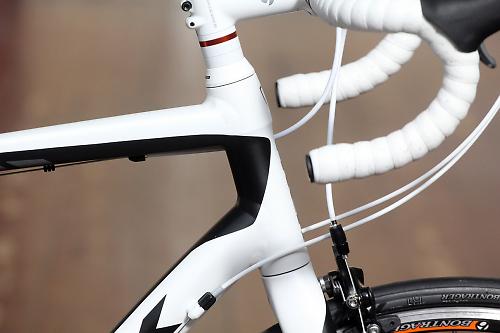
Press fit bottom brackets are becoming more and more prevalent on lower end bikes. You can make arguments for and against them. I tend to fall on the side of preferring threaded bottom brackets for ease of removal and maintenance, especially as the stiffness benefits of a press fit bottom bracket were not really all that tangible to me on a bike like this. However the cranks span flawlessly and there was no dreaded press fit creak to be heard.
Other than that I found the frame to be more than adequate. I can't say I stripped the bike down to get an actual weight of the bare frame, but it seemed pretty reasonable while out on the road. The paint finish was top notch - it ooked like I was riding a more expensive bike than I actually was.
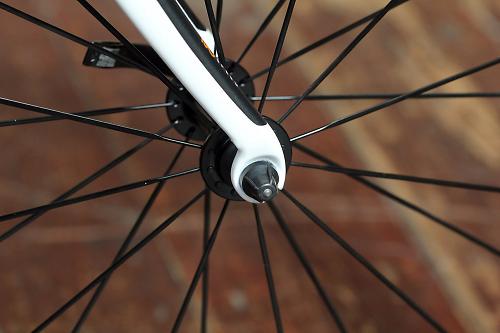
The Domane 2.0 fork is carbon, with an aluminium steerer. The fork is also an IsoSpeed product aiming to isolate road vibration, which manifests in the fork legs curving rather gracefully over the dropouts. The fork design works, but doesn't provide the same level of compliance as the rear end because the decoupler is a much more effective engineering solution. That led to a rather odd ride over certain road surfaces: there would be a lot of buzz through my hands, and then much less through the saddle. This is a minor point though, and I all but stopped noticing the difference as I became more accustomed to the bike. A way to compensate for this would be to run slightly less pressure than normal in the front tyre than the rear, or just fit plusher bar tape.
Build: Good value but a couple of changes needed.
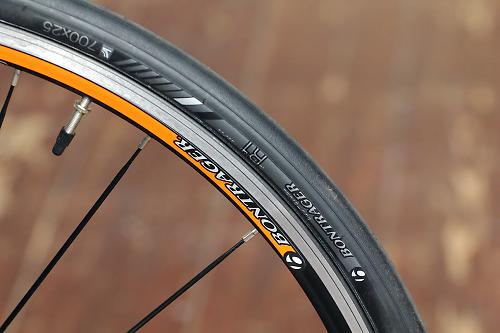
The Domane 2.0 is supplied with 25mm Bontrager R1 tyres. At first glance, on dry roads they seem like a decent idea. But at the first hint of rain or greasy roads, I didn't feel comfortable leaning the bike over in fast corners at all and found that the wheels would lock up rather too quickly for my liking. I did start to get used to them as I rode the bike more, but I was never fully at ease. Swtiching out to 28mm Continental Gatorskins - which aren't even the most supple of tyres - I was immediately more confident to really attack the descents.
The wheels are unbranded hubs laced to 'Bontrager-approved' rims with 24 spokes both front and rear. Unsurprisingly these wheels were no featherweights, but they performed perfectly well and weren't horrendously draggy on the climbs. The wheels also stayed true throughout the test, despite my best pothole and bridleway clattering, which was a bonus.
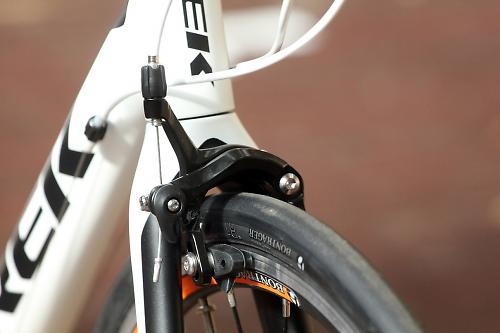
The unbranded alloy dual pivot brakes supplied were actually surprisingly powerful and had reasonable modulation. When combined with better tyres than those supplied, braking power was really excellent for the bike.
Trek supply the Domane 2.0 with a Shimano Tiagra group set. The group comes with a 50/39/30 triple up front and 12-30 10 speed cassette out back. Personally I'm not a fan of a triple - I've never run out of gears on a compact/28 cassette combo before - but with this combination I'd back myself to ride up a brick wall (provided enough science was ignored) and it complemented the considerable weight of the bike well. The cadence I could produce was epic, even on gradients of 20% or more. This is a big plus for those who might be just starting out in the world of cycling, or are looking to do some seriously tough and hilly days. It also meant I could do some sweet sweet wheelies up my local commute climb.
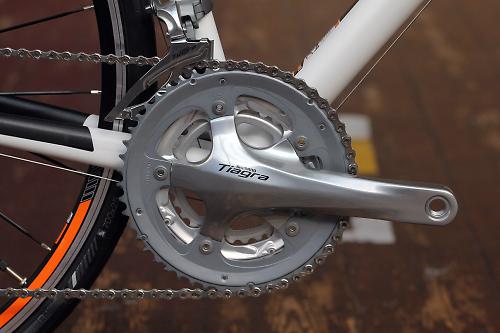
Out of the box I found that both derailleurs required a couple of barrel adjuster twiddles to really be sharp, but other than that the Tiagra performed excellently. I have a gripe with the Tiagra shifter hoods though. They are very big and even my average to large sized hands struggled when braking from the hoods. Shimanos 105 hoods are considerably more ergonomic in my eyes, and also do away with the 'washing line' gear cables coming out of the sides. That's purely an aesthetic factor though: my main problem is the ergonomics, or lack thereof.
The supplied bars - again 'Bontrager approved' - are 42cm wide. I ride 40cm bars on all my other bikes (that are 56cm, as with the bike on test) and the 2cm difference was noticeable. In my opinion the bike would have suited 40cm bars far better.
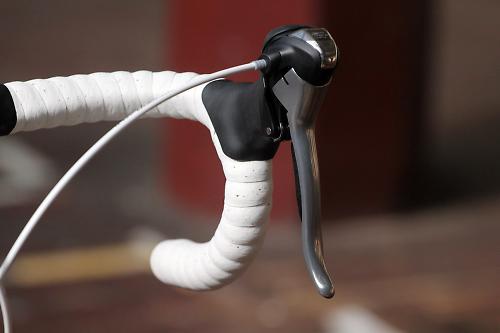
The Bontrager Affinity 1 saddle was rather good, sat atop the seat post that was another heavy but solid 'Bontrager approved' product. For longer rides I would personally have switched the saddle out for something that suits me better, but that sort of decision is always a very personal thing.
Ride: Comfy yet still responsive.
On the flat I found the Domane's weight to be unsurprisingly tough to accelerate up to speed, but the bike cruised well once you got it there. While climbing, again the hefty wheels held the bike back a bit, but it was comfortable both in and out of the saddle, and the triple chainset meant that I could scale any and all Tarmac grades I could find.

When pointed down the hill and getting into the drops (and with different tyres) the Trek was stable and surefooted. I had the bike up to almost 90kph down some of Bath's steeper declines and found I could bank the bike over in hard and fast corners with no hair-raising moments. The steering was reasonably responsive, potentially siding on the slow, rather than the twitchy side. But this was no problem for me and I really enjoyed hammering descents on it by the end of the test. This bike was never aimed to be a racer, but thankfully Trek have managed to marry the expected comfortable 'endurance' position for this bike with a lively steering response.
As pointed out before, at first the ride was slightly odd between front and rear wheel in terms of differing levels of road buzz, but overall I found it to be comfortable and never overly flexy. That's as close as I dare get to the dreaded 'compliance/stiffness' cliche.
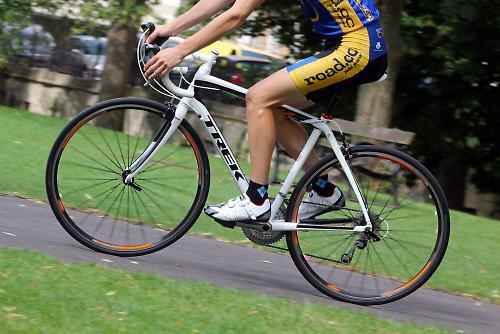
At the £900 mark, Trek have provided a frame and fork that is fully primed for some long term upgrades. If the bike were my own, my first priority would be to change the shifters and swap out the triple for a compact crankset. Upgrading these parts would cost more than the 200 jump up to the next bike in the range (the 2.3) but at the same time you are now out of the magic £1000 cycle to work scheme price point. So it's sort of swings and roundabouts really. Either way you are getting a top frame and fork for 900 quid, with perfectly functioning gears and excellent scope to upgrade in the future.
Comfortable and entertaining entry-to-mid-level bike, with excellent scope to upgrade in the future; change the tyres though
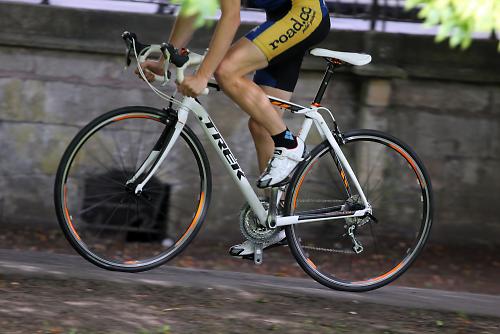
road.cc test report
Make and model: Trek Domane Two Series
Size tested: 56, White
About the bike
State the frame and fork material and method of construction. List the components used to build up the bike.
200 Series Alpha Aluminium, IsoSpeed
Trek IsoSpeed carbon, SpeedTrap compatible
50, 52, 54, 56, 58, 60, 62cm
Tell us what the bike is for, and who it's aimed at. What do the manufacturers say about it? How does that compare to your own feelings about the bike?
Alloy hubs w/Bontrager Approved alloy rims
Bontrager R1 Hard-Case Lite, 700x25c
Shimano Tiagra STI, 10 speed
Front derailleur
Shimano Tiagra
Rear derailleur
Shimano Tiagra, 50/39/30 (triple)
Shimano Tiagra 12-30, 10 speed
Bontrager Affinity 1
Bontrager Approved, 27.2mm, 8mm offset
Bontrager Race VR-C, 31.8mm
Bontrager Race Lite, 31.8mm, 7 degree
1-1/8" integrated, semi-cartridge bearings
Alloy dual-pivot
Bontrager Gel Cork tape
Mudguard & rack mounts
Frame and fork
Tell us about the build quality and finish of the frame and fork?
Excellent build quality and finish here. In my opinion, with different parts hung off it, the bike could easily be passed off as a seriously expensive machine.
Tell us about the materials used in the frame and fork?
Aluminium Frame, with ISOspeed decoupler.
Carbon Fork (Aluminium Steerer)
Tell us about the geometry of the frame and fork?
The 56cm frame provided for test has:
71.9 ° Head angle
17.5cm Head tube length
73.3 ° Seat tube angle
55.4cm Effective top tube length
52.5cm Actual Seat tube length
100.8cm Wheelbase
These numbers all added up to a bike that I was at ease on very quickly.
How was the bike in terms of height and reach? How did it compare to other bikes of the same stated size?
Height and reach were both more "conservative" as you would expect from a bike aimed at endurance riding/racing. It was similar to most other bikes I've ridden in this category.
Riding the bike
Was the bike comfortable to ride? Tell us how you felt about the ride quality.
Yes, mostly comfortable. The decoupler isn't a complete game changer but it does cushion the big hits through the back wheel well.
The fork provides some compliance but it's not quite in the same league as the rear, leading to a bit of a difference between front and rear buzz over certain road surfaces.
Did the bike feel stiff in the right places? Did any part of the bike feel too stiff or too flexible?
No problems with stiffness, or lack thereof. I didn't have my marginal gains hat on for a bike like this but nonetheless it performed well.
How did the bike transfer power? Did it feel efficient?
It felt good - a bit sluggish compared to more expensive bikes but that's to be expected. For the price point it was great.
How would you describe the steering? Was it lively, neutral or unresponsive? Neutral - a smidge on the slow side. Not an issue at all though!
Which components had the most effect (good or bad) on the bike's comfort? would you recommend any changes?
Narrower 40cm bars would have suited the 56cm frame much better - or at least my taste and fit preference.
The Tiagra shifters - while excellent at changing gear - were massive and actually hindered me when attempting to brake from the hoods.
Which components had the most effect (good or bad) on the bike's efficiency? would you recommend any changes?
I don't know if it really falls under efficiency - but the tyres had to go. They were woeful in the wet and made the bike feel more than a bit sketchy.
Hit some of my fastest ever speeds on this bike (89kph to be exact!) and the bike felt great.
With better tyres on it was really very surefooted.
The weight was always going to be a bit of a drag, but the triple helped out and it was comfortable to winch up a hill.
The drivetrain
The barrel adjusters needed a quick tune, and from then on the gears were excellent.
A triple and a 12-30 cassette, Tiagra throughout. No surprises here that it was hefty.
Bottom level drivetrain, works almost as well as any top end group. I love trickle-down tech.
Tell us some more about the drivetrain. Anything you particularly did or didn't like? Any components which didn't work well together?
I was not a fan of the shifters at all as they didn't feel good in my hands at all.
I'm not a triple man generally, but in this case it did help offset the weight of the bike a bit. Plus I think it suits the target market well.
Wheels and tyres
Wheels - OK. Tyres - dire
No worries here.
Heavy. Unsurprisingly.
Wheels were fine.
Cheap, but they worked well for what they were. And were expected for a bike of this price.
Tell us some more about the wheels and tyres.Did they work well in the conditions you encountered? Would you change the wheels or tyres? If so, what for?
I would (and did) change the tyres instantly. I went for 28mm Continental Gatorskins as that is what I had to hand, but any 28s would do to increase comfort and cornering grip.
Unbranded - Heavy.
The bars annoyed me and the saddle wasnt great for long (100km plus) rides.
Tell us some more about the controls. Any particularly good or bad components? How would the controls work for larger or smaller riders?
I would swap out the bars for 40cm ones as it felt a bit wrong. I'd hope the next size down has 40cm bars or it would feel very odd indeed. In time I would personally change the saddle too.
Your summary
Did you enjoy riding the bike? With different tyres, yes
Would you consider buying the bike? If I were in the market for this kind of bike I would.
Would you recommend the bike to a friend? Yes.
Overall rating: 8 /10
About the tester
Age: 21 Height: 182cm Weight: 73kg
I usually ride: On-One Carbon Whippet Single Speed MTB/Kinesis Pro6 My best bike is: Scott CR1 Pro
I've been riding for: 10-20 years I ride: Every day I would class myself as: Experienced
I regularly do the following types of riding: cyclo cross, commuting, club rides, sportives, general fitness riding, fixed/singlespeed, mtb,
Help us to fund our site
We’ve noticed you’re using an ad blocker. If you like road.cc, but you don’t like ads, please consider subscribing to the site to support us directly. As a subscriber you can read road.cc ad-free, from as little as £1.99.
If you don’t want to subscribe, please turn your ad blocker off. The revenue from adverts helps to fund our site.
Help us to bring you the best cycling content
If you’ve enjoyed this article, then please consider subscribing to road.cc from as little as £1.99. Our mission is to bring you all the news that’s relevant to you as a cyclist, independent reviews, impartial buying advice and more. Your subscription will help us to do more.
Add new comment

How might this compare - for comfort - to a vintage steel racer?
- Log in or register to post comments
Markus wrote: How might this compare - for comfort - to a vintage steel racer?
Hi there, Markus. While steel is real, and still the stuff of legend, it's not going to be as compliant simply by nature of the fact that it doesn't have a decoupler. It's that particular piece of tech that separates the Domane from pretty much anything else out there.
The proof is in the pudding though, and anything else I might say will make me sound like a typical marketing shill. A test ride on one, ideally immediately after riding a different bike on the same stretch, will really be all you need to understand the effects of the decoupler.
Last year, I bought a Trek Madone 2.1 which had Bontrager R1s on (700 x 23c). A month into my proud new ownership, I'm riding downhill at approx 20mph in north Wales. The road was wet as I braked approaching a mini roundabout. The tyres did just what you described. I came off, blacked out, and ended up in an ambulance with road rash. Thankfully, the Trek got off with very minor damage. The tyres were binned as soon as I got home though.
Trek dealers should be made to pull them straight away.
Good to know about the R1 tyres. I'm picking up a new Madone 2.1 in a couple of weeks - I will be sure to change them out and sell the tyres on as quickly as I can!
EarsoftheWolf wrote: Good to know about the R1 tyres. I'm picking up a new Madone 2.1 in a couple of weeks - I will be sure to change them out and sell the tyres on as quickly as I can!
Agree they are fairly horrific and shouldn't appear on the bikes in future. They were the only thing I felt I absolutely had to change on my 2013 Domane 2.0, other than that it is/was a cracking ride.
Latest Comments
There are shifters on the market that don't even require batteries. They cleverly transfer the movement of your finger to the derailleur with only...
Exactly this. Why do people give these no marks their names? Just don't do it
Or if there were always good guys with guns around...
Well I'm still not quite sure what "good" you're interested in: you've said it's not less traffic (perhaps you live somewhere without any?) As...
Apparently the statistics prove that a helmet offers no protection whatsoever, under any circumstances.
Another attempt at approximating a Gran Sport. The photo doesn't show how bad the paint and chrome are. I did find a reasonable nail varnish as a...
They came out of nowhere
that is classed as a normal pass for me...
Only in Cornwall..........
Related Reviews
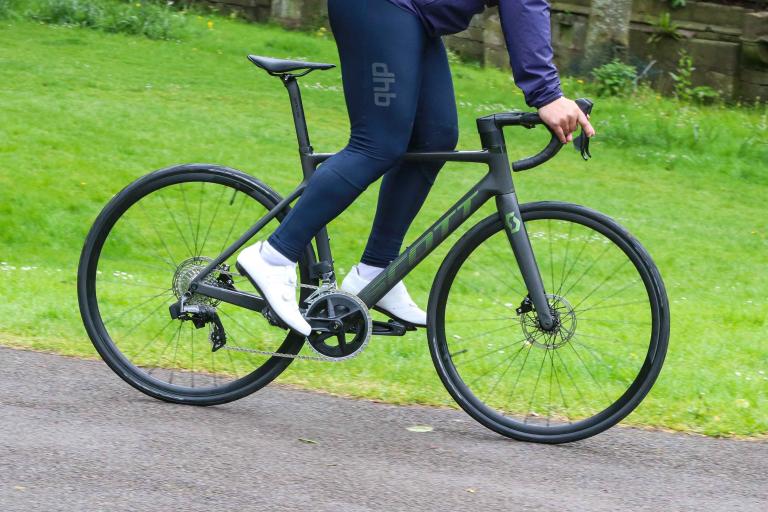
Scott Addict RC 30 2024
Screaming out for some better wheels, but a brilliant frameset in terms of stiffness and ride quality

Sonder Prima Al 105 Di2
Fun, fast and great value, though not the most refined aluminium frame on the market

Orbea Orca Aero M10iLTD 2024
Stunningly fast without sacrificing versatility, handling or comfort
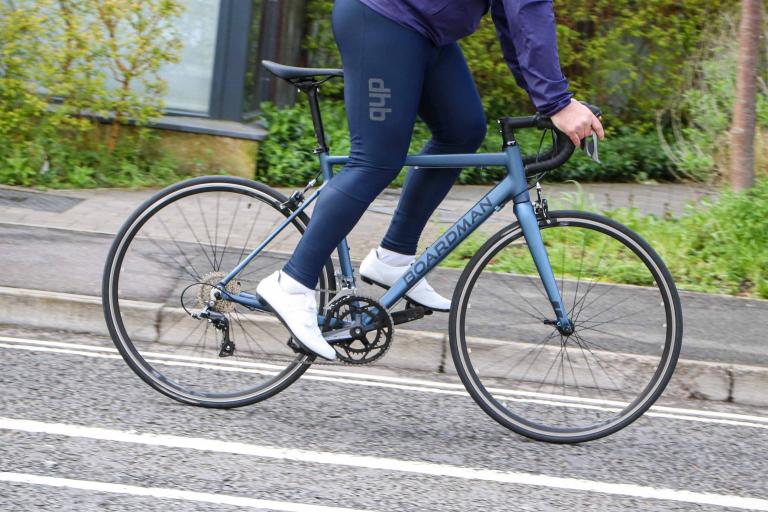
Boardman SLR 8.6
Comfortable, lively ride, an excellent gear range and well-chosen components – one of the best entry-level bikes you can buy
- MAGAZINE OFFERS
- BIKE INSURANCE
- Best Products
- Maintenance
- Accessories
- Long-Term Reviews
- BikeRadar Podcast
- First Look Friday
- Bike of the Week
- Tech Features
- Routes and Rides
- Bike Galleries
- BikeRadar Bargains
- Buyer's Guides
- Fitness & Training
- Sizing & Fit
- Mountain Biking UK
- Cycling Plus
- Bike of the Year 2024
Trek Domane SL6 eTap review
Endurance smoothy goes wireless
Dave Caudery / Our Media
Warren Rossiter
Impossibly smooth riding; handles with ease; very versatile
Carrying a bit more weight than its rivals
Trek’s long-running endurance road bike , the Domane, has an impressive history of wins, including both of the most famous cobbled Classics, Paris-Roubaix and the Tour of Flanders.
Over the years, the Domane has evolved from a soft-tail road bike to a front and rear IsoSpeed suspension-equipped bike with aerodynamic shaping, inspired by the Wisconsin-based brand’s aero road platform, the Madone.
The Domane chassis, along with its suspension, also has a class-leading tyre clearance of 38mm.
All of these elements combine to create a machine that should prove the Domane capable of meeting anyone’s endurance-bike needs, and much more beyond. It's fully deserving of its place in the endurance category of our 2022 Bike of the Year Awards
The original Domane was based around a simple idea of separating the seatstays and top tube from the seat tube, to allow the seat tube to act like a long seatpost moving fore and aft and taking the sting out of rough roads.
This was achieved via Trek’s IsoSpeed decoupler; the design constrained the seat tube laterally, but it was joined via a ‘pin’ joint that rotated around a slick bush as the seat tube flexed.
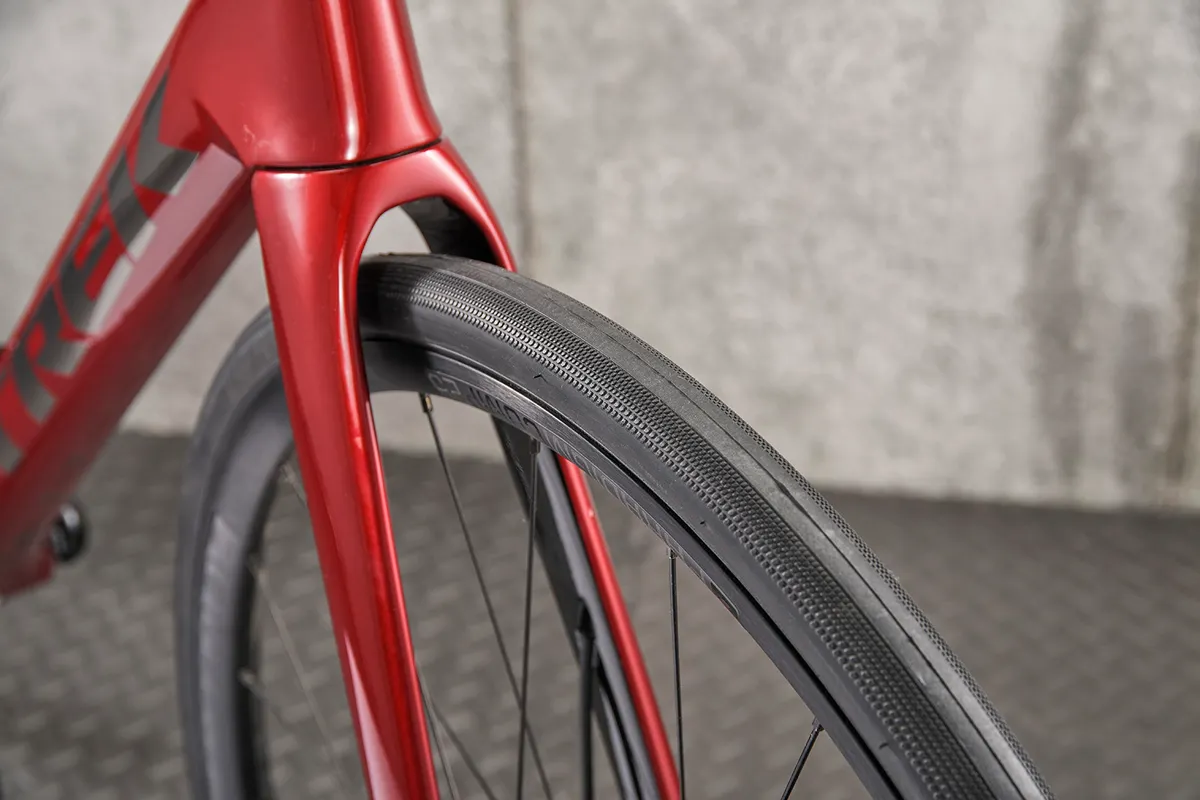
The Domane has evolved with a front IsoSpeed system that works in a very similar way. The traditional headset is replaced with a rocker cup located at the top of the headset that locks in the steerer tube laterally and, like the rear, allows the steerer to flex fore and aft, smoothing out the road.
The Domane frame routes the brake hose under the bar and stem, and around to the rear of the head tube (not dissimilar to how Cervélo routes its S-Series bikes). It’s an obvious nod to aero, though Trek hasn’t gone as far as the full integration seen on Cervélo’s Caledonia .
I like that the frame boasts some great practical features, including proper mudguard mounts (Trek has dedicated Bontrager mudguards for the Domane) and top-tube mounts for bento-box style storage.
It even has a storage chamber hidden underneath the down tube bottle bosses that’s large enough to store a spare tube, CO2 cartridge and multi-tool , plus it comes with a custom-sized tool wrap to stop any rattles.
Trek Domane SL6 eTap specifications
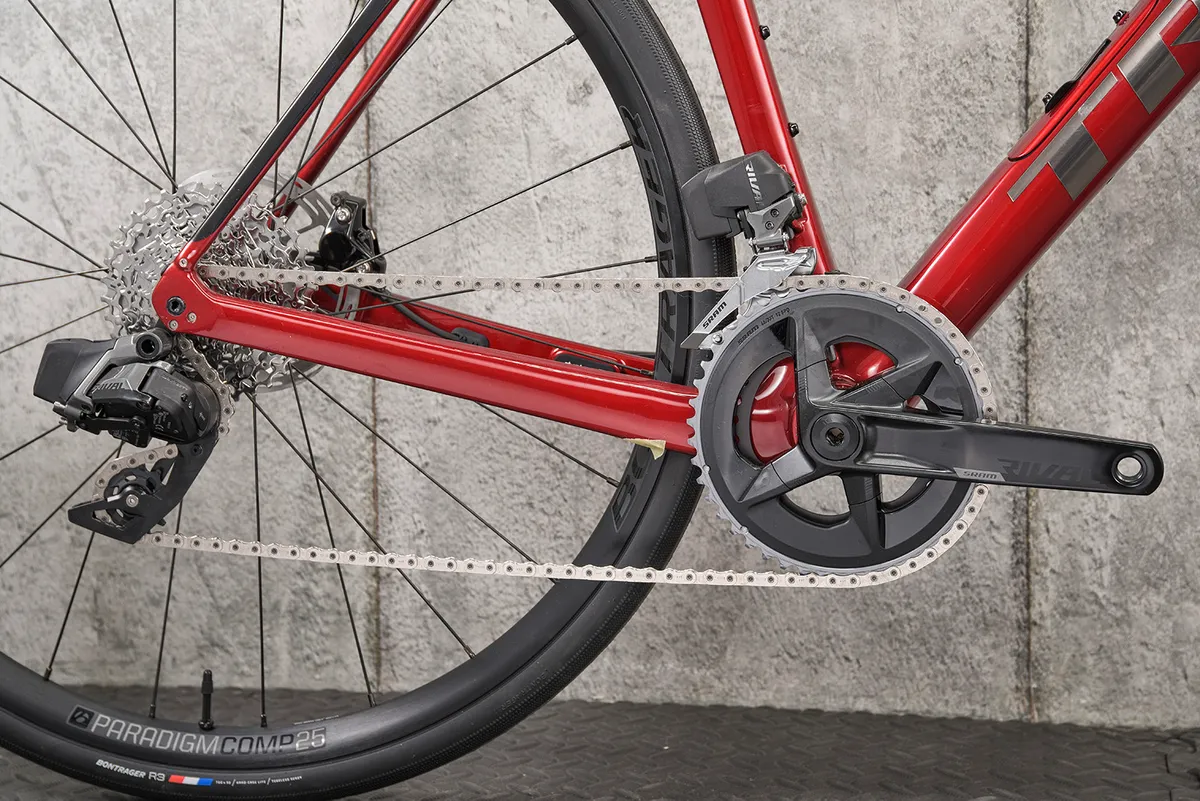
The SL6 might ‘only’ be available constructed from Trek’s OCLV 500 series carbon, compared to the 700 series found on the much pricier SLR models, but despite weighing a few extra grams it’s still very much a premium carbon chassis with some clever tech built in.
The drivetrain comes courtesy of SRAM’s very impressive and affordable (considering it’s electronic) groupset, Rival eTap AXS . Its shifting is a match for SRAM’s more expensive wireless offerings, and it shares the same tunability and connectivity through the brilliant, and free, AXS app.
The 46/33, 10-36 gearing combination is pitched perfectly for a bike such as this. The 46/10 bottom gear has all the speed potential I want when descending or pushing hard on the flat.
At the other end, the 33/36 offers such a light, easy-to-spin gear that I found myself actively looking for steep climbs on my test rides just to see how achievable the Domane makes climbing.
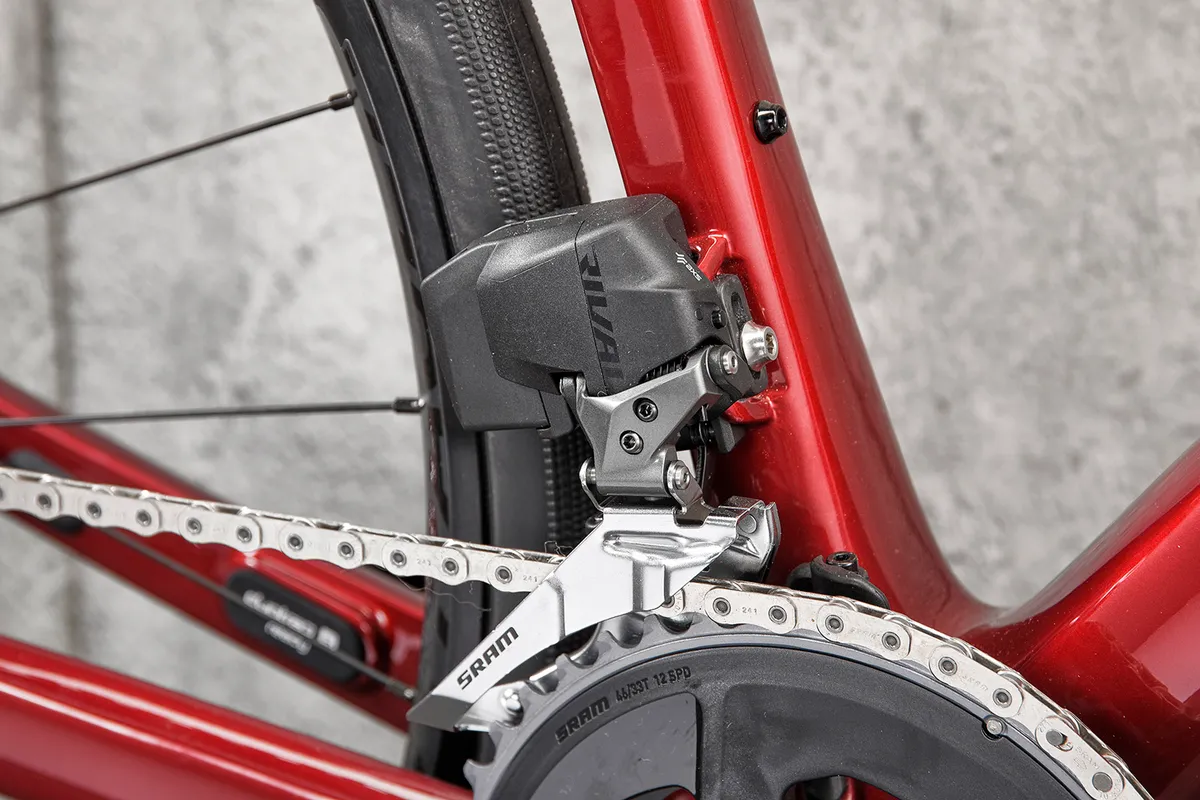
Elsewhere, as you’d expect on a Trek bike, parts are all from Bontrager (Trek’s component partner brand).
The wheels are Bontrager’s Paradigm 25s. As the name suggests, these have a shallow depth rim that’s impressively wide at 25mm (internal), and they’re shod with Bontrager’s R3 tyres in a generous 32mm width.
With the Domane, Trek was one of the first brands to properly explore wide rims and tyres on an endurance bike. It’s certainly set a trend – just look at the specification of Cannondale’s Synapse and BMC’s Roadmachine for evidence.
The cockpit combines a simple alloy Bontrager stem (compatible with the range of Blender out-front accessory mounts) and IsoZone VR-SF handlebar.
The bar is designed to work with Bontrager’s gel pad and tape combo and is, quite frankly, brilliant.
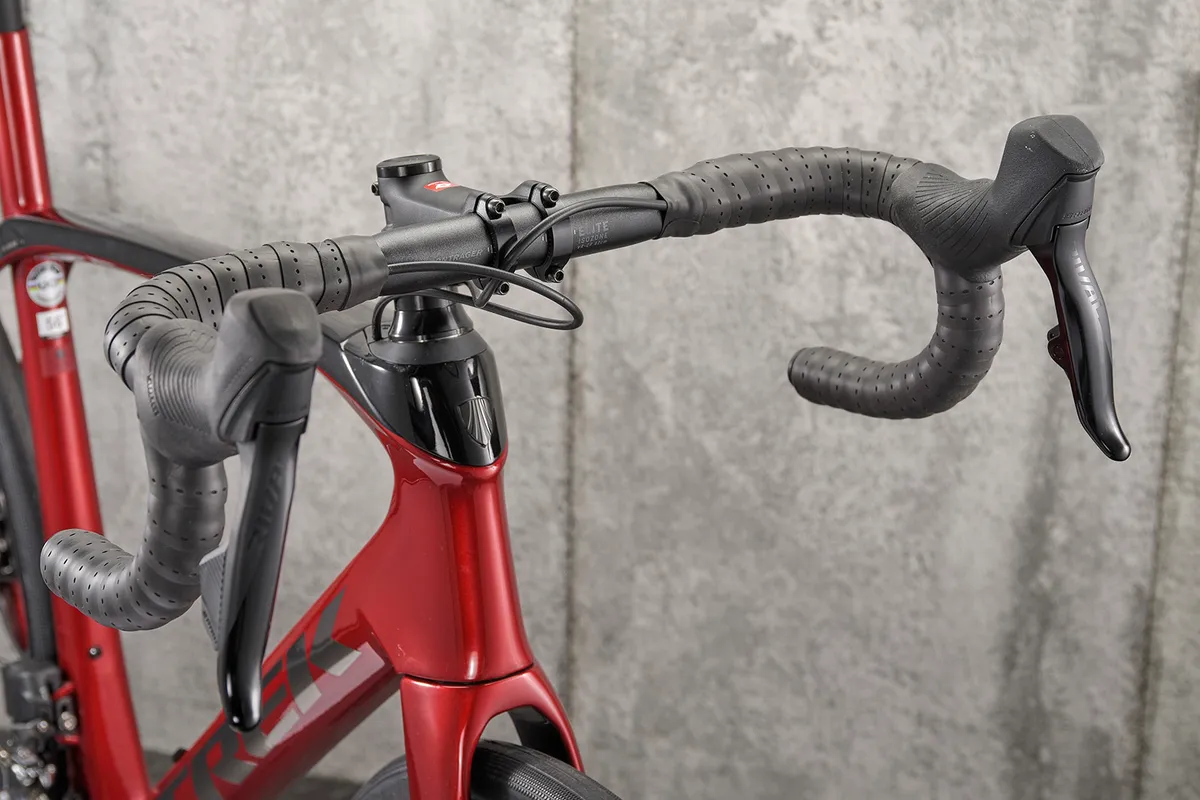
Oversized top sections fit perfectly in the hand, while the compact drop is so well shaped that, even if you’re the most hood-hanging of riders, you’ll find yourself enjoying the aero advantage of staying down in the drops comfortably.
Out back, Trek has a unique approach to the seatpost on the Domane, because the IsoSpeed system relies on the seat tube being able to flex unhampered.
Rather than using a standard post, the Domane has a shortened mast that inserts into the extended seat tube. This locks into place through an internal expanding clamp, accessed through a slot in the seat tube.
It works well, but make sure the bike is set up for you in store, because the minimal adjustment through the mast means you need to make sure you get the correct-length mast. It’s topped with Bontrager’s rather traditional-shaped and very amply padded Verse saddle.
Trek Domane SL6 eTap geometry
My 56cm test bike has a 591mm stack, combined with a short 377mm reach. It makes for a fairly relaxed ride position compared to the Cannondale Synapse, and especially the Cervélo Caledonia.
I found myself altering the saddle position, sliding it back to the limit on its rails to extend the reach and allow myself to get a bit lower.
The 71.9-degree head angle is more relaxed than most endurance bikes, while the 73.3-degree seat angle is steeper. Trek has kept the wheelbase short, however, at just 1,008mm.
Trek Domane SL6 eTap ride impressions

The Domane is one of the smoothest road-going bikes ever made, and certainly one of the best-rolling bikes I’ve tested. That’s quite the bold statement, I know, but the way in which the Domane simply glides over poor surfaces is truly a wonder.
The Domane’s origins as a cobble-busting racer set the standard for its compliance, but its evolution makes it very much an endurance bike of today.
Not many racers would opt for a 32mm-wide tyre, but I’m sold; the R3s roll beautifully.
Yes, they may carry a bit more weight than a 26 or 28mm race tyre, and they’re wrapped around some pretty middleweight wheels in the Paradigm 25s (1,775g a pair). That may make some of you turn your nose up but, on the road, I didn’t notice any excess weight.
The Domane is a mean companion on ascents. Despite weighing close to 9.5kg, it simply wafts over rough tarmac, and the light end of the Rival gear range makes for comfortable climbing.
It breezes uphill if you’re sitting on the saddle and holding the tops, with their comfortable oversized diameter and wonderfully plush cushioning tape.
If you want to get out of the saddle up in the hoods and punch it to the summit, you’ll find a bike that responds in kind.
Descending is almost as impressive – the slightly relaxed head angle, combined with the compliance in the chassis, makes for a bike that’s so very assured going downhill at speed.
I found myself carving into corners, looking for the best line and ignoring imperfections in the road surface, safe in the knowledge that whatever I threw at the Domane, it simply smothered the bumps, swallowed the ruts and kept on tracking straight.
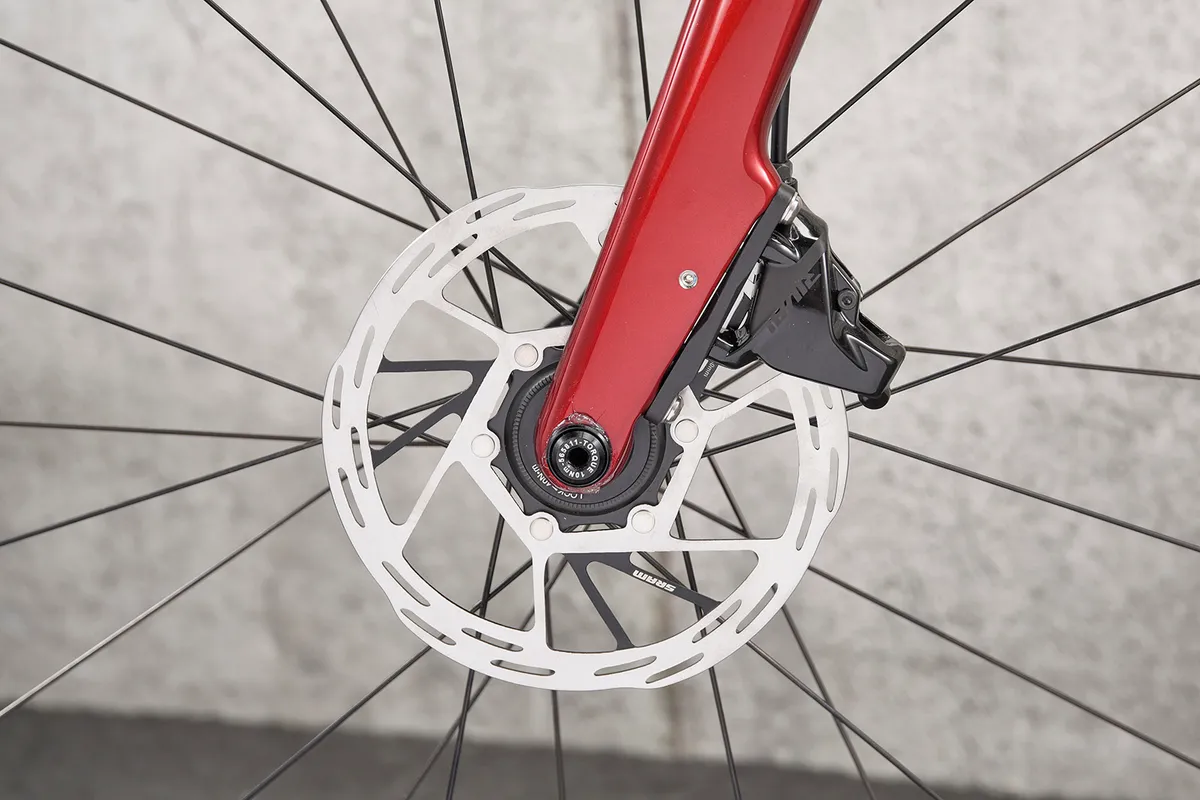
The Domane’s brilliant handling on rough roads, along with its generous 38mm tyre clearance, opens up the world of light gravel. Just like Cannondale’s new Synapse and the wonderfully different BMC Roadmachine X, the Domane is off-road capable – and it pre-dates both of those designs.
As part of my test riding, I took the Domane on unmetalled military roads and wide byways, and it coped admirably, swallowing ruts and lumps with ease.
As with the Synapse and Roadmachine, I wouldn’t head for technical singletrack on it, but excursions on Welsh forest fireroads, the rail trails of the Peaks, gravel roads of north Yorkshire, my home military roads of Salisbury Plain and New Forest tracks are easily within the Domane’s capability.
Trek Domane SL6 eTap bottom line
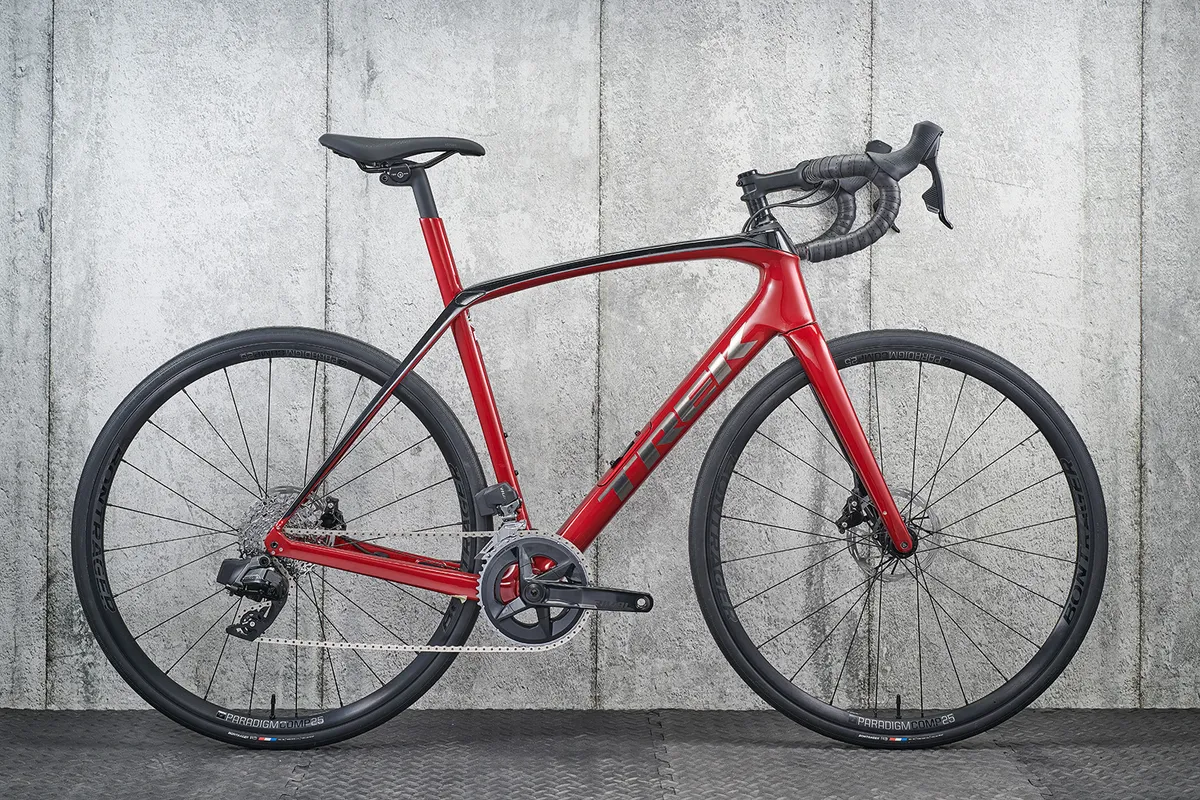
The Domane SL6 set the standard for the new breed of versatile endurance bikes. It may have been born from the needs of a few elite athletes in a few elite races, but it's a bike that could easily be one of the most versatile on sale today.
The groupset is excellent: easy to use, packed with features beyond stopping and shifting gears, and very reliable. Although you can find it on much cheaper bikes, all of the components do their job well, yet none are particularly show-stopping.
Comfort is impeccable, even though for me the squishy padded saddle is a bit of overkill (though not uncomfortable).
The Domane, with the complexity in its chassis design, carries a bit more weight than its rivals, but none of them can match its smoothness.
Endurance Bike of the Year 2022 | How we tested
The best endurance road bikes combine a comfortable ride position with heaps of versatility – including features such as mudguard or pannier rack mounts – and speed, to create a useful platform that will fare well no matter the ride.
Testing for our 2022 Endurance Bike of the Year category began with a high-tempo 2.5-hour ride to get an early impression of a bike's ride quality and to carry out any adjustments.
For the meat of this year's testing, each bike was taken on the same 82-mile/132km loop through rural Wiltshire.
After this, we rode the bikes back-to-back, coming to a decision on the best by comparing how well each handled across a variety of terrain and, in a competitive market, how its spec compares with the other bikes on test.
Our 2022 Endurance Bike of the Year contenders are:
- BMC Roadmachine X
- Bombtrack Audax
- Cannondale Synapse Carbon LTD RLE (category winner)
- Cervélo Caledonia Ultegra Di2
- Trek Domane SL 6 eTap
Thanks to our sponsors HUUB , Lazer , 100% and Garmin for their support in making Bike of the Year happen.
Share this article

Senior technical editor

- Terms & Conditions
- Subscribe to our magazines
- Manage preferences
- Trek 2022 Domane SLR Fork
We'll take care of you. Period.
It's our mission to provide you with world-class hospitality every time you visit us online or in-store. We're always here to help you. It's the Trek way.
30 Day Unconditional Guarantee
Ride it and love it, or we'll take it back. If for any reason you're not 100% happy with your trekbikes.com purchase, you can send it back within 30 days for a refund - no questions asked.
Free shipping on all accessory orders over $49
Simple, free delivery options for however you prefer to shop. Accessory orders over $49 ship to your home for free, and all accessory orders ship free to your local retailer for in-store pickup
More options
The Trek Domane SL 6 Can Glide Over Any Road Surface
With its own IsoSpeed suspension system, this versatile road bike is a winner for ride quality and value

Price: $3,200 Weight: 17.1 lb. (56cm) Use: Road
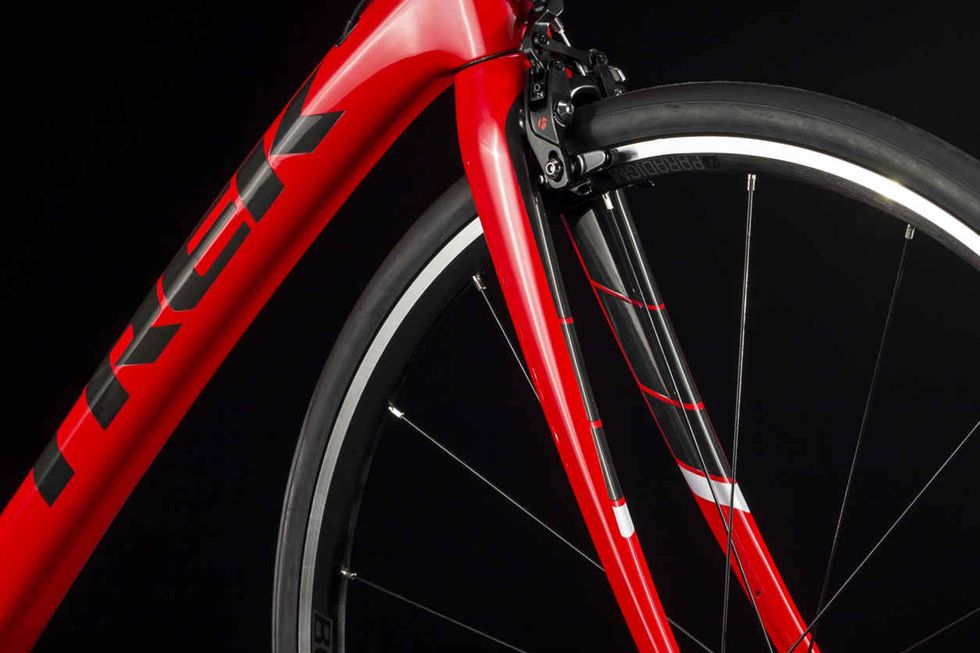
The Domane SL and SLR Family The Domane SL family starts with the SL 5 (in unisex and women’s versions), with rim brakes and a full Shimano 105 groupset, and tops out at the SLR 9 Disc, a $12,000 bike with full Shimano Dura-Ace, Di2, hydraulic disc brakes, and Aeolus 3 D3 Disc carbon wheels. The SLR models offer additional clearance for up to 32mm tires; all the bikes have front and rear IsoSpeed, which offers the patented road-damping technology that we love so much about this series. The SLR 6 comes in a disc-brake model and a disc-brake gravel version with wider, burlier tires. The SL 6 is a more budget-friendly version in the line, but it still brings the comfortable ride geometry and road suspension these bikes are known for. And, with a full Shimano Ultegra groupset, it has the distinct component advantage over the SL 5.
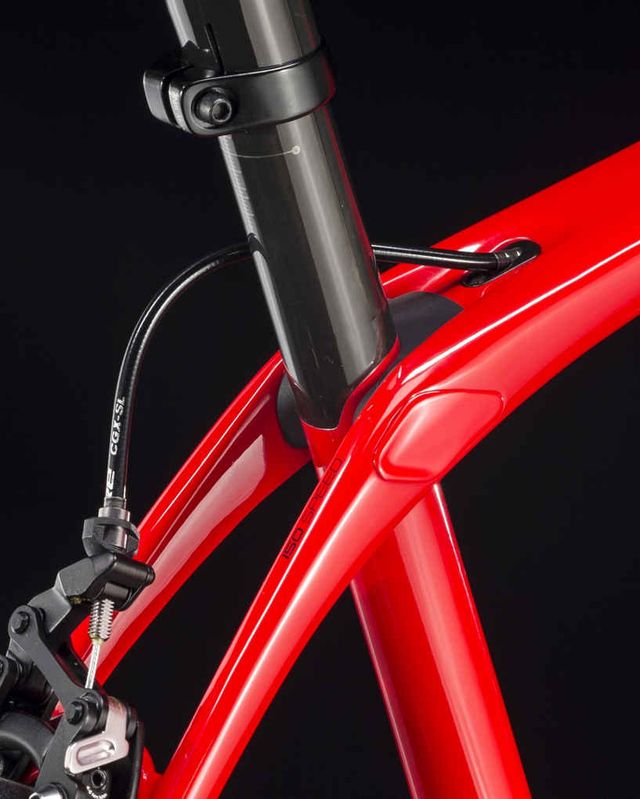
The Secret to Those IsoSpeed Decouplers The SL 6 has a lightweight carbon frame and a front and rear suspension system, called IsoSpeed, that allows it to effectively soak up road noise. Here’s how it works: The front IsoSpeed decoupler on the bike makes it so the steerer tube can flex independently from the head tube, which allows the bike to reduce road vibration. The rear IsoSpeed decoupler has a slider that lets you adjust the compliance level for terrain and personal preference by up to 14 percent. You might not even need to adjust the rear slider to experience the road-smoothing effects of the two decouplers working together—we found that the all-over effect of the bike was fast and smooth performance equally suited to asphalt and cobbles.
RELATED: Trek Finally Launches a True Gravel Bike
Other Component Highlights The full Ultegra drivetrain, with an 11-28 cassette and 50/34 compact crankset, gives you seamless mechanical shifting and plenty of gears to tackle any climb. The SL 6 also comes with Bontrager Paradigm tubeless-ready rims and tough Bontrager R2 700x28mm tires, so you’ve got a solid set of wheels for when you want to test out that suspension system.
RELATED: Trek and Ford Partner to Help Bikes Talk to Cars
Ride Impressions Bringing the Domane SL 6 to a spring group ride feels a bit like cheating—the bike is so fast, smooth, and versatile that it can make you feel stronger than you actually deserve to feel after a long winter of Netflix -enabled sloth. I’ve test-ridden some of the higher-end Domanes in the past (up one of the hardest climbs I’ve ever experienced, Mount Figueroa, in Solvang, California) and had a similarly impressed response, but I reasoned some of my “wow” reaction had to have been tied to how far out of my price range that bike was. To my delight, the Domane SL 6 brings a lot of that same lightweight, road-smoothing magic and X factor to a more affordable price range.
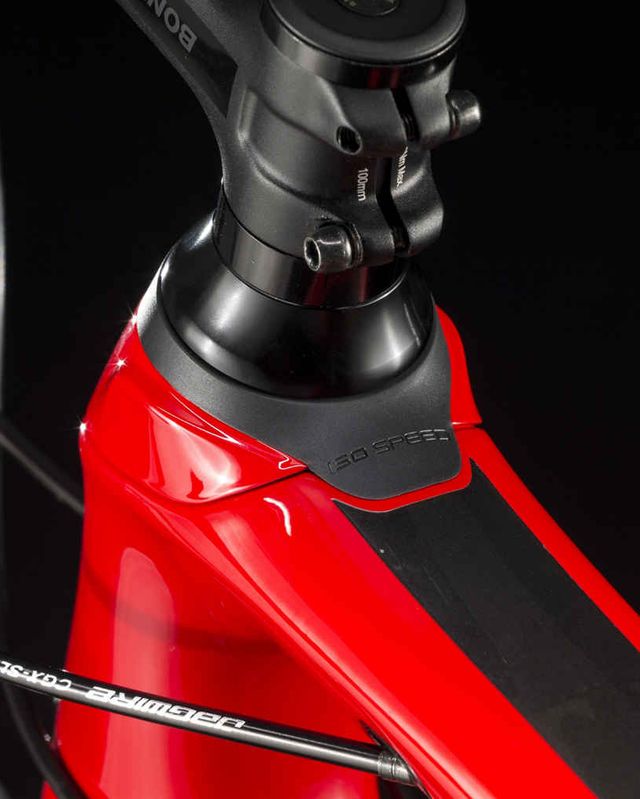
From the moment I hit the first loose-gravel climb on one of my usual lunch routes, I was sold on the bike’s seamless Ultegra shifting and talent for soaking up road chatter with IsoSpeed suspension. Big bumps in the road still jarred me, but the washboard ruts didn’t throw off my handling or rattle my shoulders too much. The endurance geometry helped with that, too—long rides were as comfortable from beginning to start as you can expect, without any sacrifice in speed. And the Bontrager R2 28mm tires were great on both smooth asphalt and rough gravel.

.css-1t6om3g:before{width:1.75rem;height:1.75rem;margin:0 0.625rem -0.125rem 0;content:'';display:inline-block;-webkit-background-size:1.25rem;background-size:1.25rem;background-color:#F8D811;color:#000;background-repeat:no-repeat;-webkit-background-position:center;background-position:center;}.loaded .css-1t6om3g:before{background-image:url(/_assets/design-tokens/bicycling/static/images/chevron-design-element.c42d609.svg);} Bikes & Gear
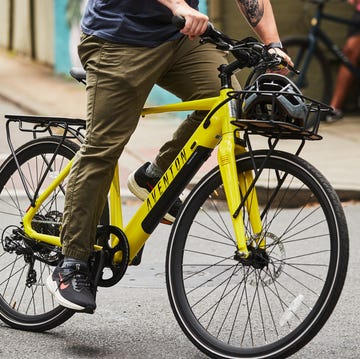
The 7 Best Cycling Shorts for Women

Everything You Need to Know About Bike Bags

The Best Bags for All Types of Cyclists

Reviewed: BMC's Fourstroke LT

New Specialized Chisel Full Suspension Reviewed

Little Bike, Big Attitude: Scor’s 2030

The Best Chain Breakers for Your Bike

The Best Commuter Bikes for Getting Around Town

Your Next Bike Should Be Custom

The Best Bike Locks for Every Scenario

The Best Cycling Shoes for Efficient Pedaling

IMAGES
VIDEO
COMMENTS
The new Domane is everything great about the old bike, plus lighter and quicker. The Takeaway: Trek's best road bike gets faster, lighter, quicker, and better. Weight: 19.7lb. (SL 5) to 16 lb ...
The Takeaway: Higher performance, more features, more versatile: The third generation Domane is one of the best road bikes you can buy right now. Clearance for up to 38mm tires. Internal storage ...
The 2023 Domane+ marks the first time Trek has used its top-end OCLV 800 carbon fiber content. Combined with the integrated down tube battery - meaning there's no need for a large hatch - Trek claims to have lopped 450 g from the previous Domane+ chassis. Claimed weight for an unpainted 56 cm frame is around 1,250 g.
Trek's Domane+ SLR is genuinely an all-new animal for road riding. Trek uses its newly updated Domane frameset and the TQ (Technologie in Qualität) HPR50 to craft an all-road e-bike that feels traditional but is anything but.. Photos: Jordan Villella. The design focus for the Domane+ SLR was to create an e-bike with natural road bike sensations with a seriously impressive weight-to-speed ratio.
According to Trek, the fourth-generation Domane frameset sheds about 300 g (0.66 lb). Claimed weight for a painted 56 cm frame is 1,193 g, and the matching fork adds another 427 g - still not exactly feathery, but not bad at all, particularly when you consider all of that IsoSpeed hardware hidden inside.
Max tire clearance is a quoted 700c x 38 mm. A new Domane SL frame weighs a quoted 1391 grams, 300 grams lighter than the previous Domane SL. Domane SL features a rear IsoSpeed decoupler to improve seated comfort, though it is no longer adjustable. Domane SL is available in seven sizes to fit riders between 4'11" to 6'5".
The model I'm testing is the Domane SLR 9, with a full serving of top-tier components and a top-tier price to boot: £13,400.00 / $13,199.99 / €14,499.00. There's no getting around it, that's an ...
Trek Domane 4.5 - A High-End Frame and Smart Build Kit. The Domane was developed with considerable input from Swiss pro cyclist Fabian Cancellara, who is known for his steam-engine riding style, using his massive power output to crush cobblestones in the fabled Spring Classics.He is said to enjoy the bike so much that he rides it year-round, even in the Tour de France, choosing it over Trek ...
Trek Domane SL 6 review. ... The Trek Domane SL 6 is a do-it-all bike that offers amazing comfort over long distances. It may not be the most sprightly bike out there, but it's a versatile machine ...
The Domane+'s TQ motor system delivers assistance smoothly and runs quietly, making for a bike that feels at home on any kind of road ride. The bike's biggest downside is the very high price ...
This bike was tested as part of our 2023 all-road group test - you can find an overview of the group test and the featured bikes over here: The best all-road bike of 2023 - 10 all-road bikes in review. Trek Domane SLR 7 AXS Gen 4 | 8.54 kg in size 58 | Manufacturer's website
Trek Domane SL6 review | BikeRadar
The Trek Domane SL7 is a versatile and comfortable road bike that can handle any terrain. Read our review to find out how it performs on climbs, descents, and rough roads.
Discover the comfort and performance of Trek Domane AL 2, a versatile road bike for beginners and enthusiasts.
The 2019 Domane+ is the electric version of Trek's popular Domane, a bike highly regarded for its ability to smooth out rough roads. ... Bike Reviews. The 10 Best Cheap E-Bikes You Can Buy Right ...
The new Trek Domane SLR comes with a slider down the side of the seat tube that lets you alter how the bike feels, altering its comfort depending on terrain Cycling Weekly EST. 1891
The new third-generation Trek Domane is a far cry from the endurance road bike it was when it first debuted in 2012. The Domane was once more of a toned-down road bike with ultra-stable handling, a very relaxed rider position, and semi-wide tires — this new one is a thoroughly refined all-road machine with gobs of tire clearance, an even more refined ride quality, a T47 threaded bottom ...
It's even adjustable at the rear, allowing you to adapt the damping to the rider's weight. Moreover, the Trek Domane SLR 9 is the only bike on test to feature Shimano's new DURA-ACE Di2 groupset, though it's also the most expensive bike on test by far, priced at a whopping € 12,099. The combination of a 50/34 t crankset and a 11-34 ...
How does the Trek Domane+ compare to other electric bikes on the market? Find out in this comprehensive review by BikeRadar, where they evaluate the bike's design, battery, motor, ride quality and ...
The Domane 2.0 is supplied with 25mm Bontrager R1 tyres. At first glance, on dry roads they seem like a decent idea. But at the first hint of rain or greasy roads, I didn't feel comfortable leaning the bike over in fast corners at all and found that the wheels would lock up rather too quickly for my liking.
Discover how the Trek Domane SL6 eTap combines smooth riding, wireless shifting and endurance geometry in this BikeRadar review.
Trek 2022 Domane SLR Fork. Be the first to write a review! $399.99. Model W5288010. Retailer prices may vary depending on location and delivery method. The final price will be shown in your cart. The fork you need. Compare. Color / Dark Prismatic ; Finish / Gloss.
Price: $3,200. Weight: 17.1 lb. (56cm) Use: Road. We've long been fans of Trek's Domane line of endurance race bikes; previous versions have won our Editors' Choice awards and received unanimous ...